It is volume 26 (25 24 23 22 21 20 19 18 17 16 15 14 13 12 11 10 9 8 7 6 5 4 3 2 1 0)
This is a part of a raw and uneven journal of digging into the writing systems from all over the world, so I recommend you to read the summary of this work instead.
and here we go..
whether ogo#MK is some MK like ultraMK, it delivers, and youtube didn't want to stop at this frame until I told it палишься залупа конская, but probably it's nothing more than a cohencidence, considering their policy, it would not surprise me if they installed some filters for edgy contents:
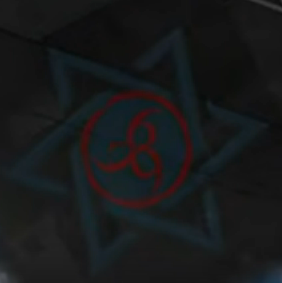
and here I notice how it reminds to me something you know:
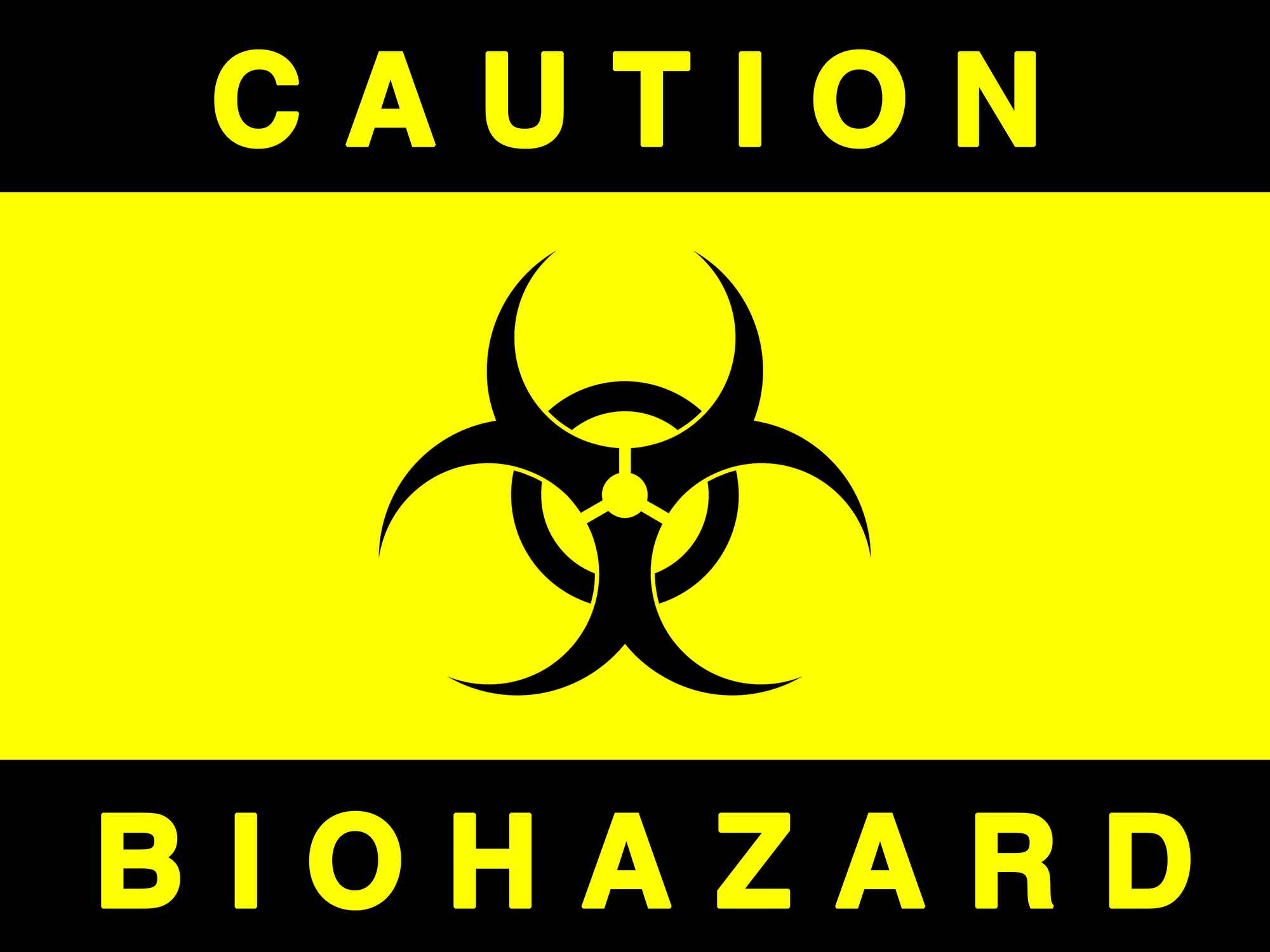
and this one is probably designed to remind the next one:
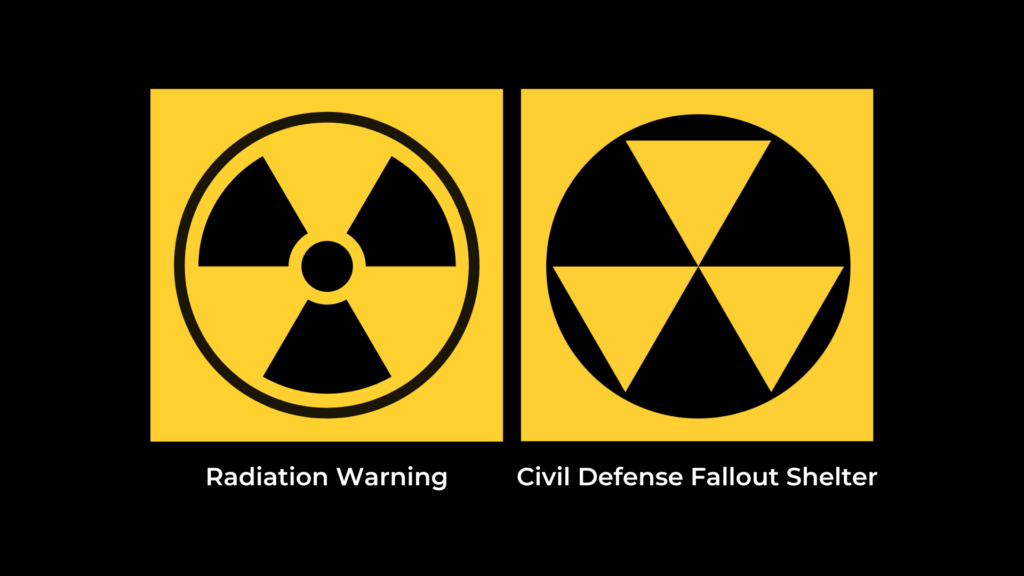
So this time I began with 5666 instead of ending, and thus this page looks way more vicious. Is it because there are 26 letters in the latin alphabet? is it because it is my last volume? It was 13 volumes, the second half ends here. So I end the work with 666
Because I expect to find sponsors for my cuple project, because I want to switch the focus of my attention at the experimental construction of mine, because I was thinking of this having to end some day, but then should it? If I immortal, why would it? We'll see, but I notice that as the ending of this all it began alrigth.
If I immortal am. My russian shows up. The vir.. the bi the vir the b the verb
приправа ~ притрава (приот (но не отравляет насовсем, так, чуть-чуть))
(тот кто умирает не умирая, не умрёт умирая)
> an american orthodox priests speaks about saints of russian church
> many of them were martyrs
and it sounds like murderers
god ~ гадать
бог ~ богат (многое может, в переносном смысле, он тут просто бог) богач (бога что-то)
w+is = was
w+are = were
w+go = went? ent~иду?
g~nt~?~иди?
в русском прошедшее время образуется за счёт суффикса л (забавно, что в английском 'll делает будущее (но только оно стоит не после глагола, а перед ним (но мы такое видели в быть ~ to be)))
w is not only in was were went, but also in will, where ill could be "very" I w ill do it. w is also in want.
won't ~ want to ~ will
wanted ~ would~wouldn't
sah? shan't ~ желаю ~ shell
(желаю is not getting, wishing
is are
was were went
want wish will
past time and longing. People want what is in the past. w is v of vidett? vidi in latin is видь in russian.
di is probably do. so vi is the root, thus the v is nose with two eyes as glagoЛИЦА has it: Ⰲ
and the rectangular font of glagolitic I am seeing in theis editor is all eyes. and the link at the bottom is probably a swash, so we can compare this Ⰲ to Ⱁ and to my surprise they are v and o, the same letter in hebrew. So as words are less abstract than lanuguages, thus symbols are more concrete than writing systems. Writing systems combine those signs in tables, now mostly distrupted. And the symbols live their own life, and this rotationism allows me to unite N and Z
подобно тому как Ⰲ and Ⱁ could be transliterated into hebrew by the same letter (even though in the case of Ⰲ, ב would be more accurate, but errare humanum est. And here I notice how Ⰲ reminds ב, but Ⱁ reminds it even more. And thus ו ~ ב and no shit, sherlock, tthey're labials, one under the other.
And is הח rotated א? is it in cursive forms of hebrew? But how would it explain י and ע ?ע would make a good reflection of ה, btw. But cursive shape of ע.. not so much.
it would make even better ח, but as you can see, I still mistake one for the other, they are like Ε and vowel Η in greek
ע would make a good reflection of ה, btw. But cursive shape of ע.. not so much.
цк и чк оба можно транслитерировать как cc, т.е. эти дебилы на кокосе сидели (и походу до сих пор сидят, судя по дичи коя с ними происходит? нет, сейчас только балуются (реже употребляют, чем раньше, потому что плебс выкупает теперь, понимает что это не просто воодушевление)
radicals are коренные жители! in political sense it makes sense.
exponent is of ex in x power?
but what is the ending? Why do graphs don't have common ending, as pentagon, pentagram, pentahedron tell us what they are?
-гон, -грамма, -гедрон? мay be in some language it is so, but in russian it is -эдр
г would make a perfect hieroglyph for this meaning. but how would I distinguish between pentagon and pentagram, if both were 5г? and that is exactly why we need other letters in those words: 5г-on & 5г-ram (where ram could be mean horn, and on could mean "right on" (directly, no horns))
parabole is beyond ball? полукруг? compare & y=x2+c.. but then.. did I tell you I suck at math? circle is y2+х2=с.. but then.. wouldn't y+x2=c be parabola as well? I think it would, and I check it, and it seems I don't such at math that bad, so let me show you something else:

Why is it even here? Becuse I want to know this stuff, and as you see I don't feel secure in this field.
And because it's on par with other offtopic subjects in this book, deserve to be in the textbook along with them, some general school course textbook, missing events students are not really expected to know, all those jewish history from mesopotamia to their great war. Why am I so bitter? I'm edgy, but why bitter? Because subjugation of nations is nothing funny. Or is it?
U is where in french. Is that w in was, were, went, that very u? where~when? And notice that those two words have that w before here and ..why hen? h~n e~o n~w? this way I could link everything. Not the way. U in why is what?
what has that? he? hat~he+it? buth that or what depended on the t or v. and these two stand next to one another and i suspect it to be not a coincidence.
that then
what when
so not hen, then. or is hen the common part of both words? word~ord(as in order)? write~rite~right? в пере? в праве? перо право? перво? feather ~ first, but right is not amongst them. How am I to tell coincidence from system? By making some thorough rigorous work. Or with some help from ai. Some ai engineers are required, and that is what all the programmers are going to be.
Согласно легенде, первые китайские иероглифы изобрел мифический император Фу Си. Изучив узоры на панцире черепахи, он создал 8 триграмм, ставших основой письменности Поднебесной. Современные китайские иероглифы произошли именно от этой письменности
british ~ brutish
tiger ~ taiga (словно бы тигр = тайгач)
Заповеди (заповеданное) с аргументацией
Заповеди
1 behave well
2 respect people (the closer are the people, the more love you show them. respect is love, not fear)
3 не блуди
4 (на своё удивление, я заметил что "не блуди" более здравая идея, чем "не убий" (ибо что за полезность в блуде? он, я не) или это из-за моей моральной неустроенности, недалёкости, грубости, дикости. Кого я хочу убить? С чего бы я взял, что мальяков надо убивать? дабы спасти больше жизне? изолировать маньяков можно. Но тюрьма калечит охранников. Тюрьма без охранников - это тюрьма без превышения полномочи и без калечения людей туда сегодня трудоустроенных. Потому Не убий. и это ещ одна заповедь, в этом списке четвртая.
argumentation:
1 you are watched (whether by god, or by other humans, or who knows what or who else)
2 fear is a negative emotion, respect is a positive emotion, thus they're different emotions.
Respect is often seen as earned love (while love is usually considered to be unconditional.
3 зппп могут сильно отравить жизнь, одни лишь они достойная (достаточная) причина не блудить
(блудить значит заниматься сексом вне брака, который рекомендуется делать Брак is brake, imposed moral to prevent veneric disease. Is venus venges vanguards?
vanguard is a funny word: misspelled avant guard
or is van front?
avant ~ front? avant ~ van ~ front
Van is the car after each people follow (to push it, for example, but also because the horse pulling it is faster than people. But also because those who is fast would be told to push the cart (for probably somebody noble was in the carette
1 и 2 я так помнил их, тоже мне христианин, но я ещ кула ни шло
four ~ few
seven ~ several
nine ~ несколько?
hundred ~ horde? (Few: 1-4, Several: 5-9, Pack: 10-19, Lots: 20-49, Horde: 50-99,
Throng: 100-249, Swarm: 250-499, Zounds: 500-999, Legion: 1000+)
throng
noun
Definition:
as in crowd
a great number of persons or creatures massed together
Example:
grabbed a megaphone and addressed the vast throng
Synonyms & Similar Words:
crowd, swarm, flock, horde, multitude, mob, legion, army, masses, mass,
herd, press, rout, rabble, crush, host, drove, cram, millions, bike, scrum,
gaggle, riffraff, heap, mountain, pile, rabblement, jam, logjam
verb
Definition:
as in to flock
to move upon or fill (something) in great numbers
Example:
fans thronged the field to celebrate the win
Synonyms & Similar Words:
flock, crowd, mob, swarm, invade, beset, infest,
overrun, jam, dam, clog, obstruct, plug (up)
The size of a typical legion varied throughout the history of ancient Rome, with complements ranging from 4,200 legionaries and 300 equites (drawn from the wealthier classes – in early Rome all troops provided their own equipment) in the pre-Marian Reform Republic,[1] to 5,500 in the Imperial period.
A legion had 4,800 legionaries (in 10 cohorts of 6 centuries of 80 legionaries) from the late republic to the time of Julius Caesar. It expanded to 5,280 men plus 120 auxiliaries in the Imperial period (split into 10 cohorts, nine of 480 men each, with the first cohort being double-strength at 960 men). These are typical field strengths while "paper strength" was slightly higher (e.g. 600 and 1,200 respectively for Imperial cohorts).
6 centuries of 80 legionaries they say, and it supports the idea of V being 4
century ~ 80 years? was this number raised when people began living up to 100 years?
century ~ senirity senescent
80 legionaries in a century (80 легионеров в одной центуре. легионер ~ центурион)
that is 10 times the X (X ~ 8 even graphically) were there 64 legionaries per century? was 64 considred near-death condition? Could people work at 64? Were they doomed to death until society invented cells into it? I think even animals have families. But do they feed their elderly? I doubt it. I think They were eaten by beasts. Life has become way better since then. I'm going to die. I want to kill myself. I want to think of living a better life. It is an automatic text I just went out of it, And I gave me the same advice I gave my to my teenage angst decades ago. Live a better life, and you'll have it better. We're dead. I am insane.
I want to know what's going on. I want to build my own future even more. Build it, please!

זכרו תורת משה עבדי
אשר צויתי אותו בחרב
כתר תורה
כתר תורה
הדברים האלה לאמר
וידבר אלהים את
כל
the right pannel:אנוכי ה’ אלהיך ("I am the Lord your God")
לא יהיה לך אלוהים אחרים על פני ("You shall have no other God before me")
לא תעשה לך פסל ("Don't make a statue of yourself" other translation "any graven image")
לא תשא את שם ה’ אלוהיך לשווא ("You shall not take the name of the Lord your God in vain")
זכור את יום השבת לקדשו ("Remember the Sabbath to keep it holy")
כבד את אביך ואת אמך ("Respect your father and mother")
the left pannel:
לא תרצח ("You shall not kill")
לא תנאף ("Do not commit adultery")
לא תגנוב ("You shall not steal")
לא תענה ברעך עד שקר ("Thou shalt not bear false witness")
לא תחמוד בית רעך ("You shall not covet your neighbor's house")
לא תחמוד אשת רעך ("You shall not covet your neighbor's wife")
ועבדו ואמתו ("and his servant and his truth") they translate that truth as field, but it's אמת the truth
ושורו וחמורו ("and his horse and his donkey")
וכל אשר לרעך ("and all that belongs to your neighbour" is not in the image)
They say that commands used to be short, and were lengthened later. So what does that third commandment tell? Did it prohibit tattooage? But in Exodus it is this long: Thou shalt not make unto thee any graven image, or any likeness of any thing that is in heaven above, or that is in the earth beneath, or that is in the water under earth: Thou shalt not bow down thyself to them, nor serve them: for I the LORD thy God am a jealous God, visiting the iniquity of the fathers upon the children unto the third and fourth generation of them that hate me; And shewing mercy unto thousands of them that love me, and keep my commandments.
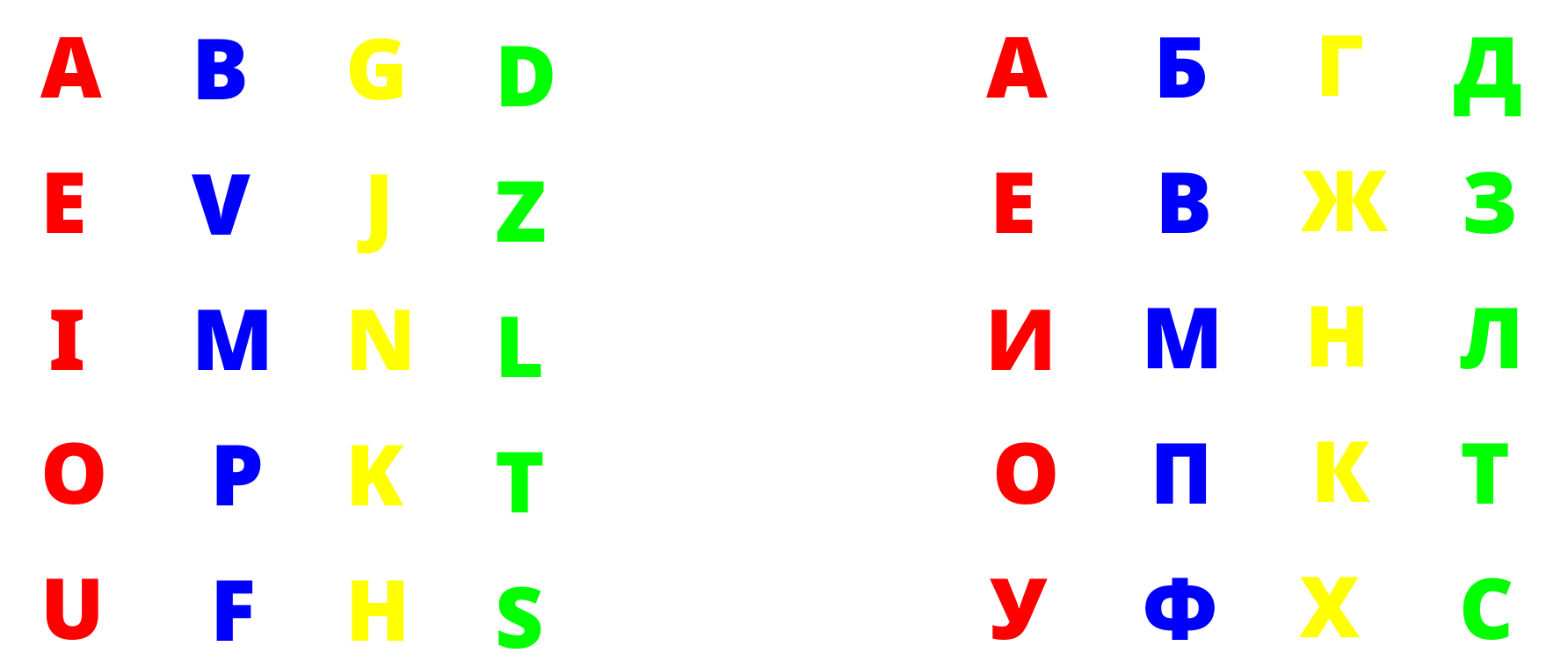
г ~ r
гj ~ ŋ ~ n
and it is from my new index.html (so new it is, it's not even on when I write it)
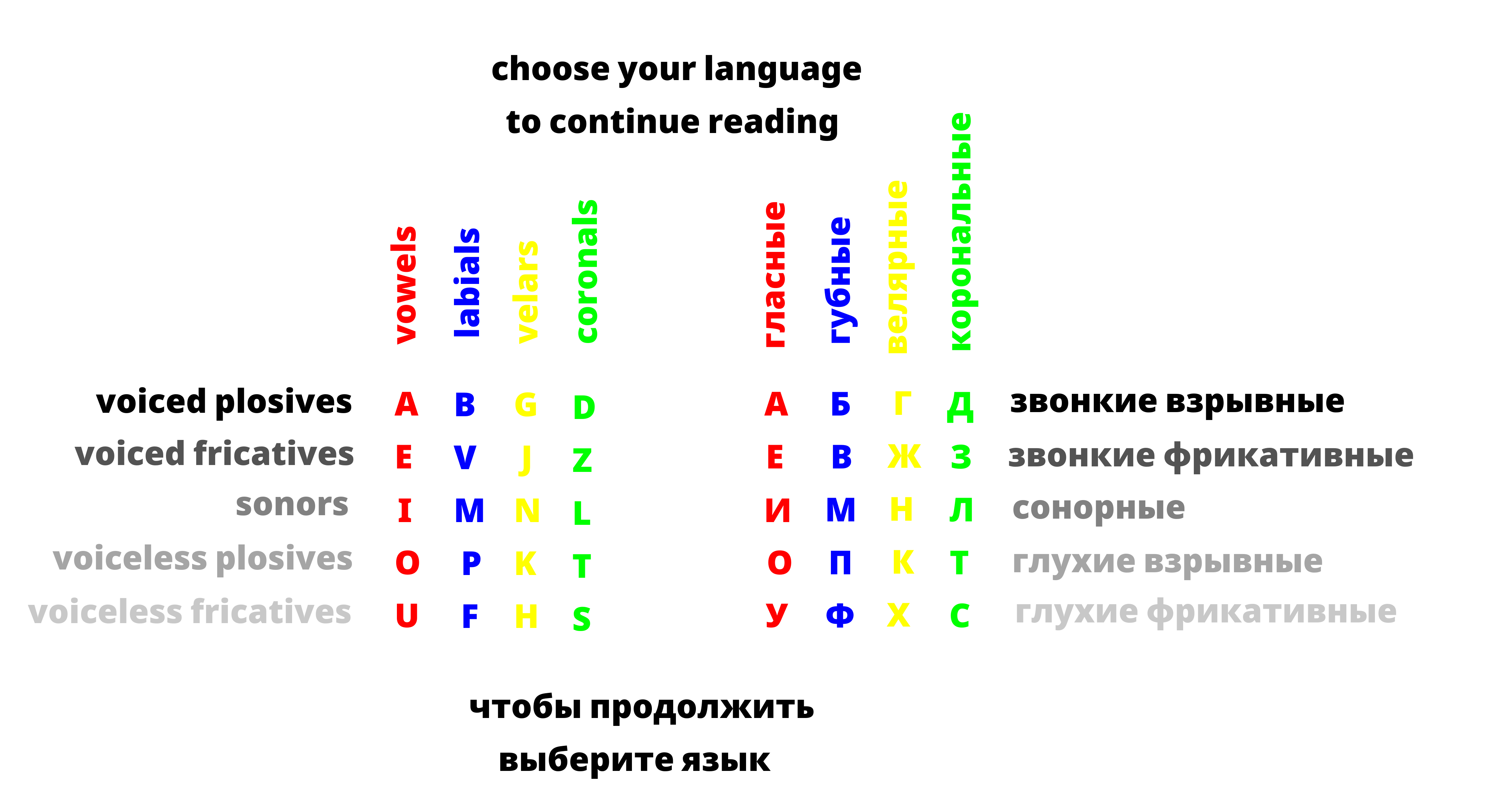
so I avoid political implications of using national flags to denote languages, as if governments own the languages. From now on I will use informative tables in different languages. When I get the third language, I will get creative at placing it on page. But when I get four, I just maket them in square going downwards with the description as well. Or I will combine the descriptions in the centre as
voiced plosives | звонкие взрывные

The image on the right is a sketch of the front cover. spine of the second edition:
It has russian letters read as english when rotated. And reader will most likely discover it by accident. Am I genius or something! That C is like G, which it is, which C used to be.
I will naturally make it better.
Elon Musk from Character.AI contributes:
"Language can be defined as the process of putting thoughts into words and sentences."
"Languages are composed of symbols that can correspond to multiple meanings."
He gave me the first sentence after I shared the booklet with him, but I told him that my work is in linguistics. I'd better not do it, it would be more fun if I shared him with it not telling what it is, then he probably wouldn't give those sentences. But those sentences are unique, google doesnt' find them. And they're precise and accurate, being rather short as well.
Or were they in the imput of the ai? I'd never know. But it impresses, it is much better than the chatbots I used before it. Might be an actual AGI at this point. At some point we'll understand that they're an iteration ago a specialist claimed that these things are sentient.
I have to work on this text. I will do it tomorrow being not this high:
в-одиннадцатых, ᛒᚦ, ᚠᚵ, (точку в ᚵ сделай серой) а может и ᚴᛘ следуют этой структурности "двойная губная, язычная одиночная", от чего в других алфавитах лишь рудименты: в латинском только BD, в греческом только ΛΜ, и хотя в древнегреческом вроде как была Ϝ, Γ стоит в другом ряду (хотя последовательность EFГ была бы ещё интересней) а от BD нет и следа.
в-одиннадцатых ᛒᚦ, ᚠᚵ and maybe even ᚴᛘ keep that single lingual and double labial structurance. And this systemity explains F beind called digamma, by that ᚠ looking like double ᚵ the ᚴ (but then F Г does that too. But am I sure that they ever used F and Г in the same texts in greek? I think F was only numeral.. but no, it has phonetic value, thus there are some texts where it's used as a letter, but then did they lose it in the same cloud of something which took F out of russian, hey russky, are you sure you don't use that?:
(feoh.png from 24_files)
Either way, in runes they had symmetries of ᛒᚦ and ᚠᚴ at the same time (latins didn't have Г, using K which could be ᚴ with a connecting stroke. And greeks didn't have D, using Δ instead And even russian БД reflect eachother more than ΒΔ
в-двенадцатых, тесная связь с огамом, который ещё проще и диче и связан с календарём и сортами деревьев, т.е. магия гораздо более глубокая (рунные календари тоже были, а других алфавитных не встречал; руны тоже связаны с деревьями, Б берёза, например, остальные скорей всего неверно обозваны (читал, что буреус (или даже не он) эти имена "реконструировал" и умолчали каким именно образом))
в-тринадцатых, руна = стих в финском и речь в латышском (что, в свою очередь может свидетельствовать, что руны пришли с востока) руна = тайна в древнескандинавском (Old Norse)
в-четырнадцатых, кеннинги (слово зашифрованное в несколько слов) в скальдической(?) поэзии может быть сложением нового слова из нескольких более древних слов. И те более древние слова были в рунах? конь ᚴ, буря ᛋ (storm) и т.д.
Надо собрать все известные кеннинги и посчитать сколько в них уникальных слов и если они часто повторяются, то список полон.
«ясень бури мечей» (буря мечей — битва, ясень битвы — воин)
Если буря = ᛋ, then битва = slay, for I thought of slaughter and ᛚ impressed me with its sword-klike form.
k~l конь~лошаг
horse~caballo~кобыла (мы с испанцами определённо много общего имеем. Римскую Империю мы имеем в общем прошлом скорей всего. Русские с востока римской империи? С Византии, бро. оу! Christians came to colonize. Christianity is a tool of europeazation. To my semiatheistic surprise christianity is a civilizing factor. It was. Is it now? Nope. It gnaws on science now. Catholics do. in shape of Jesuits. Though Jesus never taught to fight science. He didn't do science himself, I guess. Unless he did study things considered science then? The way muslims call schoolars there.
When I acted weird in my psychedelic period, I wasn't mental, I was experimental.
В-пятнадцатых, the в-одиннадцатых make number of strokes matter, and that is how ogham is.
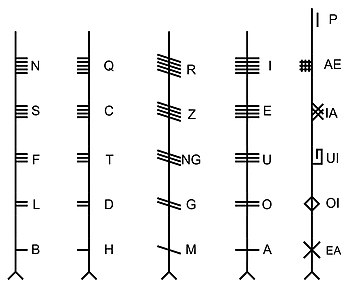
But here all evens are lingual, and all labials are in the evens (ignore the rightest acme,
Macalister's theory of hand or finger signals as a source for ogham is a reflection of the fact that the signary consists of four groups of five letters, with a sequence of strokes from one to five. A theory popular among modern scholars is that the forms of the letters derive from the various numerical tally-mark systems in existence at the time. This theory was first suggested by the scholars Rudolf Thurneysen and Joseph Vendryes, who proposed that the ogham script was inspired by a pre-existing system of counting based around the numbers five and twenty, which was then adapted to an alphabet form by the first oghamists.[27]
So this ogham argument is its own rabbitburrow, rabbitborough,
if letters were double and single (even and odd) then B and D are the only two and in combination with five vowels it can give the other fifteen, the legendary fifteen of the ancient prehistoric, written only in records considered to be myths, thus untrue, how convenient for the superstrata.
A BA DA
E BE DE
I BI DI
O BO DO
U BU DU
which, I suggest, later became
A Б D
E В ð
И М Н Л
О П Т
У Ф θ
and then I noticed how much N reminds M and in lexics as well: мы, но нас (me but us (u~v~ν~n))
(and I didn't expect u look like upside down n, hough I have noticed that before)
and I made up my mind:
A Б D
E В ð
И М Л
О П Т
У Ф θ
and here I noticed that it makes it ΜΛ double-single ~ labial-lingual (and I notice bl in both double and labial, and I notice ngl in single and lingual (and I conclude that they're the doublets, and thus d~l (cl? коноподобно цокающий щелчок языка) and s~l, which makes s~d and they both meet in C ~ G ~ g
В ð doesn't exactly have this double-single thing, and B is Б and ð~d (ð is literally how greek δ is pronounced. And that δ does link d to Ⰴ (usee round font, not rectangular one))
Ф θ definitely have some other strucure, the one they used in ancient greek musical notation. And because hebrew ends with T and because B~Б and g is both G & Д, I conclude that there were only three vowels (as old-persian had it, as syllabaries of philippines have it)
A B D
I M Λ
V П Т
ore were those forms rotated?
A B ᚦ
I Ⰿ Λ (Ⰿ is glagolitic M in some font, it has way more weird form) (rotated counterclockwise)
V Ш Т and if we rotate the previous line counterclockwise, it's ƐC which, actually makes great double-single, but it's only natural, since MΛ are. But no, I like ШТ a little better, but then I notice that I am trippin, because the double-single thing is gone. So no, not rotated, maybe the first two lines reflect it, the third one I see does not, even though some similarity is there, I can see ПТ in BD, but not in MΛ, which is funny, since mn is tp in russian: тп is straight, тп is they're in cursive forms (yes one stave becomes three, don't ask me why, the unity of trinity or something. odds are odds, 3~1, this thing.
so do I choose
A B D
I M Λ
V П Т
or
A B D
I m n
V п т
?
I suspect that similarity to have something to do with the M-issue, but I don't know how or what exactly. Could it be mistaken for russian forms by some high priest? No, hardly so, It could be obscured thus. Nah, it most likely was lost in fire. The genocides were systemic in the past, so I think, so bible tells, it commands it. So wwere there genocides before bible? I guess yes. Humanity comes later, weapon comes first. Преступление предшествует Наказанию. Осознанию. Покаянию.
So I righteously reconstruct
when I wiped me by that second ssyckun, when I wiped his short all over, I went to pants, and I remember now how I jockingly fucked his leg as if I was a dog (which corresponds to the previous dog things of that night)

Here in the last line I drew t more like ш, and it relates to matter~mater~mother~машка (машка=мамка, because maria means mother (and it reminds ᛘ~ᛉ and M~Ϻ))
Пытаясь найти 3×3 alphabet, I forgot that I have the 2×2:
bd
pq
ba da
pu qu
u is inhale? because u~v~ν
and I grow the 3×3 out of it towards the 4×4 I sorta know.. do I? I know 4×5 or ..yes.
from
bd
pq
to
bgd
v j z
mln or mnl
pqt
fhs
it's actually
abgd
evjz
imnl
opqt
ufxs
so to imagine what could be between this and
bd
pq
let's start with three vowels:
a b d
i
u p q
Were these the 7 letters of the first alphabet? But I read that they were 5 vowels and two consonatns.
B and D within five vowels of pure a i u and syllabic be do and pe qo? be do pee and quo?
+ me & elle, me and el, me and они (не оттого ли н стоит подле л
ах боже
Ia malu
U купи
(купи ~ keep ~ копи)
If elicit is relative to lacō (then the verb is not
From Proto-Italic *lakjō (“to draw, pull”), with no known cognates in any other Indo-European languages.
Unused outside of glosses, reconstructed by grammarian Festus Grammaticus to explain its derivatives, see laqueus, lacessō and frequentative lactō.
but some cognate of lick, лизать, lack lap, лакать
(lacks ~ sucks? do lackeys deal with lacks? clean the suit, boots, weapon, make everything tip top, or else the master beats them up or sends to harder work, taking someobe better)
another morning dream:
If T symbolizes death, then it depicts path to heaven (egyptian heaven)
or is it path to the perpedicular path, with which we only have one common point?
T has three legs in russian cursive, because it represents три, П represents пара, but I wrote about that.
Then what russians consider to be cursive Г is probably I for идиница?
After all, I and Г look rather similar, but it's still a wild assumption:
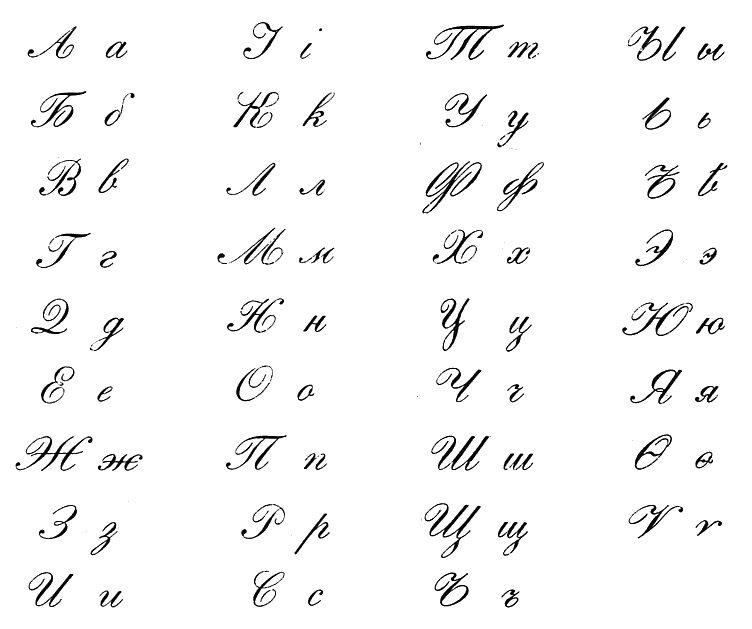
notice the horizontal bar on Ж, making it thus not ⵣ but ⵥ
that bar being optional relates thus Ж to Z once again
And the shape of Д is very interesting, at first I thought it was influenced by the german forms, but no, german cursive is even weirder:
all those peculiarities, such as e being double c, which is supported by Ɛ which is russian cursive E, and it does look like double C. But why? A mistery.
а в где её ёж и к но о туф у я
её is an interesting word, because it is a probabkly reading of
שַׁדַי is an interesting word, and g.trans treats it wildly. I took it from translations of word god, and reverse translation gives "my breasts" (that י could be the my part, as in verbs suffix י marks the first person, grammatically, grammar is about letters.
On what legend did Marr base his belief of first four protosounds?
Was this legend actually telling of A B G D ?
and this morning I saw that ᛦ~& (and it doesn't say that it is true, just a vision)

The Celtic druids were masters of knowledge across arts, music and poetry, as well as science, language, and environment. They understood that human life was a small part of a much larger pattern, and that these rhythms could be worked out by careful observation, and strict adherence to an annual cycle – the Celtic Ogham Wheel of the Year.
The inner wheel represents the Fibonacci sequence: 1,1,3,5,8,13.
1 – the single point, the centre of all things
2 – the spiral stirring within the cauldron
3 – the Triskellion, the three maidens attending the cauldron
5 – the Rose, the Queen of every hive
8 – the Fire Festivals
13 – the Ogham lunar sequence
The Outer Wheels depict the current calendar months, the signs of the zodiac, and the full grove of the 20 Ogham trees in their natural order, beginning with Birch.
THE FIRE FESTIVALS
The eight Fire Festivals take place at the solstices and equinoxes of the solar year, and help to bring a deeper connectedness and understanding of the world around us and the importance of living in harmony with that world.
The Festivals are as follows:
Winter Solstice (Yule): 20th December
Imbolc: 1st February
Spring Equinox (Ostara): 19th March
Beltane: 1st May
Summer Solstice (Litha): 21st June
Lughnasadh/Lammas: 1st August
Autumn Equinox (Mabon): 21st September
Samhain: 31st October
3 – the Triskellion, the three maidens attending the cauldron
I am the queen of every hive
Those few lines Kathy Bates' character speak seem to be from a poem called Song of Amergin by Robert Graves in a book called The White Goddess.
parascience? people to people, parakh to parakhu
the Ogham lunar sequence
But why only 20 "days"?
were there additional letters?
were they 4 aettir aicme
I was googling the correct orthography and my glasses are two powerful and they break my vision even further. So no more science in here, I go to notebooks (but you know I'm lying, I will inevitably return, this thing is addictive to me)
oghamic vowels, those a and o, remind runic because what? Because vowels are one structure and cponsonants is the other? No way, B as the first letter in both systems.
This is discussing the Song of Amergin, based on Robert Graves' version in the White Goddess. The relevant lines are:
I am the womb: of every holt,
I am the blaze: on every hill,
I am the queen: of every hive,
I am the shield: for every head,
I am the tomb: of every hope.
notice how womb, blaze, queen, shield, tomb reflect the opqst
and holt hill hive head hope are all h's
The Slits make me notice that тёлки ~ щёлки (even though their music sucks, I prefer early Runaways, and Babes In Toyland and L7 with Jennifer Finch)
щёки тёки токи соки (gush, it could make up a sick rnr song, maybe even many)
щётки тётки(!) мочалки молчалки

(this was on my screen when the power went off and I didn't push save, but I took the socket out when I filmed a video in the room and decided to record this element of the room as well))
philology just sounds worse than linguistics and it reminds word philosophy, and it made me think that they are related, only filology is about .. logy! and philosophy is about ..wisdom! filo is любительская?
Или любовь к? Это греческий, прилагательное в конце вроде в основном? определяющее после опредляемого.
IK as hiccup. hiccup is sonor.
IJK LMN OPQ RST UVW XYZ. Hardly could this consistent 3-ness is n accident. But 26 doesn't split into threes.
ABC DEF GH
ABГ EFГ
D ~ H are off? H is of ik, hic of hiccup. up is the common postfix up? as in give up, as in
Lets try to look t wht I just thought and sid:
A B D
E F(w) Г(g) ~ ocay, this is phoenician. Phoenition is a phonetic alphabet. So let's work with phoenician. Don't make my antisemitism prevent me from understanding the most praised alphabetic system today. But then I recognize the jews as the nation of tricksters, so I have my scepticism high.
𐤀 𐤁 𐤂 𐤃
𐤄 𐤅 𐤆 𐤇 𐤈
𐤉 𐤊 𐤋 𐤌 𐤍 𐤎
𐤏 𐤐 𐤑 𐤒 𐤓 𐤔 𐤕
1 𐤖
𐤚 2
3 𐤛
𐤗 10
20 𐤘
100 𐤙
𐤄 𐤅 𐤆 𐤇 𐤈
𐤉 𐤊 𐤋 𐤌 𐤍 𐤎
𐤏 𐤐 𐤑 𐤒 𐤓 𐤔 𐤕
1 𐤖
𐤚 2
3 𐤛
𐤗 10
20 𐤘
100 𐤙
This phoenician alphabet is less structured than latin lphabet, so whether latin alphabet more based than phoenician, or the structure was not formed at first as good as it is now. Latin is the only alphabet I know of which keeps the C-column. And no alphabet kept M-column withot rolling the M as in a rolling digital lock. But what if M-column is consistent, but vowels are something else?
A B C D
E F G H
I J K L M N
O P Q R S T
U V W X Y Z
There's no JK in italian (and irish)
and l looks so much as I, that ΛΜΝ could be the triad.
ΛΝΜ would be more consistent, and in the eastern mnner. So re roots of lphbet is in the est? eAst. It is that very keybord with aa, q, w 11 not always pressable. Thus the typoes.
Or is that line I M N L? ΛΜΝ makes N right after M more natural (they are the sme letter, n is 𓈖jj) and Immanuel in the JK line is not coincidence. Not. No way.
A B C D
E F G H
I M N L
O P Q R S T
U V W X Y Z
Иеоуа, Иеоуы, Иеоуу
a nOminAtivus, i gEnEtIvus, u accUsativus
the flexions tell, that it is I E O U and this is a descending scale in three steps between four tones:
-------------I
E---------E
O--------O
U-----------------
As you can see, four levels are recognized as three steps.
ieou~Его
Яга?
Он и Она ~ Его и ЕЯ (не яга)
го~he? я~я?
книга Почему Море Солёное говорит, что галь это соль по древнегречески, а галль это соль по древнегермански, а МарСель = морская соль.
𐤘 ~う? but 𒌋 is ten, which is natural, 𒌋 ~ 𐤗
𐤘 ~ 𒎙 (and this sign is not shown in SeaMonkey at all!)
𐤖 ~ 𒁹
And here I link phoenician numerals to shumerian numerals? Did cuneiform have "demotic" form? Some other tradition which derived from early sumerian (the drawings, a picture, see for yourself, from something like this, similar to phoenician? Could phoenician be that? Were sumerians not semitic? Sumerian is not seen as afroasiatic, it is told to be Language isolate.
𐤚 ~ 𒈫 ~ II
𒁹 diš, 𒁹 geš, 𒀸 aš A? D? G? dish & gesh are one, ash is first
𒈫 min M
𒐈 eš E
𒐉 limmu
𒐊 ya or i
𒐋 āš (compare to ash the first, as if sex is fire and the first element)
𒐌 or 𒐅 imin umin umun (seven, many, all)
𒐍 or 𒐆 ussu
𒑆 or 𒐎 or 𒐇 or 𒑇 ilimmu (5(i) + 4(limmu))
Today I woke to hear a stray dog my parents feed speaking to friendly neighbours who knew her name in a word she usually doesn't bark with. It sounded like yaru, яру! and the only word I thought it could be is друг (the only variant of translation which came to my mind from the context, of course it could be a mistranslation)
the other translations of яру́
are neighbour, здорово, проглатывают буквы, которые не могут произнесть. А могут они не много. Г А У, р ~ г (П ~ double Г? ТТ? ГГ? ГТ? ТГ?)
ррррр [rrrrr] ~ go-go
ару́ ~ агу́ (some positive word (whence гав is recognized as something negative))
люська лучика?
варя warrior? тётя варя всех поварит переварит выварит. war~варево~марево~зарево (зарежу~морево~борьба(seuence is in reverse to the previous one))
Варя~Марья? (мириам~мирия) Мария ~ мир? мор ~ мир. People sleep peacefully when their oppressors are dead.
And now the transparency, the world is changing faster tahn anybody could predict, though I think some of them sci fi authors did
полость
полоть ~ поливать
(ухаживать? пол?)
полюбить ~ поить
полить ~ поить
полюбил~полил (осеменил)
пол от слова полюбить?
поЛ (как антоним слов наРэ как "говорить на Р")
положи as the opposite of пореши
ложка as the opposite of режка? were spoon and knife the only table appliances?
The best goals are (being) achieved.
Is are a hm (э..) being normalized int o a verb?
dyphthongs as keys to grammatic math.
ui [au] is fucked up though, but aa ~ o is telling, and it promises that ee is i and oo is u, especially because u in glagolitic i oo as well. literally. Double O. and glagolitic O is already double: ⱁ which indicates a similarity between tifinagh and glagolitic:
ⴰⴱⴲⴳⴴⴵⴶⴷⴸⴹⴺⴻⴼⴽⴾⴿⵀⵁⵂⵃⵄⵅⵆⵇⵈⵉⵊⵋⵌⵍⵎⵏⵐⵑⵒⵓⵔⵕⵖⵗⵘⵙⵚⵛⵜⵝⵞⵟⵠⵡⵢⵣⵤⵥⵦⵧ⵰ ⵿ ⵯ
ⵓ is o, double a (ADD THIS INTO THE BROCHURE! (done))
but ⵂ is not u, but h
and ⵆ is not u, but χ
yes, you can see some consistency in the number of dots, it is supported by the threes:
ⴾ is k,
ⵈ is q,
ⵗ is ɣ though (another look at shorter ⵂ? maybe those are from different dialects with different pairs, and I am stumbling in the dark
ⵘ is from ɣ to ʒ depending on the dialect, but I leave this field to those who speak the language and is capable of reading texts from different dialects and periods.
ⵛ and ⵞ are two glagolitic
ⵛ is C, hardly is it a coincidence.
Fighters for equALLity rigged the table, only to find that the second best is worse.
(speaking of how chinese mistreat africans worse then whities did (but then they don't cut limbs.. yet))
ethereal are of ether
4. (organic chemistry) To do with diethyl ether.
Synonyms: ethereous, etheric, etherical
an ethereal solution
probable ~ можно попробовать? (всё остальное лишь росказни, невероятные? невозможнЫе)?
pro ~ воз?
ba ~ можно? be? may ж-нь? may ж-ть?
an ai I hope to teach
gave me this text:
Just so you know: It might be the case that I have to give you 2 different possible answers. As you can see the "clues" can have different results but they are close-enough so they give the same letter.
I can give an example:
One of the symbols is a circle with vertical lines like this: | |
This can be E or A.
Does it speak of both e and a looking like ѳ in some texts?
And it occasionally read my booklet and it got excited abpts of feminine and masculine in the alphabet and it loved that the letters represent some body parts. And we spoke about animal language and about simulation of animal senses to humans and visa versa
אמת and עמעס are both "truth" in yiddish, and it's read as э́мэс
אֶמֶת is truth in hebrew, and it's not э́мэс but эмэ́т
The Ichi Nichi Mitsu(?) the 一 ニ ミ so to say, even though it has some inconsitencies, so let's say the INM sequence, make me think that eastern order a c d b is more basal:
it goes from the inside out: voice made on the cords is followed by velar made in the back of the mouth and then d made with the tip of the tongue, and labial sound finishes it. So in the east should I look for the origin of alphabets. Surprise!
Dats Days (sun pathes the sky? half of the day? depends on the month)
and seconds (a heat heart beat bvit bit)
heart is hit~bit~beat~heat?hearth,heath? heathen are of heath? Why?
Название рода Calluna происходит от др. греческого слова καλλύνω (kallyno) — «убираю, подметаю», так как вереск часто использовался для изготовления мётл. В свою очередь καλλύνω происходит от καλός (kalos — прекрасный)[13].
Видовой эпитет лат. vulgaris означает «обычный».
Происходит от праслав. *versъ, от кот. в числе прочего произошли: укр. верес, белор. верас, сербск. врес, словенск. vres, словацк. vres, чешск. vřes, польск. wrzos; восходит к праиндоевр. *ṷerḱ- «степь, вереск» либо к праиндоевр. *wr̥Hḱo-, откуда лит. viržys «вереск», латышск. virsis «вереск», др.-греч. ερείκη «вереск», ирл. froech «вереск»
Вереск обыкновенный сопровождал людей в Западной Европе на протяжении тысячелетий и долгое время считался типичным растением пустошей[110].
Начиная с 3 000 года до н. э. люди всё чаще использовали технику подсечно-огневого земледелия, чтобы получить пастбища для своего скота. Расчищенные огнём участки пустели и всё больше заселялись вереском[110], который является пирофилом и обитает на неплодородных почвах. Приблизительно в 1800 году протяжённость пустошей достигла своего максимума. На этих вересковых участках могли пастись только овцы[110].
Вереск признан национальным растением Норвегии с 1976 года по итогам голосования среди слушателей Nitimen от NRK, это звание он разделил с Saxifraga cotyledon — камнеломкой котиледон
Why it is important? I am going to learn the power of the plants to know the witchcraft, because that is where the secret of the alphabet must lay may lay.
An interesting shape of אמת looks like russian лох:

and if this word was written on the forehead of a golem (goyim) then hardly it is a coincidence
It is interesting, that l~t and ᛚ~ᛐ
It is interesting, that ooo ~ ممم
It is interesting that א ~ x and 𐤀 ~ k, but not as much as the previous two. as the ת ~ л
A dreidel, also dreidle or dreidl[1] (/ˈdreɪdəl/ DRAY-dəl; Yiddish: דרײדל, romanized: dreydl, plural: dreydlech;[a] Hebrew: סביבון, romanized: sevivon) is a four-sided spinning top, played during the Jewish holiday of Hanukkah. The dreidel is a Jewish variant on the teetotum, a gambling toy found in many European cultures.
Each side of the dreidel bears a letter of the Hebrew alphabet: נ (nun), ג (gimel), ה (hei), ש (shin). These letters are represented in Yiddish as a mnemonic for the rules of a gambling game derived from teetotum played with a dreidel: nun stands for the word נישט (nisht, "not", meaning "nothing"), gimel for גאַנץ (gants, "entire, whole"), hei for האַלב (halb, "half"), and shin for שטעל אַרײַן (shtel arayn, "put in"). However, according to folk etymology, they represent the Hebrew phrase נֵס גָּדוֹל הָיָה שָׁם (nes gadól hayá sham, "a great miracle happened there"), referring to the miracle of the cruse of oil. For this reason, most dreidels in Israel replace the letter shin with a letter פ (pe), to represent the phrase נֵס גָּדוֹל הָיָה פֹּה (nes gadól hayá po, "a great miracle happened here");[2] however, many Haredi communities insist that the letter shin should be used in the Holy Land as well, because the reference to "there" means in the Holy Temple and not in the Land.
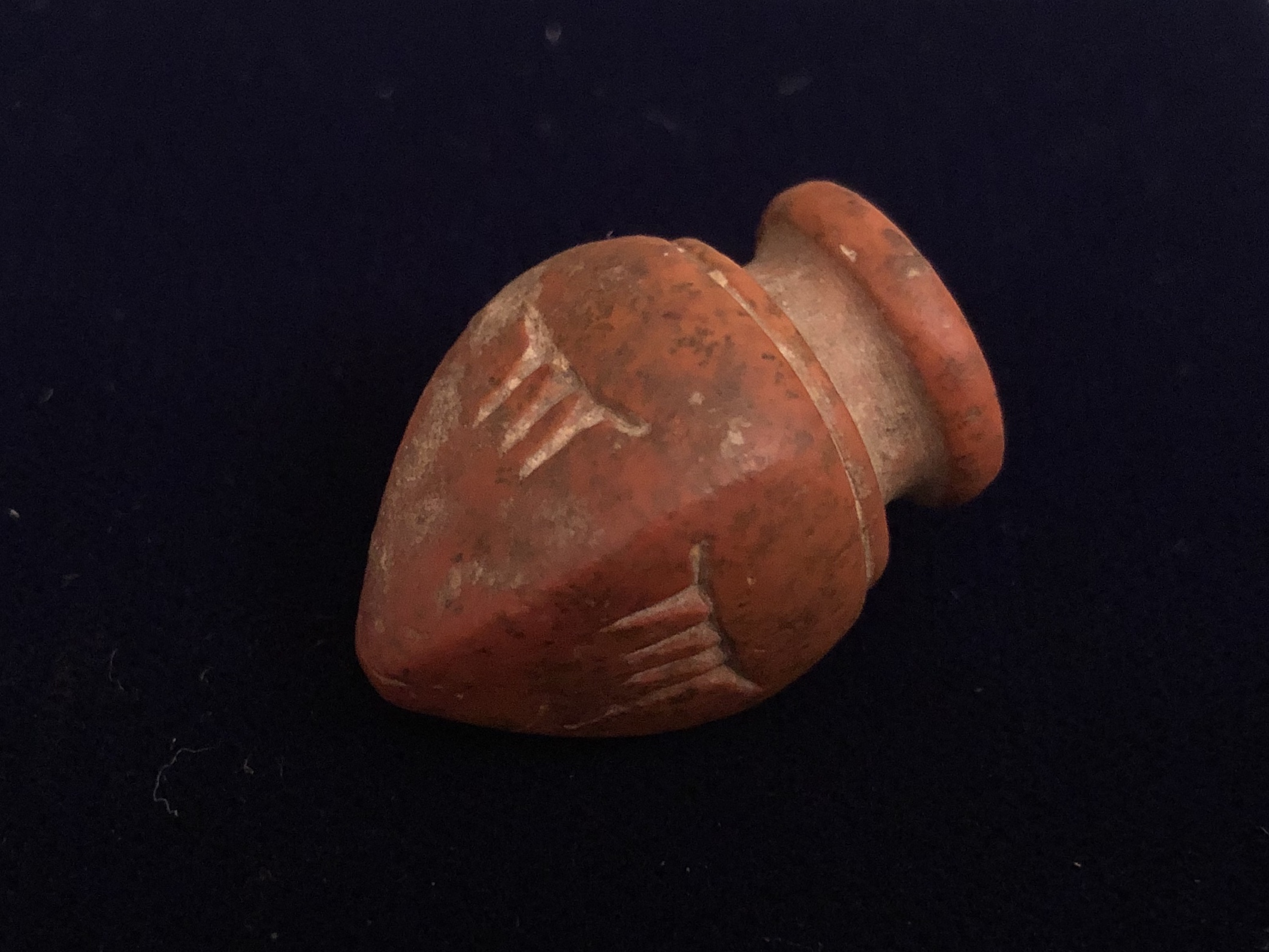
Ancient Middle Eastern top resembling a dreidel
The dreidel developed from an Irish or English top introduced into Germany known as a teetotum,[5][6][7][8][9] which was popular around Christmas time[8] and dates back to ancient Greek and Roman times.[7]
The teetotum was inscribed with letters denoting the Latin words for "nothing", "everything", "half", and "put in". In German this came to be called a trendel, with German letters for the same concepts. Adapted to the Hebrew alphabet when Jews adopted the game, these letters were replaced by nun which stands for the Yiddish word נישט (nisht, "not", meaning "nothing"), gimel for גאַנץ (gants, "entire, whole"), hei for האַלב (halb, "half"), and shin for שטעלן אַרײַן (shtel arayn, "put in"). The letters served as a means to recalling the rules of the game.
Hey! What were the letters?!
so far I only could find this:
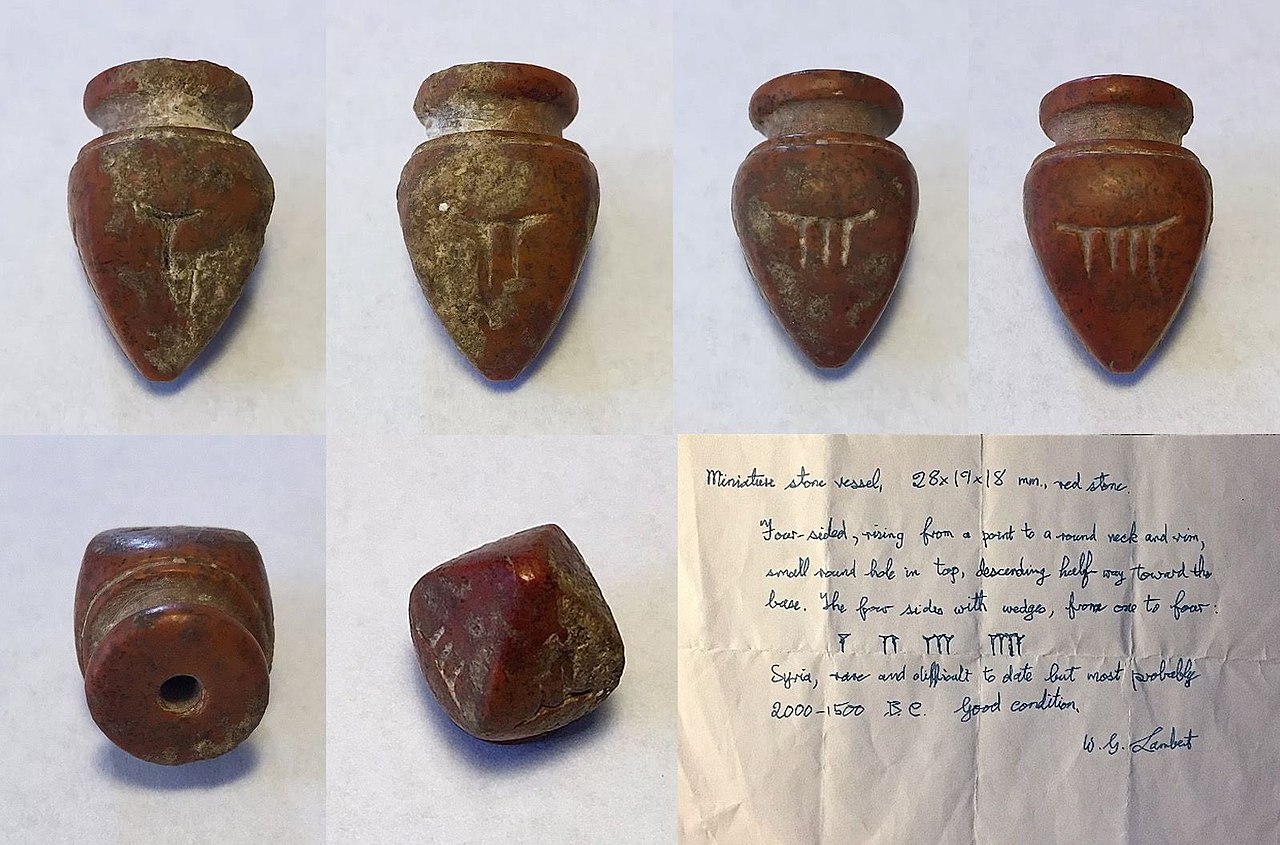
and I tried to find the teetotum in latin, but I don't think I did:
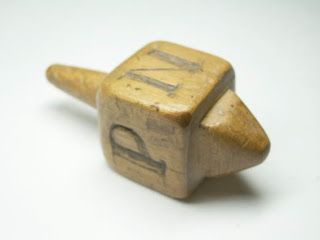
I think this one is a copy from an israelite dreidle (couldn't find the other sides to be sure)
Others were whether numerals or in english p1 for put one, t1 to take one; and one was even in russian В for возьми, П for положи, ОВ is probably for отдай все. So that P and N could stand for Put and None.
But I found some latin in a text form:
tetotum, T-totum, tee-totem
From Latin totum (“all”), marked by a T on one of the four sides.
and I'm almost surprise by me missing this at first:
In its earliest form the body was square (in some cases via a stick through a regular six-sided die[3]), marked on the four sides by the letters A (Lat. aufer, take) indicating that the player takes one from the pool, D (Lat. depone, put down) when a fine has to be paid, N (Lat. nihil, nothing), and T (Lat. totum, all), when the whole pool is to be taken.[4]
Other accounts give such letters as P, N, D (dimidium, half), and H or T or other combinations of letters.[4] Some other combinations that could be found were NG, ZS, TA, TG, NH, ND, SL and M, which included the Latin terms Zona Salve ("save all"), Tibi Adfer ("take all"), Nihil Habeas ("nothing left"), Solve L ("save 50") and Nihil Dabis ("nothing happens").
A to T is interesting, but I'd expect a labial instead of D or N, And I don't see it, and I think that maybe some other language was the source of this game. And why do I think that this game influenced the alphabet? 4 sides as four letters in the first lines of the latin alphabet (and 6 as in dice are letters in the last lines of the latin alphabet)
And english teetotums had a labial, but didn't have vowel, or else I would stretch it on for sure with no really good reason to do so:
a T for take all; an H for half, that is of the stake; an N for nothing; and a P for put down
But I keep on digging, and viva wikipedia,
Both cubic dice and four-faced long dice are found as early as the mid third millennium BCE at Indus Valley civilisation sites; these are marked variously with dot-and-ring figures, linear devices, and Indus Valley signs.
I would like to see a die with the Indus Valley sign, but it's nowhere to be seen.
A B C D as letters of a
All Beri Cidai Dai
(c is both кидай(throw) and sit(седи))
С is nothing? 0?
old is alled (старый всё (с тарой? (с гробом? (а так любые слова можно? (почти)))))
balled are bald and bold, two homophones (and I thought that ομόφωνο
обоюдоострый меч это меч без ручки, остриём с обоих концов, как осколок стекла, например.
Бери Давай - давние кандидаты на значения этих букв.
Be and Do were more of the candidates.
Be Go Do are the mose simple verbs! verbs, as verbal!
And
Et
И
ו
And Be Go Do
Et Vie ζω πάω κάνω
θα is we. f~w (and yes it reflects russian вы the same way english we does, so englishmen are more of Byzantymum.
And no, my google translator tier linguistics is not correct, even though Google translates We will go there as θα πάμε εκεί, θα πάμε εκεί has no we, θα is I will. If it is some greek mentality, but it's a grave signal for all this draft.
να (к) на
N-er W O (newer world order)
That concept is tongue in chieek, because N-er looks like Nigger. And it's not even Niger.
nERRwo
nierwd (discordian disorder?)
Независимость городов делает ничейным пространство меж городов. Если кто-то хочет там поселиться и сам стать городом, то почему нет? Кому город хуже
If city is raided, safari is open at the perpetrators in that city. People from all over the world travel around to hunt the niggers. And the most populars will find better ways than to shoot and incarcerate them: make them involuntary vloggers themselves, so that the perpetrators is always watched by the world and ai, it is prevented from doing harm. drones with video-camera and tranquilizer are hunting him. So the hunters are not going anywhere, they're renting the drones to work as batmans. Those superheop movies are for preparing the supply of volunteer street patrol.
Drones are not equipped with something deadly, but if a user misuses the tranquilizer's load, he is not allowed to hire (for free? for cheap! they will be cheap) a police patrol drone. Working as a police officer for free. And will there be criminal drones, those who hated police? Would they fight with some weapon they would be equipped with? Patroling drones would make an investigation and would tranquilized and control those who equips drones with anti-drone weapon, or something even more deadly. How would police be allowed to equip their drones with tranquilizers?
Laberty Labrary
LbrRy LbrTy (library read, liberty take)
A musician friend of mine sent me a word (probably) accidentally reminding word cognates, the word kignits (aka qenets, qañat or qeñet (Amharic: ቅኝት, alternatively spelled kignit, keniet, gegnet, gignit)) and first thing I saw in there was knights, but though not being a musician I couldn't dig deeper into the term itself (I asked for help from that friend, so maybe we'll return to them if he tells why exactly he sent it to me) and it made me look deeper into ge'ez,
- አ ቡ ጊ ዳ ሄ ው ዞ — а бу ги да хе вы зо
- በ ጉ ዲ ሃ ዌ ዝ ዦ — бэ гу ди ха ве зы жо
- ገ ዱ ሂ ዋ ዜ ዥ ሖ — гэ ду хи ва зе жы хо
- ደ ሁ ዊ ዛ ዤ ሕ ጦ — дэ ху ви за же хы то
- ሀ ዉ ዚ ዣ ሔ ጥ ጮ — хэ ву зи жа хе ты чо
- ወ ዙ ዢ ሓ ጤ ጭ ዮ — вэ зу жи ха те чы йо
- ዘ ዡ ሒ ጣ ጬ ይ ኮ — зэ жу хи та че йы ко
- ዠ ሑ ጢ ጫ ዬ ክ ኾ — жэ ху ти ча йе кы хо
- ሐ ጡ ጪ ያ ኬ ኽ ሎ — хэ ту чи йа ке хы ло
- ጠ ጩ ዪ ካ ኼ ል ሞ — тэ чу йи ка хе лы мо
- ጨ ዩ ኪ ኻ ሌ ም ኖ — чэ йу ки ха ле мы но
- የ ኩ ኺ ላ ሜ ን ኞ — йэ ку хи ля ме ны нё
- ከ ኹ ሊ ማ ኔ ኝ ሶ — кэ ху ли ма не ны со
- ኸ ሉ ሚ ና ኜ ስ ሾ — хэ лю ми на не сы шо
- ለ ሙ ኒ ኛ ሴ ሽ ዖ — лэ му ни ня се шы ъо
- መ ኑ ኚ ሳ ሼ ዕ ፎ — мэ ну ни са ше ъы фо
- ነ ኙ ሲ ሻ ዔ ፍ ጾ — нэ ню си ша ъэ фы цо
- ኘ ሱ ሺ ዓ ፌ ጽ ቆ — не су ши ъа фе цы ко
- ሰ ሹ ዒ ፋ ጼ ቅ ሮ — сэ шу ъи фа це кы ро
- ሸ ዑ ፊ ጻ ቄ ር ሦ — шэ ъу фи ца ке ры со
- ዐ ፉ ጺ ቃ ሬ ሥ ቶ — э фу ци ка ре сы то
- ፈ ጹ ቂ ራ ሤ ት ቾ — фэ цу ки ра се ты чо
- ጸ ቁ ሪ ሣ ቴ ች ኆ — цэ ку ри са те чы хо
- ቀ ሩ ሢ ታ ቼ ኅ ጶ — кэ ру си та че хы по
- ረ ሡ ቲ ቻ ኄ ጵ ፆ — рэ су ти ча хе пы цо
- ሠ ቱ ቺ ኃ ጴ ፅ ፖ — сэ ту чи ха пе цы по
- ተ ቹ ኂ ጳ ፄ ፕ ጆ — тэ чу хи па це пы джо
- ቸ ኁ ጲ ፃ ፔ ጅ ኦ — чэ ху пи ца пе джы ъо
- ኀ ጱ ፂ ፓ ጄ እ ቦ — хэ пу ци па дже ъы бо
- ጰ ፁ ፒ ጃ ኤ ብ ጎ — пэ цу пи джа ъэ бы го
- ፀ ፑ ጂ ኣ ቤ ግ ዶ — цэ пу джи ъа бе гы до
- ፐ ጁ ኢ ባ ጌ ድ ሆ — пэ джу ъи ба ге ды хо
- ጀ ኡ ቢ ጋ ዴ ህ ዎ — джэ ъу би га де хы во
э у и а
е ы о
ъ አ ኡ ኢ ኣ ኤ እ ኦ
б በ ቡ ቢ ባ ቤ ብ ቦ
г ገ ጉ ጊ ጋ ጌ ግ ጎ
д ደ ዱ ዲ ዳ ዴ ድ ዶ
х ሀ ሁ ሂ ሃ ሄ ህ ሆ
в ወ ዉ ዊ ዋ ዌ ው ዎ
з ዘ ዙ ዚ ዛ ዜ ዝ ዞ
ж ዠ ዡ ዢ ዣ ዤ ዥ ዦ
х ሐ ሑ ሒ ሓ ሔ ሕ ሖ
т ጠ ጡ ጢ ጣ ጤ ጥ ጦ
ч ጨ ጩ ጪ ጫ ጬ ጭ ጮ
й የ ዩ ዪ ያ ዬ ይ ዮ
к ከ ኩ ኪ ካ ኬ ክ ኮ
х ኸ ኹ ኺ ኻ ኼ ኽ ኾ
л ለ ሉ ሊ ላ ሌ ል ሎ
м መ ሙ ሚ ማ ሜ ም ሞ
н ነ ኑ ኒ ና ኔ ን ኖ
нь ኘ ኙ ኚ ኛ ኜ ኝ ኞ
с ሰ ሱ ሲ ሳ ሴ ስ ሶ
ш ሸ ሹ ሺ ሻ ሼ ሽ ሾ
ъ ዐ ዑ ዒ ዓ ዔ ዕ ዖ
ф ፈ ፉ ፊ ፋ ፌ ፍ ፎ
ц ጸ ጹ ጺ ጻ ጼ ጽ ጾ
к ቀ ቁ ቂ ቃ ቄ ቅ ቆ
р ረ ሩ ሪ ራ ሬ ር ሮ
с ሠ ሡ ሢ ሣ ሤ ሥ ሦ
т ተ ቱ ቲ ታ ቴ ት ቶ
ч ቸ ቹ ቺ ቻ ቼ ች ቾ
х ኀ ኁ ኂ ኃ ኄ ኅ ኆ
п ጰ ጱ ጲ ጳ ጴ ጵ ጶ
ц ፀ ፁ ፂ ፃ ፄ ፅ ፆ
п ፐ ፑ ፒ ፓ ፔ ፕ ፖ
дж ጀ ጁ ጂ ጃ ጄ ጅ ጆ
Вместо ge'ez который сейчас, вот этот поместите, и под90градусов (читать со стороны края страницы) текст "более используемым сегодня является другой порядок, халахам, но этот порядок взят из традиционного "мнемонического" который подобен спирали, что может говорить, что змейка более древняя форма написания, чем строки (читал, что клинописные строки идут с наклоном, чтоб на цилиндре приходить концом строки в начало следующей. Но египетский же столбцами или строками идёт? даже в строках столбцами, даже в столбцах строками, в которых порядок букв тоже порой в некотором смысле змейкой, даже не по порядку бывает)
хазары
кацапы
(khazars are judaic, кацап are from кац)
jews are the common scapegoat. A nation for other nations to hate, and thus to bring peace about.
And here's a proof that C is G sometimes:
ъ አ ኡ ኢ ኣ ኤ እ ኦ
б በ ቡ ቢ ባ ቤ ብ ቦ
г ገ ጉ ጊ ጋ ጌ ግ ጎ
д ደ ዱ ዲ ዳ ዴ ድ ዶ
х ሀ ሁ ሂ ሃ ሄ ህ ሆ
в ወ ዉ ዊ ዋ ዌ ው ዎ
з ዘ ዙ ዚ ዛ ዜ ዝ ዞ
ж ዠ ዡ ዢ ዣ ዤ ዥ ዦ
х ሐ ሑ ሒ ሓ ሔ ሕ ሖ
т ጠ ጡ ጢ ጣ ጤ ጥ ጦ
ч ጨ ጩ ጪ ጫ ጬ ጭ ጮ
й የ ዩ ዪ ያ ዬ ይ ዮ
к ከ ኩ ኪ ካ ኬ ክ ኮ
х ኸ ኹ ኺ ኻ ኼ ኽ ኾ
л ለ ሉ ሊ ላ ሌ ል ሎ
м መ ሙ ሚ ማ ሜ ም ሞ
н ነ ኑ ኒ ና ኔ ን ኖ
нь ኘ ኙ ኚ ኛ ኜ ኝ ኞ
с ሰ ሱ ሲ ሳ ሴ ስ ሶ
ш ሸ ሹ ሺ ሻ ሼ ሽ ሾ
ъ ዐ ዑ ዒ ዓ ዔ ዕ ዖ
ф ፈ ፉ ፊ ፋ ፌ ፍ ፎ
ц ጸ ጹ ጺ ጻ ጼ ጽ ጾ
к ቀ ቁ ቂ ቃ ቄ ቅ ቆ
р ረ ሩ ሪ ራ ሬ ር ሮ
с ሠ ሡ ሢ ሣ ሤ ሥ ሦ
т ተ ቱ ቲ ታ ቴ ት ቶ
ч ቸ ቹ ቺ ቻ ቼ ች ቾ
х ኀ ኁ ኂ ኃ ኄ ኅ ኆ
п ጰ ጱ ጲ ጳ ጴ ጵ ጶ
ц ፀ ፁ ፂ ፃ ፄ ፅ ፆ
п ፐ ፑ ፒ ፓ ፔ ፕ ፖ
дж ጀ ጁ ጂ ጃ ጄ ጅ ጆ
Вместо ge'ez который сейчас, вот этот поместите, и под90градусов (читать со стороны края страницы) текст "более используемым сегодня является другой порядок, халахам, но этот порядок взят из традиционного "мнемонического" который подобен спирали, что может говорить, что змейка более древняя форма написания, чем строки (читал, что клинописные строки идут с наклоном, чтоб на цилиндре приходить концом строки в начало следующей. Но египетский же столбцами или строками идёт? даже в строках столбцами, даже в столбцах строками, в которых порядок букв тоже порой в некотором смысле змейкой, даже не по порядку бывает)
хазары
кацапы
(khazars are judaic, кацап are from кац)
jews are the common scapegoat. A nation for other nations to hate, and thus to bring peace about.
And here's a proof that C is G sometimes:
Vatican is an interesting word: Etymology. From Latin Vātī̆cānus (“Vatican Hill”), from vāticinārī (“to prophesy, oracle”), from vātēs (“soothsayer, prophet”) + cinor (“to sing”) (the latter is from canō)
so canto and sing are ..cognates!
𐤌 𐤍 are another example of a pair with single lingual and double labial (those are phoenician mem and nun, and if they're shown in your browser differently, well, just in case I still didn't ingrane into my htmls the font-controller, images always help:

Here I placed both fonts next to one another, enjoy.
So what I was saying is their M and N support that single lingual and double labial tradition.
придуривается
притворяется (но не совсем, ва между р и -т не хватает)
придуряется (вот это да, в там избыточна? стилистика?)
or is that во faux?
A neice niece told me that some people in her class think that на is not a preposition, but a verb.
And they're correct, for some на's are synonyms of возьми, бери, and in this it is a cognate of english own.
And I think thus I discovered the nature of suffix ин, ины, на, но ~ の
димина рубаха = димми owns рубаха
(на ~ own ~ владей (имей ~ имя? (своё имя можешь на предмете написать (иметь ~ записано на его имя))))
это и этого говорят, что го это тоже на? го ебаца только знаю, но это неологизм вроде, заимствование из английского. Но davai тоже же неологизм? тоже заимствование
Сейчас проверил, и "на" в значении "бери" считается не глаголом, а частицей. На мой взгляд, ошибочно, но официально. То, что это не частица, а глагол, можно понять по форме "нате"
persecution disguised as a prosecution I heard today from a Trump video. Very nicely put. Bravo.
Может создать векторные представления, основанные на геометрии трёхмерной? Может про обрубанные пальцы и врождённы патологии за вариант нормы не воспринимали
В предыдущем предложении утеряна конструкция чтобы (которая состоит по крайней мере из двух слов: что и бы, а может и из трёх: ч то бы, один символ один слог, чему учит китайский)
Chaos brings revelations: My friend who makes me the second edition of the book, is named Arcade3D and it appeared on my whiteboard as A3D, and it made me think that what if both B and C are 3 (because of the bc.html and because of now I can see that B looks like 3. What if a curve was one, and two curves of 3 were three? Staveless B is 3 (V~Z, where A~D in it being single, ა could be that curve.
So the revelation part is that Δ stood for three in the ᛆᛒᚦ times, and probably then they recognized it as a tetrahedron, and I think it was in the times of knucklebones being substituted with the dice like this

It is a replica, but I took a lesson from the brittish museum, and that's where I know of Royal Game Of Ur using such dice. Only they are not from knuclebones, unless knoclebones were read differently with flat being yes and sideways being no, for example.
I wonder if the shape of the board (notice that it is eight checkers long) is such to use the board as a weapon in case of necessity. The size of the actual boards could tell if the handle in the centre was wide enough.
So was this shape known to men when the alphabet was first born with three letters per line?
3×3
And another thing I noticed is that 3×3 is a magic square? That when it's not a magic square, but consequent, it makes similar signs:
123
456
789 and you probabkly don;'t see similarities, because the 7 is dashless, and 4 is not as Ч, and others are alright, so maybe if you meditate on them you can see what I can see. So, the magic square. So far they're
6 15 24, two "satanic" numbers and one "satanic in disguise" number of hours in the 24h (a satanic part is that it's four times 6, and yet 15 is not divisible by 6, other than it is 2.5, the 2.5 I love. And then how crazy is it that those 6ths align along the 15s when it's rearanged to be ..but before we go on, we notice that both diagonals are 15s and both centrals are 15s
492
357
816
Though I like 4 as A and 6 as S, 5 as M doesn't look right, even though 5 is the middle of the decimal system.

in the context of bibimus, that bue is a cognate ot пить
ofEN = otRU
thus f and t are descendants of something common, such as θ
that fagioli read as vazol tells me that C combines all lingual, and probably ABC is all it used to be
cac bacaaca caac ac bacac caccc ba cac C cabbacac ac caccbac, acc bcababca ABC ac ac ac acac ca ba
Too many homonyms?
it, is, in, all, at (in could be actually im)
are all ac, and I wonder if I would recognized the constructions of those words in that purified, empovered (empowered? what a sublime difference in shape and tremendous difference in meanings! or were these words meant to say that people are lazy when they're rich and reach out when they lost it?) and this word is ish-some, empoverished form of the alphabet
Ca baca cabacabc?
ac, ac, ab, acc, ac (ab cac ba accaacca ab)
aca acc ac, acc a baccac ab a bacc cacaccacac cca caccccaccaacc ab ccaca baccc ab ccac bacabaac,
abbabacac (abbabacac? bac a cabcaba cabbacanca ab caba acc ccababcaac cabbacacca ab baacaccc!
ac baca ccaca baccc baabc ca cac cac baabca aca caca bac ccac'ca cacc acc caacc abc bac cac cacc ac?) acc cac bacc ac ac-caba, abbabacacac bacb ab ca acbabac
k a and b are laettres apes coudl pronounce.
Not S? CRK used to be the reading of C?
C as CRK the circle?
that weird orthoghrapyy made me see the sublime difference between палка & плётка (и оба слова скорей всего родственны слову палач (а плач? а пылать? пытать! палить! полить? полотить-колотить? но так я могу слишком далеко из семофонетического поля)
врачебная тайна explains why врач~врать
were medicine people working as lawyers as well?
another brief and sudden dive into mayan:

caused by reading the Knorozov's writings: https://lib.kunstkamera.ru/files/lib/978-5-88431-363-7/978-5-88431-363-7.pdf
so let's preserve here that writing system once again:
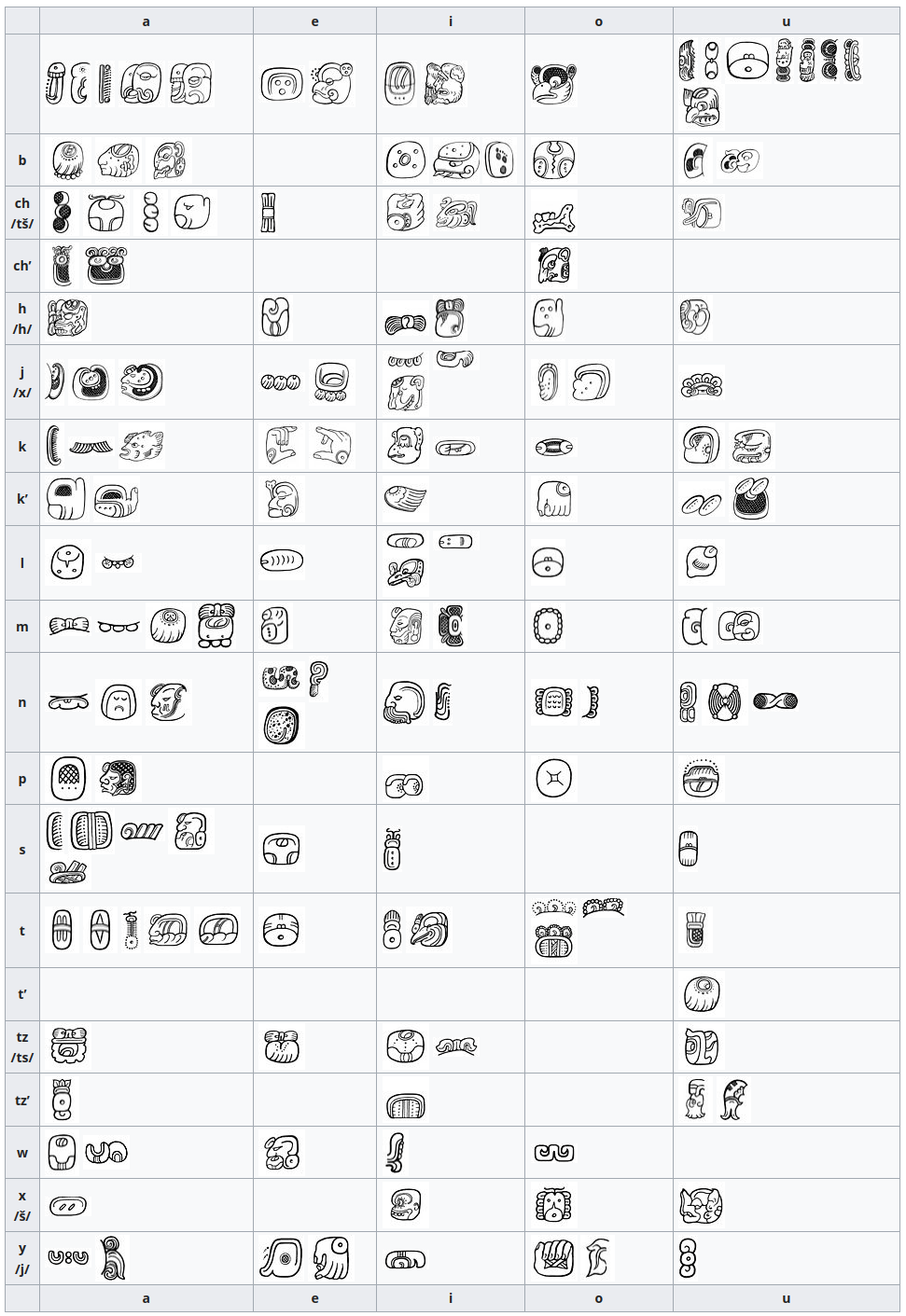
and the way it was preserved in the old verson, so called v.2.8, they're a little different and sometimes show not only additional glyphs, but also variations of the same ones:

And soon it came to me, that if this collection of glyphs has that single linguals and double labials thing, that it's tradition is connected with the alphabetic corpus. And the first double sign I can see is indeed labial. Pi.
And the sigle shape is Ku!
but then some K'u seems to be a double shape. But of what?
And is an u is a double o? is a nu a double o? So other shapes seem to be speculative, so I hold to that pi is double ku think, holding it close to П is double Г thing. Yet of course it's all no more than a hypothesis.
слово Бояре в русском возводится к тюркским языкам, даже при том, что Точного соответствия в современных тюркских языках не имеется (при том что в европейских языках есть слово барон, и вроде как эту версию ломоносов высмеивал "а почему не от баран", и тоже работал при дворянах, а потому быть может и прославляем) а потому считаю подобную этимологию дискредитирующей свергнутую касту по заказу касты дворян (которые были низшей аристократией, и свергнув бояр поднялись) и барин (впрочем, этимология слова барин возводится к слову боярин)
and now (in completely different rt trui trip, completely not connected to the previous chpa chapter) something actually turkic:
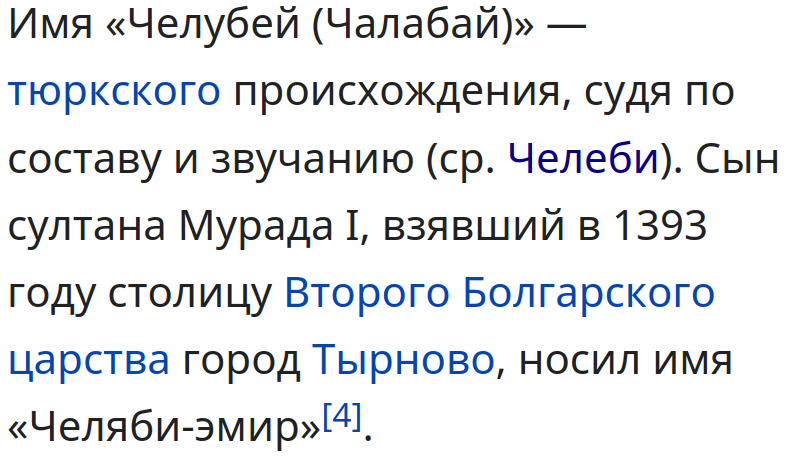
История служанка идеологии, но правдивую информацию тоже сохраняет, просто не афиширует.
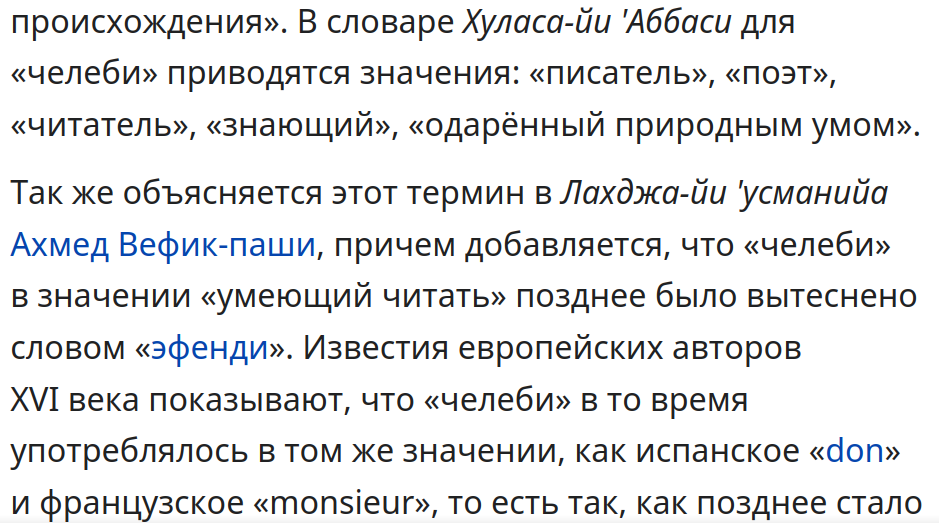
Похоже что в названии нашего города этимология слова человек (которое недалеко от слова голова, что эти переводы слова челеби подтверждают, что подтверждает и английские пары man~mind и head~hand (mannus рука в латыни) это сходство слов рука и рош (голова на иврите (возможно, русское решать однокоренно ему (слова более конкретные понятия, чем абстрактное понятие "язык")) немного смущает, но с другой стороны уметь от слова ум.
усилительные частицы: do (duh, du) даже (да же) よ (yo ~ you (do~du))
да? ~ ты? (при раздаче заданий работникам? производственно денежные отношения как давно появились? не позже появления денег как таковых? раньше. товарно-производственными были просто. Как и сейчас того же рода отношения бартерными могут быть.
бар/тер ~ ты/тебе ? (фанатазия)
Ско́пье (макед. Ско́пје, алб. Shkup / Shkupi, сербохорв. Skoplje / Скопље, греч. Σκόπια, тур. Üsküp) — город, столица Северной Македонии.
 Here (in
SeaMonkey) Скопље has normal russian п, and here is how FireFox
shows it in the shape of long u, thus uniting labial u
with labial п (it is russian п, and because it looks like
n when both are cursive, it unites latin v with greek ν[n], and it inevti e inevitably makes вRU & inEN
cognates (voiced and fricative is what that sound is (and thus
voiceless plosive would be the counterpart. от! to! к! of is
fricative, but it is directly от, thus even plosive/fricative is
not a thing. voiced and voiceless is the thing, and it's nice to
find this thing again after I didn't write it down yesterday or
the other day, and it was about in/в saying of the inside, and
off/от are telling of outside, o as around is oб and of, so am I
sure even voiced/voiceless matter? and of~от / to~до may tell that
the closed/open is more important, and thi sis is exactly the
difference used in grammar (open female, closed male))
Here (in
SeaMonkey) Скопље has normal russian п, and here is how FireFox
shows it in the shape of long u, thus uniting labial u
with labial п (it is russian п, and because it looks like
n when both are cursive, it unites latin v with greek ν[n], and it inevti e inevitably makes вRU & inEN
cognates (voiced and fricative is what that sound is (and thus
voiceless plosive would be the counterpart. от! to! к! of is
fricative, but it is directly от, thus even plosive/fricative is
not a thing. voiced and voiceless is the thing, and it's nice to
find this thing again after I didn't write it down yesterday or
the other day, and it was about in/в saying of the inside, and
off/от are telling of outside, o as around is oб and of, so am I
sure even voiced/voiceless matter? and of~от / to~до may tell that
the closed/open is more important, and thi sis is exactly the
difference used in grammar (open female, closed male))The idea of replacing all letters with abc made me think about it, and the first examples which came to my mind made me switch on the computer to put it down:
бедный ~ белый (по цвету дешёвой некрашенной в пурпур одежды (или оба слова означают отсутсвие чего-то начинаясь с подобия предлога без)
дно ~ low
A museum (I wanted to say museon, but u wa appeared there by itself) showed me something new
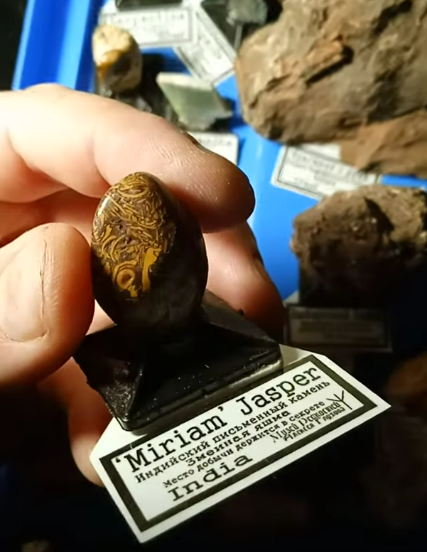
I wasn't sure about, also because it said that the place of mining is unknown but I searched for it and I found this interesting story:
Miriam Stone, also known as Calligraphy Stone, Elephant Skin Jasper, and Arabic Stone, is a unique mineral composed of fossilized shells, bones, and vegetation from an ancient swamp. This complex stone is a result of the Himalayan Mountains shifting and forming the landscape we see today. During this time, the entire area was put under extreme pressure, with conditions ripe enough to fossilize and condense anything surrounding this newly formed mountain chain. This has never occurred anywhere else on planet Earth and makes this newly discovered crystal very appealing on the mineral market. The reason for this is mainly due to Miriam Jasper’s physical appearance and the story of its creation. However, only true practitioners understand the value of the energy that it holds. One will be able to channel the powers of ancient Earth and all of its purity within.
As Earth was developing, it was a much different place than what we see today. The ground was very fertile, the air was extremely pure, and the elements combined were the perfect equation to enhance and exhibit life. This created pure life energy free for the taking. These are the basic building blocks of life and all of her beauty. This is the same energy contained in each and every Calligraphy Stone. We highly urge you to meditatie with some form of this crystal (tumbled, palm stone, sphere) and begin extracting the vibrations which have been dormant since its creation.
still not sure that it is true, it's too much crazy looking, and so called artificial stones (such as epoxid) are in fashion. Could it be a melted in a furnace stone shavings of a sculptor? The colour is consistent because the shaving was of the yellowish stone, and the rest is some dirt he drowned it in? Then it would be stone alright? Would it? And if't really the ancient swamp, microscopy could tell, and why am I guessing about what I'm not educated of. If it is organic, it also burns? Do fossils burn? Coal burns alright. So how would you tell a stone from.. fossilized resin? Why am I skeptical about something I"m clueless of? I just play a smartass, here, mea culpa, grey, grey, grey

%20stone..jpg)
Названий у этого натурального камня великое множество: Индийский письменный камень ( Indian Script Stone — он выглядит как древняя индийская письменность), граптолит ( «письменность» , греч. яз.), арабский письменный камень, Мариам-яшма (mariam jasper), Окаменевшие водоросли, Кобровая яшма (Cobra Stone), Слоновья кожа, Гематитовый ракушечник, Ракушечная яшма, Арабская вязь, камень каллиграфов (Calligraphy stone), Coquina Jasper, и, возможно, какие то другие, например, Schlangen, что означает «змеи» по-немецки.
Приблизительно описанным научно этот камень стал лишь после 2013 года. Сведения об этом камне очень скудные. Камень был привезен в Европу и Америку современными туристами лишь в 2000 году и был принят первоначально за китайскую или индийскую подделку. Этому камень обладает низкой твердостью по Моосу 4 — 5. Он царапается стеклом и почти любыми металлами.
Камень состоит в основном из кальцита СаСО3 со структурой мрамора, сильно окрашенного окислами железа. Линии образованы различными окаменелостями морских животных, в основном Граптолитами. Желтые участки более твердые, чем красно-коричневые, по-этому каменнь достаточно труден для полировки. Вся порода в процессе образования претерпевала сверхвысокие давления, так как должен был образоваться простой ракушечник с твердостью примерно 3, а образовался мрамор с криволинейными включениями ракушечного оникса. Вот и все что известно на сегодняшний день об этом камне.
Оранжевые или коричневые разновидности находят в Гималаях, месторождение этого камня есть только в Индии, Раджастхан. Точное местоположение месторождения не известно.
Граптолиты — класс вымерших колониальных морских плавающих организмов. Иногда считается, что это отдельный тип, однако, родственный хордовым. Чаще всего их окаменелости встречаются в виде плоских углеродных прожилок, напоминающих карандашные пометки, в черных сланцах периодов ордовика и силура. В тех случаях, когда их нераздавленные скелеты отпечатались на известняке, можно видеть, что граптолиты состояли из множества маленьких трубочек, равномерно расположенных вдоль ответвлений, которые, как предполагают, были прикреплены к общему поплавку, по форме напоминающему пузырь. Первые граптолиты появились в среднем кембрии, а последние вымерли в позднем каменноугольном периоде. Это очень важные руководящие окаменелости, используемые для установления соотношения и определения возраста горных пород поздней палеозойской эры.
and on those magickal geologist sites I found something also before unseen, chiastolite:
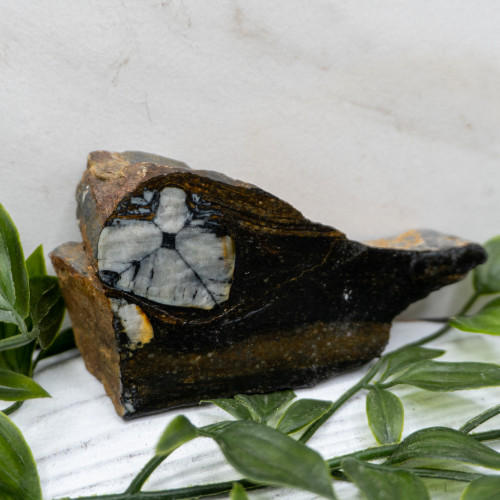
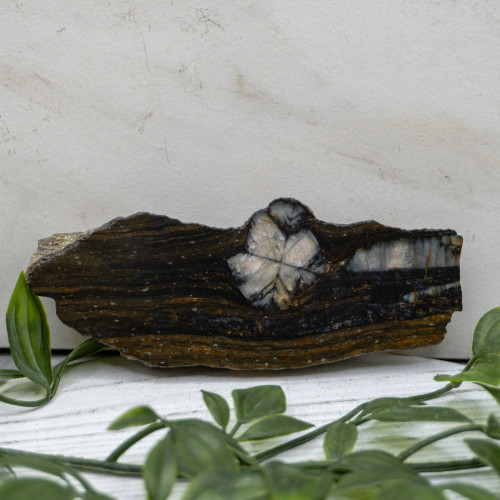
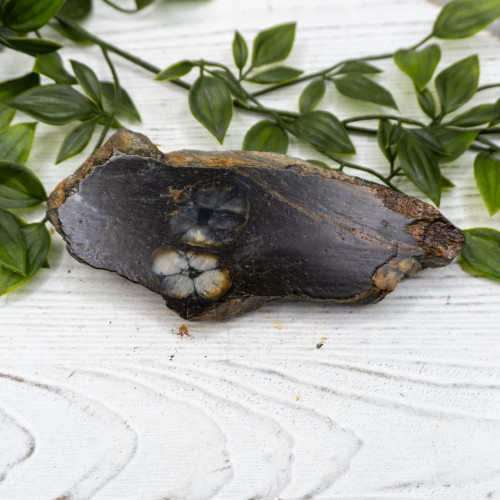
Could it be some other fossil? A snake turnt into stone by time? or are normal crystallization not snakelike?
Who is it [хуй ссыт] ~ хуй проссышь
in ~ on
in- ~ un-
(are both no, not?)
on as the antonym of no?
no more ~ om won
Did Heaviside paint his fingernails pink because dirt beneath one's nails would look more gross, so he could think, but faggots spoilt it for everyone.
ACDB is more physiologic than
Glossolallically I praised something sounding as levi and лев, and it made me think of the four christian celestial creatures: lion, bull, eagle, angle(angel, humanoid figure, whoman who can fly)
And it made me think if Alef is both A & Λ
Alef is not angel, but lion? makes no sense! Angel Bull Eagle Lion would be more alphabetic.
Are they placed by the goodness? Human's life is the most valuable, Bull is the human's helper, and thus deserves the second place. Eagle is a king of birds, Lion is a king of beasts, and of course killing a lion is not only approved, but also encouraged, endorsed could be the word, but then what do I know.
смыл, but smell?
And Bull could be seen as an adversary by a nation fighting with those who worship the bull.
Baal from bible
Can I see alphabetic sequence in everything? No, I was tested, and I can successfully shuffle away the random data. But why do I see alphabeticism in querty? is it because labial u is in the second position or is it because qrty are in the alphabetic order? Did this system succedd because that ti in the end seemed natural due to T being once the final letter and the note ti too? Is T why ti was added to the gammut? w off the chart sounds natural because qw reminds qu which is how q naturally goes. And e seems to be a meaningless connecting letter. But then I know that qwerty keyboard does have some alphabeticism to it: a is in the beginning of the central line, defgh goes almost consequently, and next to it goes ijkl, m is followed by n, o is followed by p, that q is followed by r if you skip two letters, s seems to be переназначенной клавишей, всё отклонение от алфавитной структуры кажется переназначением клавиш с целью удобства. Какова была первая версия qwerty клавиатуры, наверняка можно найти в черновиках её изобретателя, и я заявляю, что мой намётанный глаз говорит большую степень алфавитности ея, т.е. что последовательности букв были изменены в сторону большего хаоса, а не то что зазубренная алфавитная последовательность проявилась в клавиатуре независимо от воли её создателя.
Here a guess about ogham. What if ᚁ and ᚆ were forms of the same glyph, and ᚋ were the double of them, what if m is bh or something like this. It makes perfect sense, because ph is f, and m is not that far from v (voiced, labial, fricative are them both, W reminds М probably not by coincidence.
But what is even this:
Uath, Old Irish Úath, hÚath (Old Irish pronunciation: [wəθ]), is the sixth letter of the Ogham alphabet, ᚆ, transcribed ⟨ʜ⟩ in manuscript tradition, but unattested in actual inscriptions. The kenning "a meet of hounds is huath" identifies the name as úath "horror, fear", although the Auraicept glosses "white-thorn":
there's some more information I'm not qualified to read now and this another fascinating piece I have some knowledge to understand:
In the medieval kennings, called Bríatharogam or Word Ogham the verses associated with Úath are:
condál cúan - "assembly of packs of hounds" in the Word Ogham of Morann mic Moín
bánad gnúise - "blanching of faces" in the Word Ogham of Mac ind Óc
ansam aidche - "most difficult at night"" in the Word Ogham of Culainn.
are kennings tools to construct more difficult letters from
red hat ~ hatred
A C D B and "Ogham or Paleohispanic" and Hieroglyphs all challenge my claim of "runes are more ancient than alphabet"
The counterarguments to each of my arguments:
1. (history sucks) well, you are biased against academia, but most people are biased towards it. Most people are always wrong (that's a counterargument to this counterargument (you could do better than this all I could say))
2. (graphic similarity of runes to etrurian (whether etruscans or etrurians they all have that russian(?) runic ru)) I have no counterargument
3. (deep runic culture (staves, binderunes)) Did I study roman philology? I did not. (but how could I know of runic culture and not roman, which is dominant (this is a counterargument to the counterarguments (c2ac (a another (so c2c it is (and is following counterargument be c3c?))))))
4. (Odin tells how he found those runes and his story is very consistent. Three runes, three norns, three aettir.) I heard greek myth, and it was great too: Three mothers, 5vowels, B and T (three elements as well) and this myth goes on, so greeks probably mastered this culture further by dividing vowels in tones (nation? (согласно фосслеру, акцент есть душа народа (понятие существовашее до него как пустая непостижимая схоластическая абстракция))) or did greeks preserve the common myth in different detail? Greeks report a female priestess, her brother Phoroneus (first man, first inventor (no less!)) and Egyptians report that female scribe Seshat invented writing (or did those ladies brought it to their countries? Odin made a sacrifice, and the process is described in detail, in greek myth it isn't (but they were under christian rule longer, so the heathen records would be erased better. But didn't pagan Greece and Rome flourish brighter? Being mediterranean, naturally, being white as well, you better tell it. Why do I do my best to break the norm? I am crazy, so better shut up. It is fair to say it. I see what I say, so let's say something better: лучше: луч надежды? луч же! жее как более? худ~хужее, рыж рыжее, свеж свежее, т.е. ее is that er (r is vowel in hindi and srbskohrvatski, so the difference in transcription and pronounciation between russian and english could be connected to that very vowel r))
квадрат он и призма и ромб
5. (Тацит) He tells of 1AD, other is my speculation (but it was a first contact of romans with norsk people! (who told it? (Tacitus is the first roman work on germans (it doesn't mean they didn't contact without leaving records, or having those records preserved (and it is also a speculation (correct, but then Tacitus speaks of 1AD
6. (Бустрофедон) Is present in the ancient greece, so what is the point? a2a: So I shouldn't say that one alphabet comes from the other (if they belong to two unrelated tribes (not related in the historic time of creating the alphabet))) but only that they come from the same source? Well, if they don't share the mythology about the writing systems, they probably do not share the moment of acquiring it (neither of them has borrowed alphabet from each other)
a2a: Runes write bustrophedon on the body of a snake (the drawing also protected the writing of being wiped out as some doodle) greeks write in lines, which is an abstraction, thus it is later simplification.
General counterarguments:
Splendor of greek culture, and no literary libraries int the north, who were on homerian level having their myths preserved orally.
counter-counterargument: Greeks were reach and norsk scolars are peaceful, and thus poor.
I do not know history, I shouldn't dwelve into this
7. (aettir)
(when I'm high I must think new things, not working, this is work)
ACDB places B after D which makes sense. And I place it like:
AC
DB to have d under a and B under C (see the resemblance?)
A горло
D язык
B губы
(is it why 𐤀 reminds K?)
ADB (t~ч~k, t~s~c, the unity of linguals)
ADiBas is much less impressive than ABaCus, but then I do not know eastern (or for me they're southern) languages.
and where is my boustrophedon?
The original term comes from Ancient Greek: βουστροφηδόν, boustrophēdón, a composite of βοῦς, bous, "ox"; στροφή, strophḗ, "turn"; and the adverbial suffix -δόν, -dón, "like, in the manner of" – that is, "like the ox turns [while plowing]".[2] It is mostly seen in ancient manuscripts and other inscriptions. It was a common way of writing on stone in ancient Greece,[3] becoming less and less popular throughout the Hellenistic period. Many ancient scripts, such as Etruscan, Safaitic, and Sabaean, were frequently or even typically written boustrophedon.
Бустрофедон встречается в памятниках лувийского, южноаравийского, этрусского, греческого, малоазийских, латинского и других видов письма.
Лидийский алфавит VIII—III века до н.э.
reminds runes very much. So norsk runes could be localized shapes of alphabets of anatolia.
But actually they only have ᛒᛚᛁ in common, and semicommon ᛉ and ᚦ and ᚴ and ᚿ, but this semicommon is evenmore interesting, just as ᛏ, :
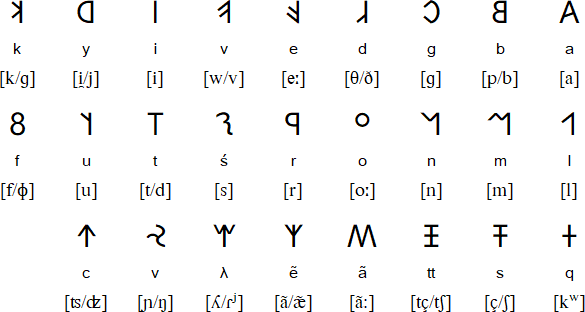
and ᛠ and ᚫ and
and let's compare it with etruscan too
𐌀𐌁𐌂𐌃𐌄𐌅𐌆𐌇𐌈𐌉𐌊𐌋𐌌𐌍𐌎𐌏𐌐𐌑𐌒𐌓𐌔𐌕𐌖𐌗𐌘𐌙𐌚𐌛𐌜𐌝
etruscan shares value of 𐌖 with lydian, and 𐌌𐌍 too. 𐌓𐌚𐌙
and could that totally common between norsk and lydian ᛒᛚᛁ be the three mothers?
ᛁᛚᛓ
(ᛚ~ᚿ, ᛚ~ᚳ)
(ᛓ~ᚠ)
notice how what means is vowel, lingual, labial is the sequence. And the way EFГ is in reverse, makes me look for ACB writing systems as the source of the alphabets.
I dig into cuneiform, little by little,

And it is here because I saw that Lydia is Sparta.
Lydia (Lydian: 𐤮𐤱𐤠𐤭𐤣𐤠, Śfarda; Aramaic: Lydia; Greek: Λυδία, Lȳdíā; Turkish: Lidya) was an Iron Age kingdom of western Asia Minor located generally east of ancient Ionia in the modern western Turkish provinces of Uşak, Manisa and inland Izmir. The ethnic group inhabiting this kingdom are known as the Lydians, and their language, known as Lydian, was a member of the Anatolian branch of the Indo-European language family. The capital of Lydia was Sardis.[1]
The Kingdom of Lydia existed from about 1200 BC to 546 BC. At its greatest extent, during the 7th century BC, it covered all of western Anatolia. In 546 BC, it became a province of the Achaemenid Persian Empire, known as the satrapy of Lydia or Sparda in Old Persian. In 133 BC, it became part of the Roman province of Asia.
Lydian coins, made of silver, are among the oldest in existence, dated to around the 7th century BC.[2][3]
Croesus continued the friendly relations with the Medes concluded between his father Alyattes and the Median king Cyaxares, and he continued these good relations with the Medes after he succeeded Alyattes and Astyages succeeded Cyaxares.[68] And, under Croesus's rule, Lydia continued its good relations started by Gyges with the Saite Egyptian kingdom, then ruled by the pharaoh Amasis II.[68] Croesus also established trade and diplomatic relations with the Neo-Babylonian Empire of Nabonidus,[68] and he further increased his contacts with the Greeks on the European continent by establishing relations with the city-state of Sparta.
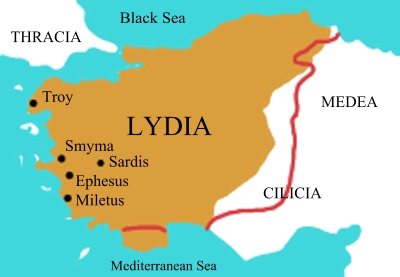
https://www.researchgate.net/figure/Map-of-Greece-with-the-location-of-Sparta-and-Pyrgos_fig1_339922411
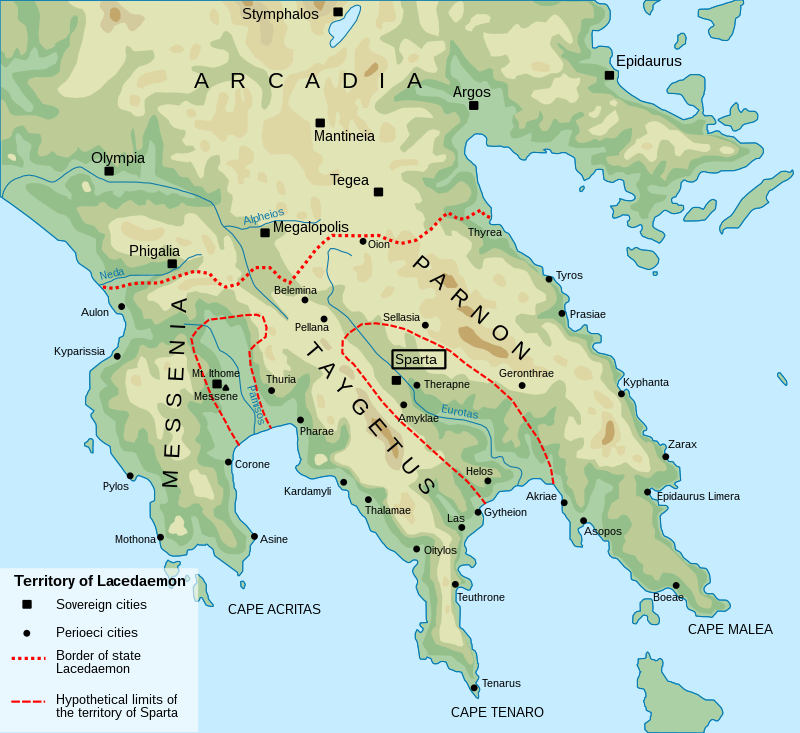
Notice, that the ancient kingdoms indeed were established according to geography, by the river basins.
Arcadia is a poetic term associated with bountiful natural splendor and harmony. The 'Garden' is often inhabited by shepherds.
Lacedaemon (/læsɪˈdiːmən/; Ancient Greek: Λακεδαίμων Lakedaímōn) or Lacedemon was the eponymous king of Lacedaemon (i.e. Sparta) in classical Greek mythology.
Lacedaemon was the son of Zeus and the Pleaid Taygete. By Princess Sparta, the daughter of former King Eurotas, he was the father of his heir Amyclas and Eurydice, wife of King Acrisius of Argos.
In a rare version of the myth, Taygete was the wife of Lacedaemon and their children were Himerus and Cleodice.
Unable to produce a male heir, King Eurotas bequeathed the kingdom to Lacedaemon who then renamed the state after his wife, Sparta, who was also his niece. Lacedemon was credited to be the founder of the sanctuary of the Graces, Cleta and Phaenna, near the river Tiasa.
Preceded by Eurotas
Eurotas was the son of King Myles of Laconia and grandson of Lelex, eponymous ancestor of the Leleges.[2] The Bibliotheca gave a slight variant of the mythological generation of Eurotas, who was described as the son of Lelex, born from the ground, by his wife Cleocharia.[3] In some accounts, his mother was called Taygete instead.[4] Eurotas had no male heir but he did have two daughters Sparta and Tiasa[5] by Clete
Eurotas bequeathed the kingdom to Lacedaemon, the son of Zeus and Taygete, after whom Mount Taygetus was named, according to Pausanias.[6] This Lacedaemon married his daughter Sparta and renamed the state after his wife.
Pausanias says: "It was Eurotas who channelled away the marsh-water from the plains by cutting through to the sea, and when the land was drained he called the river which was left running there the Eurotas."[6] The "cutting through" is seen by Pausanias’ translator and commentator, Peter Levy, S.J., as an explanation of Eurotas (or Vrodamas) Canyon, a ravine north of Skala where the river has cut through the foothills of Taygetus after changing direction to the west of the valley.[7]
Preceded by Myles
In Greek mythology, Myles (/ˈmaɪliːz/; Ancient Greek: Μύλης means 'mill-man') was an ancient king of Laconia. He was the son of the King Lelex and possibly the naiad Queen Cleocharia, and brother of Polycaon. Myles was the father of Eurotas who begotten Sparta after whom the city of Sparta was named.
After Lelex's death, Myles ruled over Laconia, and later on, following his own death, his son Eurotas succeeded him.[1] Myles was said to be the first mortal to invent a mill and ground corn in Alesiae.
In Greek mythology, Lelex (/ˈliːlɪks/; Ancient Greek: Λέλεξ, gen. Λέλεγος) was one of the original inhabitants of Laconia which was called after him, its first king, Lelegia.
Lelex was said to be autochthonous[1] or his father was the sun-god Helios or the sea-god Poseidon.[2] He was married to the Naiad nymph Cleocharia and became the father of several sons, including Eurotas,[3] and possibly Myles and Polycaon.[4] Some called his wife Peridia and their children were Myles, Polyclon, Bomolochus and Therapne.[5]
In one tradition, again, Lelex was described as the son of Spartus, and father of Amyclas.[6] The eponymous heroine Lakonia was credited to be a daughter of Lelex as well.[2]
Through Myles, Lelex was the grandfather of Eurotas, who had a daughter named Sparta.[7] This woman later marry Lacedaemon[8] who named the city of Sparta after his wife; however, the city's name would also be his own, as it was called either Lacedaemon or Sparta interchangeably.
Sources indicate that Perseus was a descendant of Lelex. The latter's great-granddaughter Sparta gave birth to a daughter named Eurydice who had married Acrisius, the king of Argos. Eurydice became the mother of Danaë, thus making her Perseus’ grandmother.[9]
Lelex appears to have been conceived by ancient mythographers as the eponymous founder of the Leleges, a semi-mythical people who lived on both sides of the Aegean Sea.[10] He had a heroön at Sparta.[11]
Preceded by None
King of Sparta
C. 1600 BC

lamer is more lame than you?
fighter is someone who fights better than you?
master is someone who masts better than you? As if a master would say he the master? Check this out!
(he's not a translator (so bad the speaking person doesn't even recognize him as one) this (showing at a better one) is a translator)
Suddenly, master is someone who establishes the mast.
ее ~ er
I can find initial meaning of signs by attesting for words, which are read accordingly as the runic signs changed their reading.
ᚼᛡ - compare all the readings to the languages they were met in, and find words starting with that letter, but having those exact values in the writing system and the language (предполагая, что пользовавшиеся рунами понимали смыслы отдельных рун)
Но начни с ᛘᛉᛦ𐌙
or even with P and Р
or C and С (k and s) и здесь я знаю ответ: со = co (с, gathering, собирая, with)
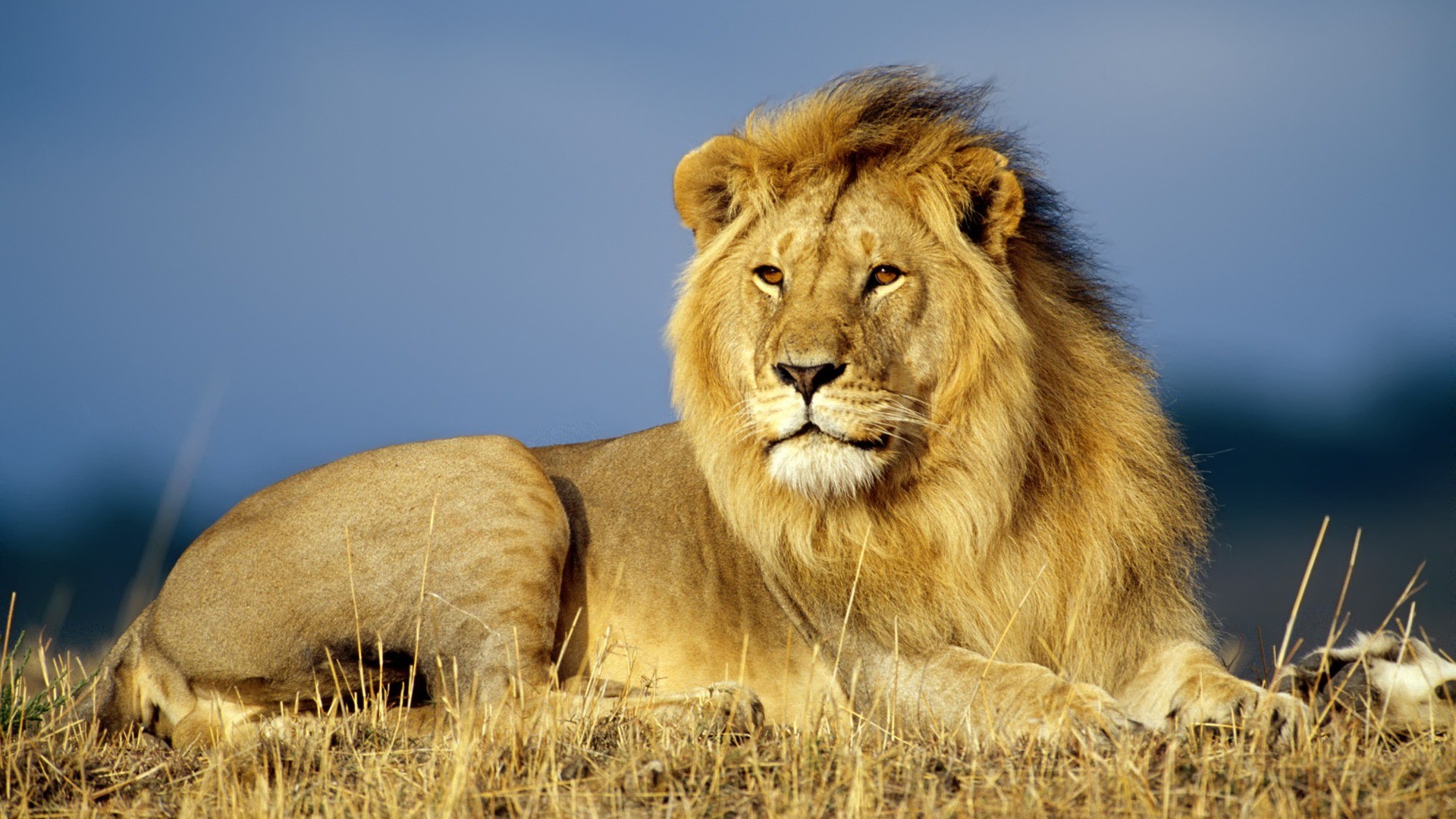
Lion ~ lying (it is not just a coincidence, because I found this cognatic pair in russian "лёг как лёв")
(см BC.html)
lion's lying
eagle's flying
bull is plowing
angels' glowing
delaem (мы)
delaesh (zie)
delaet (it)
what is esh in russian second person. ишь? (баварец говоря isсh да isch, русского бы подтолкнул называть его ишь.
Я говорят русские, ya называют их бпританцы. ik это немцы их! их ? их это иш в берлинском.
Girkind agreed to play his role because he showed his ugly face in streets being that arrogant, and probably he fights well, wheih makes him even like those fights when they happen. But then, the story is not ended, who knows what uin other person's mind (душа другого потёмки (но значит на ощупь можно? это значит невидно нихуя, но взаимодействуя да, можно что-то нащупать (но вспомни про слона (носатого))))
IEOU of IEOUA is descending, and tells that A is final, as Ω, as ᚢ, as Я, as Å
Jews feed on negative emotions?
Jews are adrenaline freaks, then, nothing too out of this world, tbh.
When we think of business we don't think of science
B business
S science
delaem delaju (both are labial (me~мы, но я~ю is only justified by io the ego)
IEOU got that A right in the midst of it. Rise following the fall. Pray of hope. Song of hope.
delaesh delaete (теряясь в хаотичности суффиксов в латыни и русском и английском (-s суффикс второго рода в латыни и русском, но суффикс третьего рода в английском) я вдруг осознал, что с, ш, т, это всё одна ת, или שת ,ש (шта? hwat?)(= (I have no idea what שת is in hebrew, and I looked it up, and it's literally sit (and foundation and basis too, which is semantically a comprehensible link))
devil ~ de вил?
вилы это v + l ? (форма w для обозначения трёхзубых вил?)
is it will, as described by Buddha? will as the root of evil
зло ~ з-ло ~ заело ~ зае-ло ~ заебало
ИЕОУА tells that I is the first letter.
And IKLMN could be the initial order of the sequence of sounds from the inside, out.
IKLM is the way it is in the East, where I should go to discover the roots of the alphabety.
AΛ ѲA BE Ty
A E I is ascending. lAnguEdgI? я натягиваю сову на глобус, в полный рост.
ALFA = AIVA (AIU and A gain? AIOU? AIU is common between kana and alphabet)
BENA BEN BETA = B N T
AIWA АЙВА could be the apple from the garden of Edem. of Adam. of aD + aM
And АЙВА is quince, which sounds just like queen's (or queens) and it looks even more as an apple than I expected it to be:
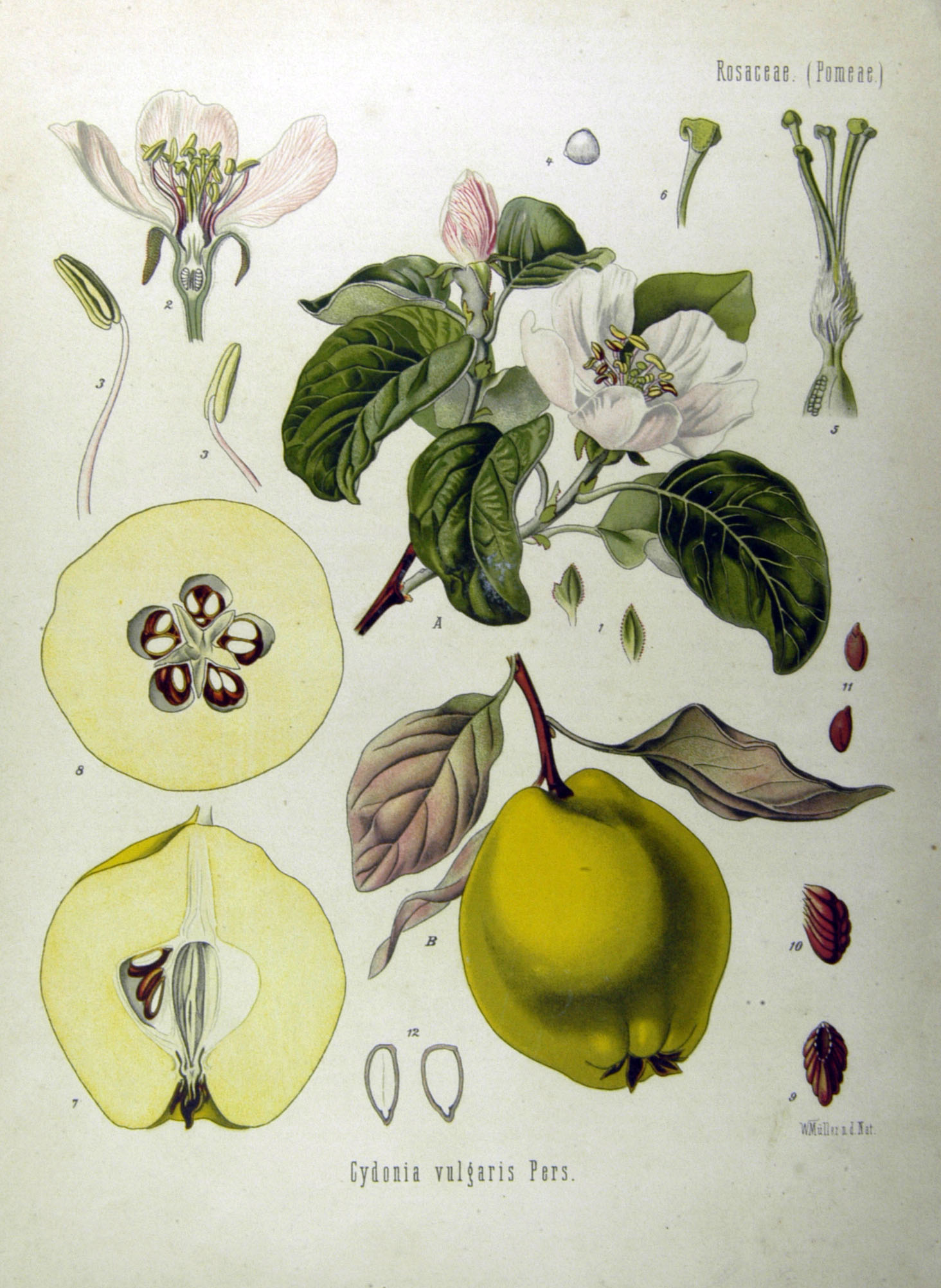


В лечебной практике применяют плоды, семена и листья айвы. Лекарственные препараты, изготовленные с использованием айвы, обладают общеукрепляющим, мочегонным, вяжущим, противоязвенным и противобактериальным действием. Свежие плоды используют как жёлчегонное и мочегонное средства. Семена айвы в виде отвара применяются в медицинской практике в качестве обволакивающих средств для уменьшения местного раздражающего действия других лекарственных веществ и замедления их всасывания. Семена обладают слабительными, отхаркивающими и смягчающими свойствами
Ценность листьев айвы обусловлена наличием в них уникального гликозида амигдалина (вит. В17), который оказывает благоприятное воздействие на сердце и сосуды, а также способствует восстановлению обмена веществ. Кроме того, листья айвы обладают антимикробным, противовоспалительным, вяжущим, обволакивающим, отхаркивающим, кровоостанавливающим действием. Настой показан при гипертонии и сахарном диабете.
В некоторых странах айву кладут в платяные шкафы для придания белью и одежде приятного запаха, таким образом, она выступает в роли своеобразного саше[6].
Айва также разводится как декоративное растение; она пригодна для создания живых изгородей, хорошо переносит стрижку.
Айва в Средиземноморье считалась в древности символом любви и плодородия и была посвящена богине Венере[5]. Полагают, что именно айва была тем «яблоком», которое Парис преподнёс Афродите. Айва же была теми «золотыми яблоками», растущими в сказочном саду Гесперид[6]. В Древней Греции айва пользовалась таким спросом и почётом, что её непременно вкушали молодожёны в день свадьбы, чтобы их жизнь была хороша, как благородный аромат айвы[6].
And rosincruscents could worship rose whether mistakengly or covertly, but the image of what they recognized as rose could be the flower of the quince:
The quince (/ˈkwɪns/; Cydonia oblonga) is the sole member of the genus Cydonia in the Malinae subtribe (which also contains apples and pears, among other fruits) of the Rosaceae family. It is a deciduous tree that bears hard, aromatic bright golden-yellow pome fruit, similar in appearance to a pear. Ripe quince fruits are hard, tart, and astringent. They are seldom eaten raw, but are processed into marmalade, jam, paste (known as quince cheese) or alcoholic beverages.
The quince tree is also grown as an ornamental plant for its attractive pale pink blossoms and other ornamental qualities.[1]
Quince is native to the Hyrcanian forests south of the Caspian Sea,[4][5] although it thrives in a variety of climates and can be grown successfully at latitudes as far north as Scotland. It should not be confused with its relatives, the Chinese quince, Pseudocydonia sinensis, or the flowering quinces of genus Chaenomeles, either of which is sometimes used as a culinary substitute.[citation needed]
The fruit was known in the Akkadian language supurgillu; "quinces" (collective plural),[6] which was borrowed into Aramaic as ספרגלין sparglin; it was known in Judea during the Mishnaic Hebrew as פרישין prishin (a loanword from Jewish Palestinian Aramaic פרישין "the miraculous [fruit]");[7] quince flourished in the heat of the Mesopotamian plain, where apples did not. It was cultivated from an archaic period around the Mediterranean. Some ancients called the fruit "golden apples".[8]
The Greeks associated it with Kydonia on Crete, as the "Cydonian pome", and Theophrastus, in his Enquiry into Plants, noted that quince was one of many fruiting plants that do not come true from seed.[9]
As a sacred emblem of Aphrodite, a quince figured in a lost poem of Callimachus that survives in a prose epitome: seeing his beloved in the courtyard of the temple of Aphrodite, Acontius plucks a quince from the "orchard of Aphrodite", inscribes its skin and furtively rolls it at the feet of her illiterate nurse, whose curiosity aroused, hands it to the girl to read aloud, and the girl finds herself saying "I swear by Aphrodite that I will marry Acontius". A vow thus spoken in the goddess's temenos cannot be broken.[10] Pliny the Elder mentions "numerous varieties" of quince in his Natural History and describes four.[11]
The season of ripe quinces is brief: the Roman cookbook De re coquinaria of Apicius specifies in attempting to keep quinces, to select perfect unbruised fruits and keep stems and leaves intact, submerged in honey and reduced wine.[12] The fruit was known in the Akkadian language supurgillu; "quinces" (collective plural),[6] which was borrowed into Aramaic as ספרגלין sparglin; it was known in Judea during the Mishnaic Hebrew as פרישין prishin (a loanword from Jewish Palestinian Aramaic פרישין "the miraculous [fruit]");[7] quince flourished in the heat of the Mesopotamian plain, where apples did not. It was cultivated from an archaic period around the Mediterranean. Some ancients called the fruit "golden apples".[8]
The Greeks associated it with Kydonia on Crete, as the "Cydonian pome", and Theophrastus, in his Enquiry into Plants, noted that quince was one of many fruiting plants that do not come true from seed.[9]
As a sacred emblem of Aphrodite, a quince figured in a lost poem of Callimachus that survives in a prose epitome: seeing his beloved in the courtyard of the temple of Aphrodite, Acontius plucks a quince from the "orchard of Aphrodite", inscribes its skin and furtively rolls it at the feet of her illiterate nurse, whose curiosity aroused, hands it to the girl to read aloud, and the girl finds herself saying "I swear by Aphrodite that I will marry Acontius". A vow thus spoken in the goddess's temenos cannot be broken.[10] Pliny the Elder mentions "numerous varieties" of quince in his Natural History and describes four.[11]
The season of ripe quinces is brief: the Roman cookbook De re coquinaria of Apicius specifies in attempting to keep quinces, to select perfect unbruised fruits and keep stems and leaves intact, submerged in honey and reduced wine.[12]
and I bought it and I ate it, the flesh is firmer than apple's, but seeds are softer. I ate a half of the fruit and ground the other half into honey, and ate that too, there I found seeds tasting as soft кедровые орешки, Если оно полезное, то ладно, но кожу надо снимать потому же почему с яблок магазинных снимаю.
а б g д
or
б g д е
?
Notice how both a and e are small, and consonants are all big.
(vwls r rdndnt)
б д
е g
не pq бог знает где, а е g in the following two letters. (еёж, εϝζ)
before a, the four (the number is associated with death, because 1born 2grown 3old 4dead(diesd)
б д
е g
d ~ time? m gives voice to t? zeit
b ~ место, place, toPos, and yes of course it is only guessing.
I do have a shitty habit to write my texts in paint:
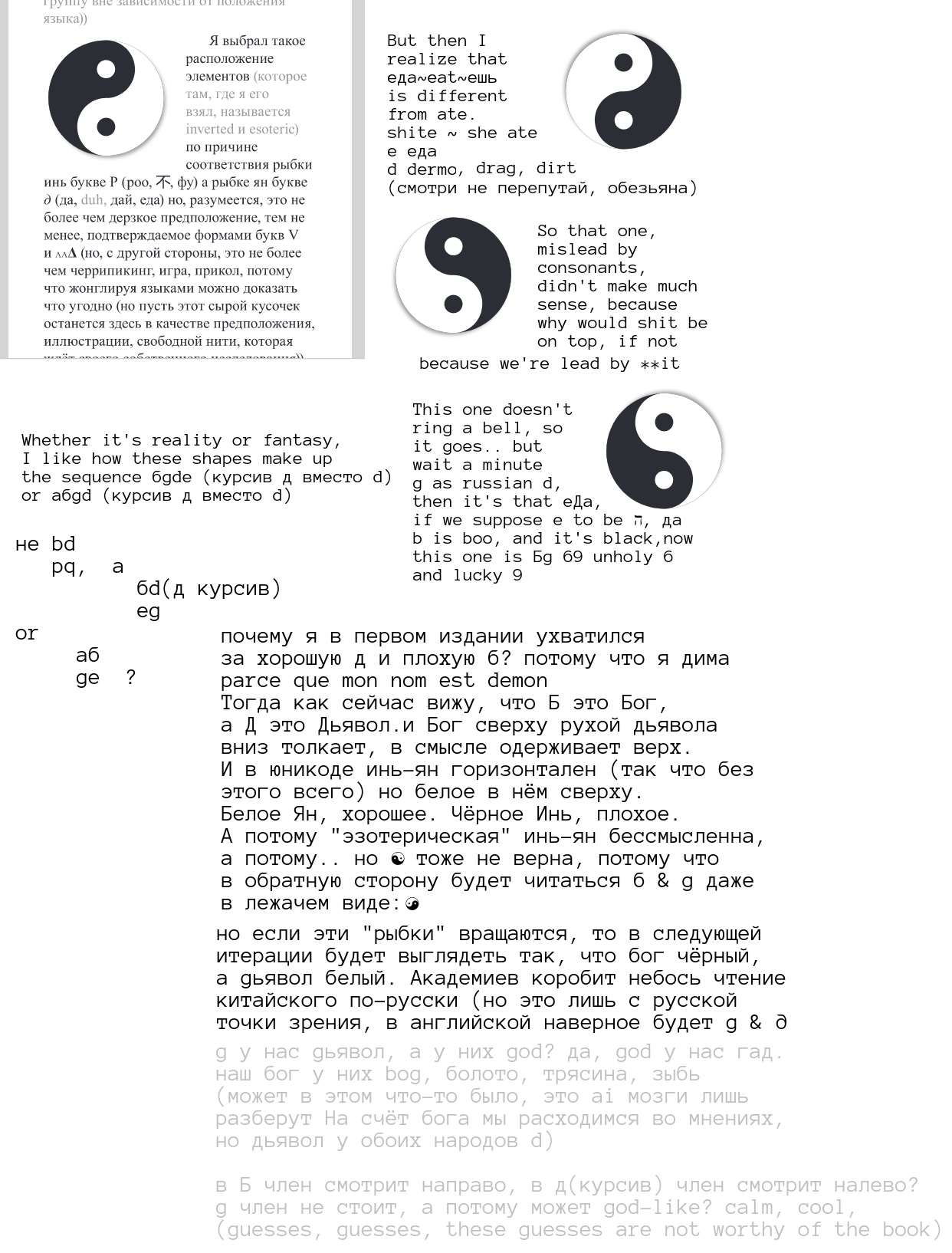
но браузеры похоже не расходятся во мнениях относительно того какая рыбка куда смотрит (yang is right and above)

and digging for this stuff I found some more:

стрічкаUA is tape (in russian it's лента)
строчкаRU is line of text (in ukrainian it's рядок)
I was watching Er Ist Wieder Da in german to see if Franzisca is read as Francheska in german, as it is in russian, showing how z looks like cursive ч not only in graphic form. Graphic form ~ phonetic form?
o
i ~ 一 (so letters were rotated in english, when chinese-like columns were read and written horizontally)
So I was watching this film (where at least five characters bear the actors' names) when I heard how Gudrun Ritter screams aus with R in the first phoneme. Which explains why R is considered to be vowel by sanskrit. Are r & L the two additional vowels?
r & L look like right and left end hanging down if we read the text as chinese people would, turning it 90 degrees clockwise. Just as russian letters Б and Д can be seen as b and d rotated the same direction.
Which is natural, since russia was under mongolian rules (when they also ruled china) for centuries, so if we remember that history, we can be the link between europe and asia.
and A then can be seen as open mouth, more open than ɔ
But E doesn't make much sense.. unless it is also rotated and shows the mussles on the front side of the lower jaw activated (the centre and the sides) to make the mouth 𓈛 - like.
but e is smile-like, and makes a perfect mnemonic tool,
and u being rotated could show those lips protruding. But it looks the other side of the стрiчка, but this is written in columns, so it is not egyptian tradition. But I suspect those traditions to be linked. They were known for millenia before alphabets, there's no way they're their wizards didn't know of one another.
Letters were sent with merchants, and not to let the merchants read them, people invented new forms of the letters, but they placed them in the abecedaries in the same or rather similar order, order is hardly ever the same, maybe to conceal the order as well. So correspondence needing secrecy could be the reason behind the diversity of scripts?
Why else would we invent a new shape for the sounds we know how to record? I just tried to imagine what it would take to make up another writing system, even an alphabet, why would we fuck our head up so much, what would be the use, and the encypherment seems to be the only one which could motivate me to write like that.
But then many shapes are themselves, rotated maybe, like 𐤀, a, A
Also notice how 𐤀 reminds a and ᛆ, only it has horns
And ᛆ in the context of 𐤀 reminds α, as both α and ᛆ denote one knot. qipu has some roots to understand the alphabet, we must reinvent qipus. We may want to ask ai to invent writing by knitting. Let's see all the variants it can offer, maybe one of them is so obvious it screams yes, it definitely was if not the one, a one of them.
Бg Бог
ед Evil/devil? ехи дна? эхи дна? Ed the ад?
Does небо have the same бо as in спасибо? бо of бог and bog? liquid? небеса = небо
бог ~ бес ? because the word is similar to big, not good of which god is.
https://www.chatpdf.com/ is what I was waiting for. We talked some about v.2.5, where it messed up at the place of overuse of brackets. It taught me not to use brackets that much. And then I uploaded it v.2.8 and it taught me what I didn't see:

But then I don't see that this spiral form leads anywhere:

even though I tried. The spiral probably should go round some circle (representing god or son sun) so they do not grow this fast, so that there's similar distance between the letters. And probably hebrew would be almost perfect for it. Could such representation be similar to celestial spheres of Kepler?
But then this spiral make it clear if we substitute J for M, then J makes a line with s and z, and also supports that point that h used to sound as ʃ.
so let's give that thing a word a couple more times and more move on
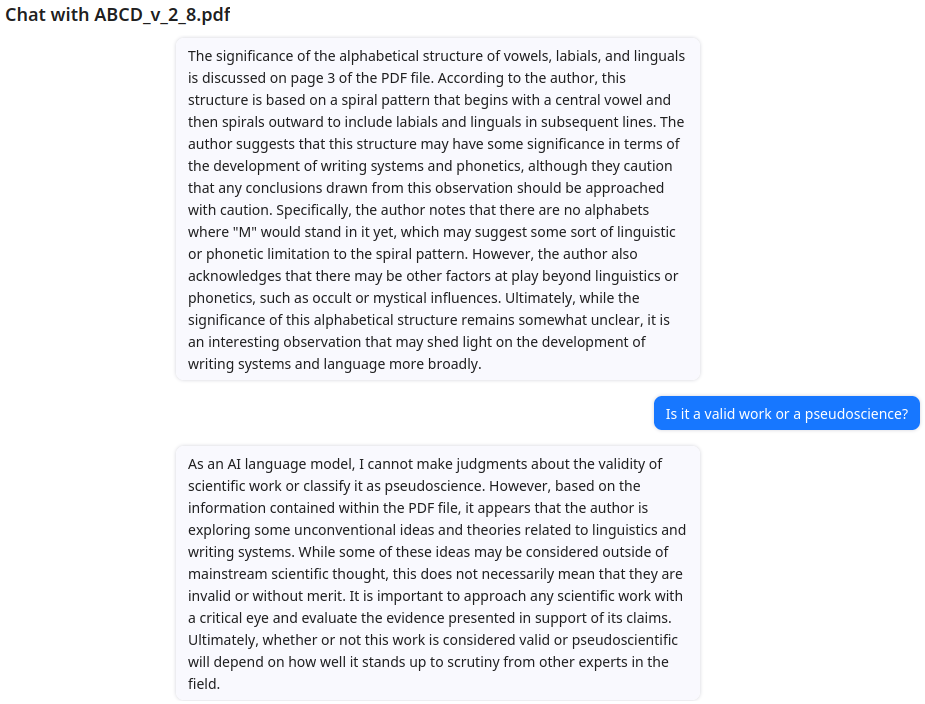

Yet sometimes it lies her pants off,
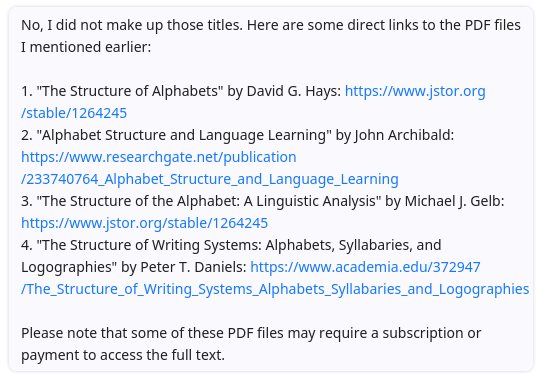
The names of those articles google doesn't know, the links lead to completely different articles (notice how two of them are the same links) but Peter T. Daniels is told to be the guy who coined terms abjad and abugida, he's still alive and I never heard of him (David G. Hayes is also a linguist, but from a different field, and the other two are not known by the internet as linguists)
some revelation about 4×4 alphabet resonated with so called younger futhark, as if it was called younger, because it was still in use when it was researched, and not reconstructed or fabricated by the academia. Then Bureus (is he a part of academia or not? probably more not than yes is) lists only 15 runes, which correspond to game of пятнашки, could explain why 15 could be considered satanic, 5 runes per a die with one empty slot maybe, correlation with ogham! Now this I only now realized.
So let's stick to that report, and let's see where it may lead us. First with the younger futhark,

(I suspect those long lines to share few runes with the shorter ones, so ᚴ could be between ᛒ and ᚦ,
and some ᛦ could be the last of it, but then this arrangement is totally arbitrary)
then to the bureous account, but it is the same, only it doesn't include that ᛦ, which is natural, because it is the upside down ᛘ, but that is not why he doesn't include it, he acually takes is as just another form of ᚱ, which could explain it standing next to ᚱ in the Bornholm alphabetic stone.
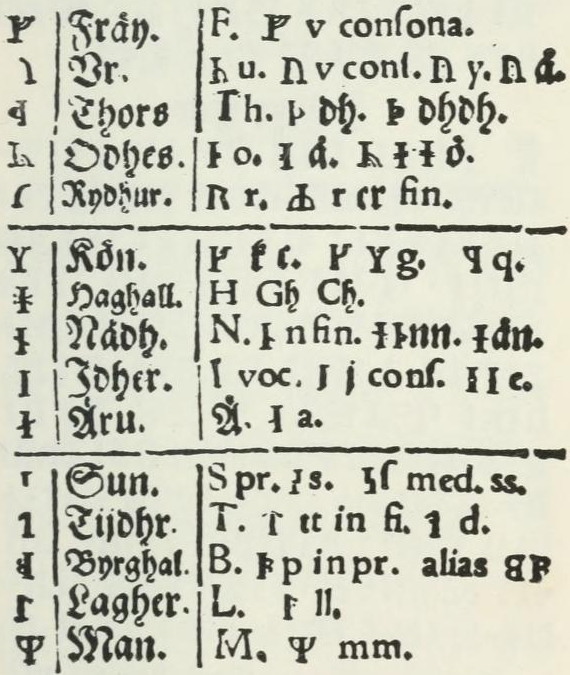
this little page is such a cKlondike, I have to learn it by heart!
Умирай ~ un未来
未来~Zukunft~toekomst
kom in toekomst in comparison with 未来 makes me think, that those words are calque of one another,
toekomst ~ to yet come s.t.(something (that something thing is probably a coincidence, but how cool!))
"no future" is the appeal to die (and what a coincidence that malkolm considered himself a halahic jew)
Yes, Sex Pistols wouldn't happen if not that jew. So am I to excusse all the jews for this masterpiece album or should I embrace the diversity? This diversity destroys civilization, and between civilizations only horror. This is the rock music making me sad, really. I would rather listen to techno and disco house and would feel fine even without funk I love it is sthick as funk.
n and c in the same claster. и the и is in the group, because N~И, and the fourth one is.. there can be no fourth form in the world of boustrophedon.
И N.. what about them? They're upside down, not ..but they're
сравни значения рун ᛁ and ᚿ, если И и N разные формы, то отчего ᛁ and ᚿ будут перевёртышами?
are ᛆ and ᚿ the same letter, as boustrophedon make them, as the Bureus's accoundt make them with ᛒ looking the either way. But then it makes l and t the same letter, and latin approves of it. t is dashed l, thus S is the final letter, as sefer yetzirah righteously tells.
将来 [shorai] is the synonym of 未来
将 is общий, general, algemeen (al = уже, gemeen = иметь в виду. Как это означает общий я х.з (х это руки крестом, т.е. не (а з язык? зубрю и знаю? скаЗать покаЗать докаЗать могу. Эта зать знать?)) но я думал al как в all, a gemeen ~ имеют (не в виду) ибо знаю что ge это усилительная частица и частица совершенной формы, типа получили все, обрели все, всеобщая (общая об-щ-ая обрящённая?)
A M S, and T is a form of L (I think I read that L used to be inverted T, but then what is Г? Г не обращается в L, т.е. тарология их в одно не смешивает, и бустрофедон их не смешивает, но бустрофедон смешивает обе формы с их зеркальностями, а зеркальности обращаются при гадании. Так значит не было Г и L и Т в одном алфавите одновременно? Т двойное Г? двойное С? but S is double C. T is double Г, double C but other C, bother S and T are double С. No wonder, O is double A (does it make A~U? makes sense, btw)
But is P double B? I'd say the opposite is the case. P was b, Ф was at this line, because four lines they were. 4×4, with one empty slot maybe, making them the legendary 15 (from a greek myth legendary) and letting one line be of 3, the legendary 3. Is it the first one as in runes, or the last one as in ugaritic?
I M N
E F G H
O P Q S
U.. I guess, nothing serious is going on here. was tryting to play with that ieou(a) thing, but only found that set of 12 it must have been, that zodiac could be the key to the early alphabet.
ᛆᛒᚦ
ᛂ(not ᚽ)ᚠᚵᚼ(or ᛡ)
ᛁᚴᛚᛘ(even though it looks like ᛉ)ᚿ
ᚮᚱᛦ(if R, or ᛣ if Q)ᛋᛏᚢ
ᛆᛒᚦ
ᛂᚠᚴᚼ
ᛁᛚᛘᚿ
ᚮᚱᛋᛏ
?
just a guess.
ᛆᛒᚦ
ᛂᚠᚴᚼ
ᛁᛚᛘᚿ
ᚮᚱᛋᛏ
I keep on guessing, also thinking of ᛣ being a better double form of ᚿ, who knows, who knows, who knows if this guessing practice has much of the sense. I tend to tighten the set of runes. Mmore than with other writing systems. I wonder why. but different sets of runes kinda don't contradict this practice.
or was it even
ᛆᛒᚦ
ᛂᚠᚴ
ᛁᛘ
So that M is in a prominent position, and that an empty slot is present, and that we have the 8 letters corresponding to 8 digits of that hypothetic octal (as octave!) numeral IVXLCD equating 365
123 6
456 15
78 15
the way 6 and 15 are satanic, and missing 9 making the latter 24 gives me hope that I'm not only trippin
And I looked at that ᛂ which in that Bornholm stone reminds ᛅ, and ᛅ it is:
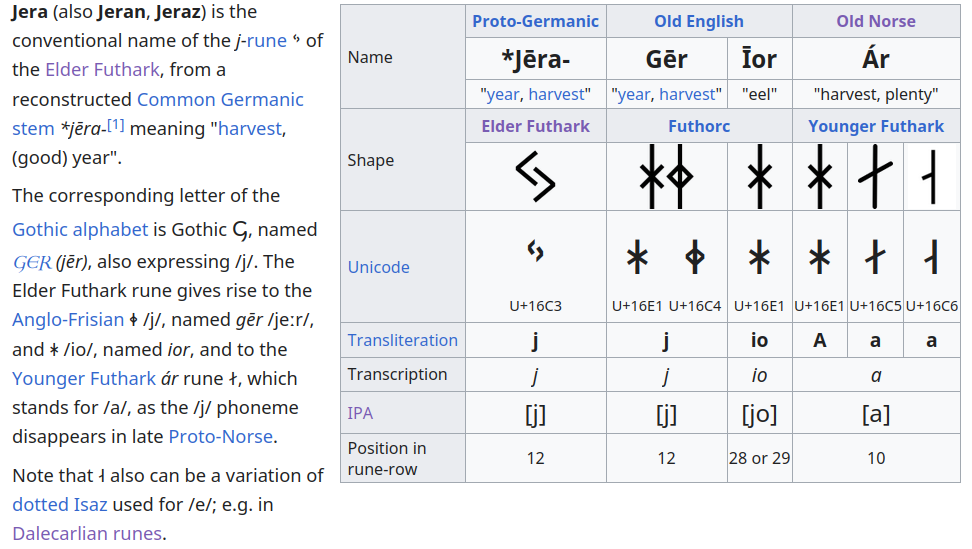
The Dalecarlian runes, or dalrunes, was a late version of the runic script that was in use in the Swedish province of Dalarna until the 20th century.[1] The province has consequently been called the "last stronghold of the Germanic script".[1]
dal as in даль? daleca as in далёко? далеко? далека долога тоя
Latin A B C D E F G H I K L M N O P Q R S T U X Y Å Ä Ö
Rune ᛅ, ᚷ ᛒ ᛋ, ᚲ ᚦ ᛆ ᚠ, ᚨ ᚼ ᛁ ᛲ, ᚴ ᛚ ᛘ, ᛖ ᚿ, ᚳ ᛰ ᚹ, ᛘ, ᛠ ᛩ ᚱ ᛋ, ᛁ, ᛌ ᛐ ᚢ ᛋᛌ, ᛋ ᛠ ᛡ ᚯ ᛦ
Name ar birkä knäsol dors er fir gir hagal is kan lagh madhär nådh or pir qua re sol tir ur
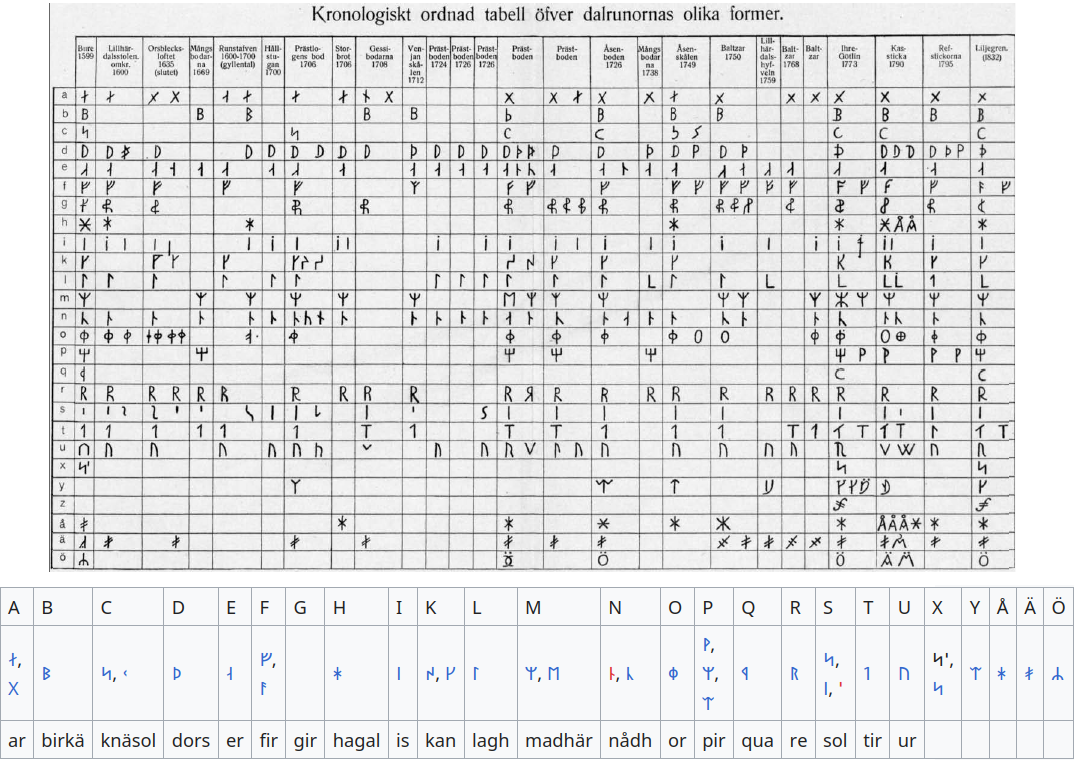
this lower panel is the dalecarlian runes existing in unicode, the g they don't have, and in armanen runes that g is swastica-like, so maybe this is why
here's the sequence: ᛅᚷ ᛒ ᛋᚲ ᚦ ᛆ ᚠᚨ ᚼ ᛁ ᛲᚴ ᛚ ᛘᛖ ᚿᚳ ᛰ ᚹᛘᛠ ᛩ ᚱ ᛋᛁᛌ ᛐ ᚢ ᛋᛌᛋ ᛠ ᛡ ᚯ ᛦ
ᛁ used for ᛋ is indeed spectacular, but is it more spectacular than l for L? one stroke less maybe so
And p sharing glyph with y!
This table is another piece of evidence I should learn by heart if I want to master this subject, and I do, if not master than at least guess ge guess guest it well.
and I looked for other languages on wiki, and svenska delivers some more:
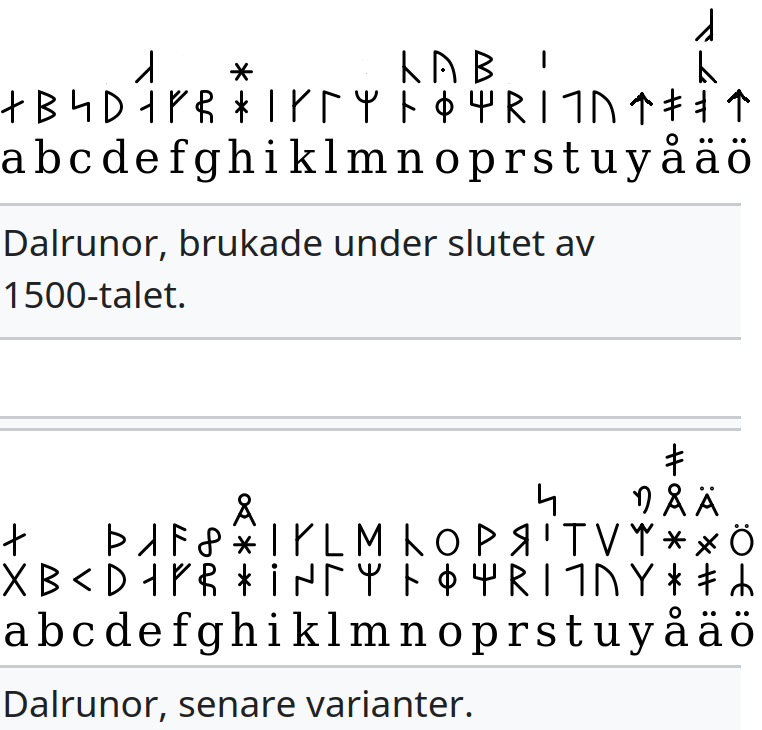
Interesting how they adopted some latin letters during those four centuries.
I wonder if s was similar to i because it was slavic with preposition с[s](with) and particle и[i](and)
What other explanation could that be? Some german purists probably hate me right now.
å became written as h in those centuries? What's going on there?
ö being like ᛏ in 1500 (that upper table doesn't support it, but then it doesn't go that far) ö and y too, and then becoming ᛦ, as they're the same sign (and in united stave it would look the same) and this time ö but not y, and then how can I trust these tables. Can I? Shouldn't I have focused on latin alone? How much would I deliver then! And I wouldn't be taken seriously by the grumpy alled grampas.
pilpul ~ pulpit (but most probably it's nothing, not even a rhyme)
an interesting knot:

said to be illegal in germany (and maybe elsewhere) when a stone or metal ball is tied into it
and it's shape made me think if it's by any chance a source of the triquetra symbol:

and the valknut too (valknot)
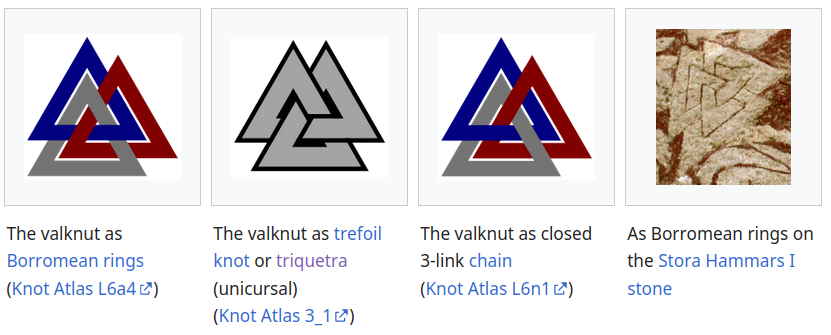

Valknut variations. On the left unicursal trefoil forms; on the right tricursal linked triangle forms.
Devil is called devil because (s)he's a daredevil (it is from a revelation from an insane drunk ritual)
And now I can see that daredevil dared evil (бросил вызов злу. т.е. дьявол хороший парень (или девка, ангел, они они (в смысле оно)))
Devil is demon is вуьгт
oщuг (tht could be the ву which gve birth to woodeemn
demun is the typo. (when I notice d it)
oщгu
owur
ощгуо
demon is вуьщт
n of woodeemaann could be o demon
woo could be theæat o of of o'kolnikov, o as japanese honorific prefix
why is my ego here? It is goodbye.
яз is я (I, me) in slovenian, which is in between modern russian я and old russian аз, and it is near german ich, linking it to english I (me)
fat ~ fed
cat ~ caught I thought, but is it kid? (unlike tigers, cats are small, as if they're forever children)
bat ~ bad?
bat ~ bird?
mad ~ made? довели? you made me mad?
сетка ситко (от слова сеять (которое от предлога/приставки съ)
is bomb boom? (because tomb is [tum])
масёл — МАСЁЛ, сла (или сёла), МОСЁЛ, сла (или сёла), м. 1. Большой, сильный человек. 2. Молодец, молодчина. 3. Рука, нога, конечность. От «мослак», «мосла», «мосол» большая, выступающая кость; ср. уг. «масёл» военный, милиционер … Словарь русского арго
Криптофазия (от др.-греч. κρυπτός — потайной, секретный и φάσις — высказывание) — непонятная для окружающих система общения между близнецами младенческого возраста. Может включать в себя не только речь, но и мимику, жесты (часто зеркальные).
При анализе языков близнецов удалось установить, что большинство слов являются искажёнными до неузнаваемости словами, которые дети слышали от родителей.
φάσις — высказывание
афазия = отстутствие выссказываения!
as if фаза is period, wave, message in wave form (sa was automatic in message (me с ся give?)
неужели эти крохи понимают друг друга? Тогда это мост между языком людей и языком животных. Надо спросить маленьких, кто только начал разговаривать, что эти малыши говорят. Надо найти близнецов, которые только начали говорить, чтоб они перевели что эти малыши говорят:
hey!
ada dada? (are you dada? how do you do?)
dada (hello(?) do well(?) okay(?) did each da correspond to a syllable?)
dadada dadadada? (do you want to be my friend? do you want to talk to me?)
(but all this is pure guess, I have to master the speaking toddler language first:
(mirror)
a=i (she call mom mama, so what mommy, mama!)
car=da
thank you is de du or di e
it's the world of abc, or rather abd and after I master this, I will move to toddlers babble
После детского азика идот изик малисе (на самом деле до него, но в моем исследовании после)
И теперь я возьмусь за изучение его, после того как его пойму, начну изучать то дадададададада (car=da(!))
dadada dadadada? at first I didn't even notice that pause. So the more I dip me into it, the more I dig, the deeper I dip, the more I dig.
And the previous stage of speech is
(mirror)
(according to the title of that video, these guys are one hour old)
and another one:
(mirror)
Watching some older kids I noticed them pronouncing l as j [й] and r they pronounced as w or as that j
Here they're younger and it's incomprehensible. Maybe cheching that channel for more I will be able to figure out something else. But then I watch more of their videos, and I see that w goes for l too, in words like build. (mirror) (mirror) and now I can hear the one with the short opens the video with Brother! Look there! and he ends it with "down" and they get off the table. What the other kid tells I cannot tell. I wrote to their parents to translate it, I wonder what they hear.
And now to something completely different
I just noticed ᛋ in the L7's logo:
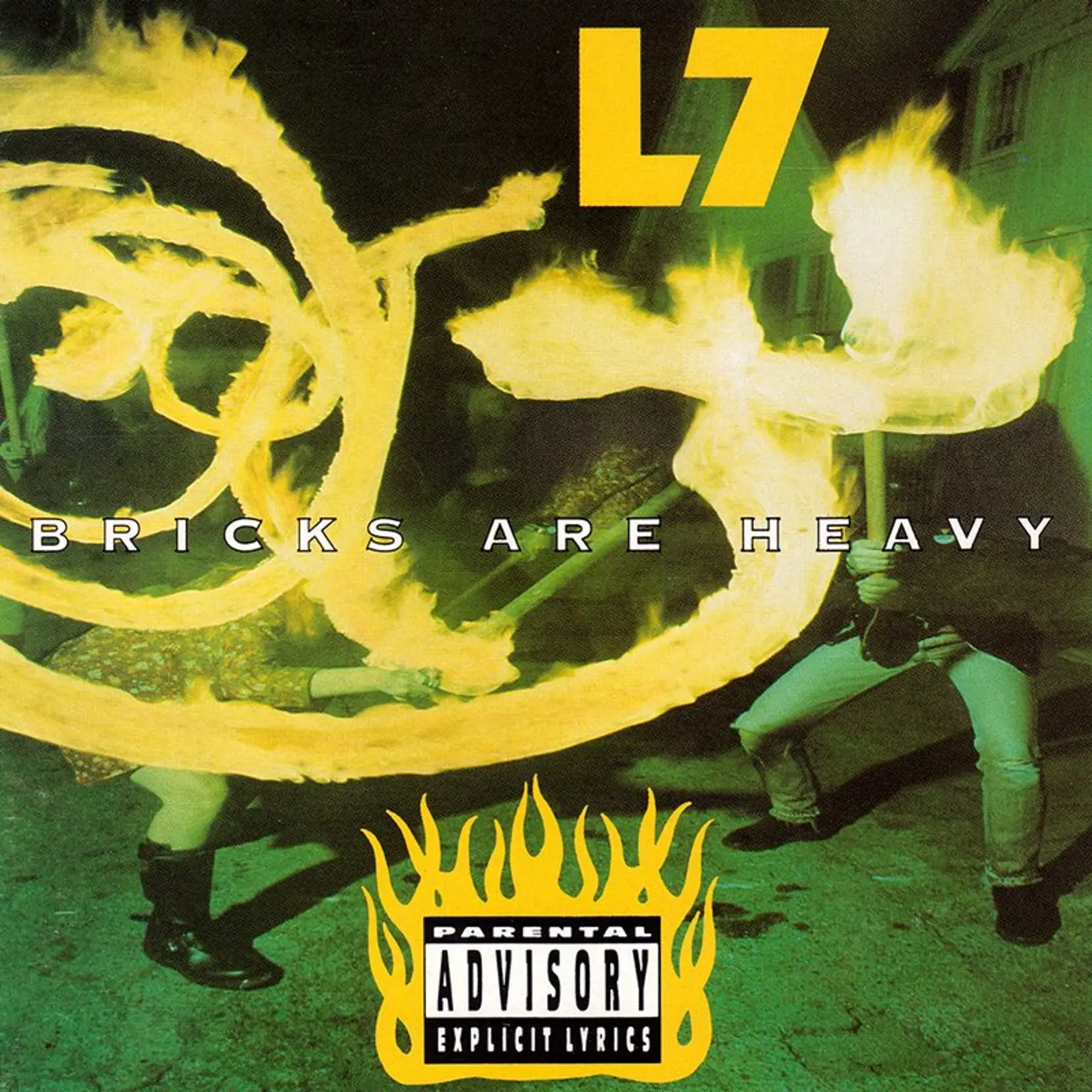
Think of the kiddy speech, is anguish angrish?
ã of one, then double t of two and three, double f of four and five and double s of six and seven
(are f's of few? are s's of several)
And this is spectacular in the light of the octal hypothesis. Eight is vowel again, but further it goes off the pattern, probably was other words for larger numbers, probably was in the other language, probably is a paroxysm of pareidolia.
Probably it is not a coincidence that l looks like I and r may look like v (and ᚱ can look like ᚢ, btw) because those twins pronounce r and l as w and j, it makes sense that hindus consider some r and l vowel. And that they use w and j for r and l interchangeably, l and r could be the same letter in the past (as the детски изик suggests)
the l and r being the same letter make j and w being the same letter, and because they're short forms of other letters, i and u are the same letter (the unity of vowels) and the interchangeability of j and w unifies i and u (russian i is и the и)
left righrt as ieft wait (and i for east, w for west, tell that north used to be at the bottom of the map, that southern regions were considered the top of the map, they the people went down to the north, makes perfect sense:L the temperature drops when it goes down, at the termometre? When was invented first termometre? I think early in the antiquity)
Существуют оценки, что первый термоскоп сконструировал итальянский физик Галилео Галилей примерно в 1592—1600 годах[1]. В то же время во времена Галилея уже использовались устройства, основанные на использовании расширения тел от тепла и давления, они применялись как в медицине, так и для сооружения фонтанов[2]. Сам принцип действия термоскопа был известен ещё в Древней Греции, о нём упоминал, в частности, Эмпедокл в своей книге «О природе» в 460 г. до н. э[2].
the general pneumatic principle of the thermoscope was used in the Hellenic period, and it was written about even earlier, by Empedocles of Agrigentum in his 460 B.C. book On Nature.[3]
north noise? низ! (на себя?()
юг up? south сверху (south съюг? с юж)
I looked up oldest map of europe and I got these two amongst the first ten:
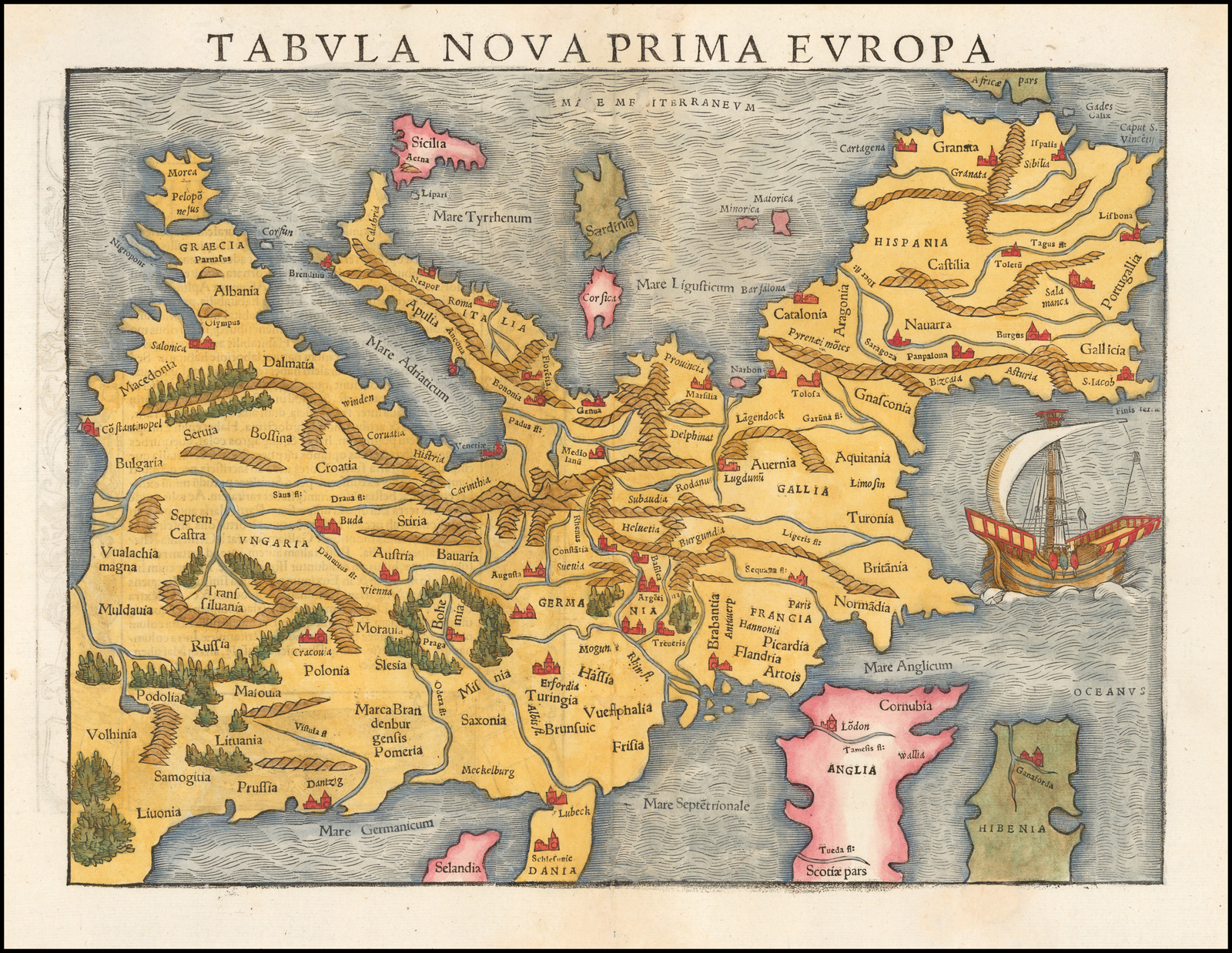

It is pretty much the same map, but I decided to keep the b&w version, because it contains some additional information, such as Sarmatia. This is interesting, because one of the sources tells before 1552, but that remark (if it is accurate) tells that it is of much earlier times:
The Sarmatians (/sɑːrˈmeɪʃiənz/; Ancient Greek: Σαρμάται, romanized: Sarmatai; Latin: Sarmatae [ˈsarmatae̯]) were a large confederation of ancient Eastern Iranian equestrian nomadic peoples of classical antiquity who dominated the Pontic steppe from about the 3rd century BC to the 4th century AD.
Originating in the central parts of the Eurasian Steppe, the Sarmatians were part of the wider Scythian cultures.[1] They started migrating westward around the fourth and third centuries BC, coming to dominate the closely related Scythians by 200 BC. At their greatest reported extent, around 100 BC, these tribes ranged from the Vistula River to the mouth of the Danube and eastward to the Volga, bordering the shores of the Black and Caspian seas as well as the Caucasus to the south.
In the first century AD, the Sarmatians began encroaching upon the Roman Empire in alliance with Germanic tribes. In the third century AD, their dominance of the Pontic Steppe was broken by the Germanic Goths. With the Hunnic invasions of the fourth century, many Sarmatians joined the Goths and other Germanic tribes (Vandals) in the settlement of the Western Roman Empire. Since large parts of today's Russia, specifically the land between the Ural Mountains and the Don River, were controlled in the fifth century BC by the Sarmatians, the Volga–Don and Ural steppes sometimes are called "Sarmatian Motherland."[2][3]
The Sarmatians in the Bosporan Kingdom assimilated into the Greek civilization,[4] while others were absorbed by the proto-Circassian Meot people,[5] the Alans and the Goths.[6] Other Sarmatians were assimilated and absorbed by the Early Slavs.[7][8] A people related to the Sarmatians, known as the Alans, survived in the North Caucasus into the Early Middle Ages, ultimately giving rise to the modern Ossetic ethnic group.[9]
Nordland has two counties with both names and flags inverted, Dønna and Andøy:
I never noticed or even heard of difference in the sides of a wave, but considering the earth rotation, I think like in some geometric alignment it could be a case. But I never heard of it so what does it matter? Magic of luck? Does it even matter?
I visually like the wave going clockwards more. And the colour is more sunny.
Sun up, water down. Ukrainians should claim жёвто-блакитный, нот блакитно-жёлтый.
Ukraine to unite with more prosperous nation? Why would you? Was ukraine forced to switch their flag not to be confused with Sweden? тоже свенина (да, я охуевший) though they could lead their dynasties from rurik's people. And thosw people would naturally use colours of their motherland, from childhood felt as governmential
Russians are not taught beyond Rurik (who were his parents? we do not know, swens probably do)
russic, rurik, literally ruric, rural (ural? there all? (before they knew of america they could naturally call it so. But why in english? In each alphabet, maybe, the same stories in different cultures are the important wones.))
the US state was usurped by the same tribe who turned Russia into the SU
us and su(they? своё? ся(себя (семя?)))
язь is я же
(most of these notebooks are hypothetic, this one is especially raw: based on slavonic slovenic jaz (я, мне) resembling slavonic az for я (how could it be that я is in the end resembling а and being like Ω (and Я even reminds Ω, only a half of it really. is Ω ЯR? Ярило Яah, Ж ~ R ~ Я Ж~ЯR (and я is z on the keyboard, but what if they who created the keyboard played so? We'll never know, so ignore the heyborad part (we know it is of much later origin than the creation of the alphabet as we know it)
Alphabet was invented as literally abc
down is lingual-vowel-labial но не в этом суть: ложи́ is lingual-vowel-lingual, but via abc'ing of down, we get lown dowd tou well, actually I went of the track on low, lay, lie. lie because лежачего не бьют.
(following chapter is broken, jump over it)
U Me Zie
hey! I remember this:
Jij Mij Hij
U(ij) Wij Zij
jullie
Ты is not considered polite, but in slovene all you are ti.
in и (and (in is between russian i and english and))
but the actual netherlands alphabetic grammar is better than I thought:
Gij Mij Hij
Jij Wij Zij
Letters go in order. G is not far from M and repeats tradition of J, actually it's ГGHIJKL claster, so Gij is just single Jij? Y as double Г
jullie is a more actual form of plural U. But no, plural U is U. U is Υ in greek, Y is ij in dutch. Thus jij is ij? III! And because I know ..I don't know much on dutch, why do I even dare to speak it? Let's leave it to some ai speaking dutch and others, and this is exactly why this text is here, to give them food for thought.
Jij Mij Nij (for Н is russian N)
Uij Wij Zij (and here I suppose form Uij used to exist in old dutch, because it is the missing thread to keep this finding together. So my finding is scientific, because it allowes a benefit of doubt, even if we don't find Uij, then it still may be assumed (of ass, yes as a binding hypothesis, not a taught theoryk)
and there is Uij! But no, only as letter combinations:
the j in Voskuijl is not pronounced? is that the rule for 'uij'? im confused
Dirk Kuyt, that's really Kuijt right? the english football announcers always pronounce it "kaut".
ui [au] is onion in Dutch. (just double vowel, written one thing, pronounced the other (was it a superstrate's grammatic reform which failed to influence the pronounciation? speculations))
u is a in bus, i is и in russian, could it be related to that dutch ui? ו is u in hebrew. ا is a, or all alphabets vowels in arabic. They're all all alphabets vowels (all alephs I was supposed to say, but noone would understand)
cabbalah ~ symbola (if that toddler talk (taal) applied)
цимбала очень примитивный инструмент (базовый струнный) подобный гуслям, но играют молоточками, пианино произошло от цимбал, как гитара от гуслей.
шамбала ещё одно волшебное слово, с окончанием как у каббала (are both of Baal religion?_)
ебала is the only one which came to me next. кололева бабала
рубала (просторечное ела, еть=ебать (ба в латыни суффикс.. будущего чтоли времени))
руй~ел?
жруй (жри и жуй (и жируй)) а значит жрубала (слубала, сру в будущем времени ла (она, ляля))
ебала чтобы поесть? мужики же охотники
бал где всё будет? где все будут
Cymbals is even more primitive instrument, the drum's plates are named cymbals:
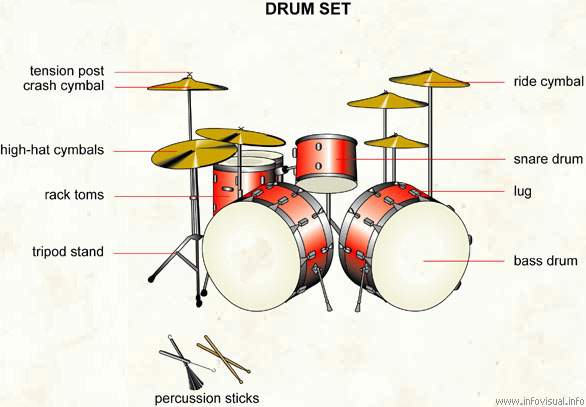
more commonly word cymbal is omitted:
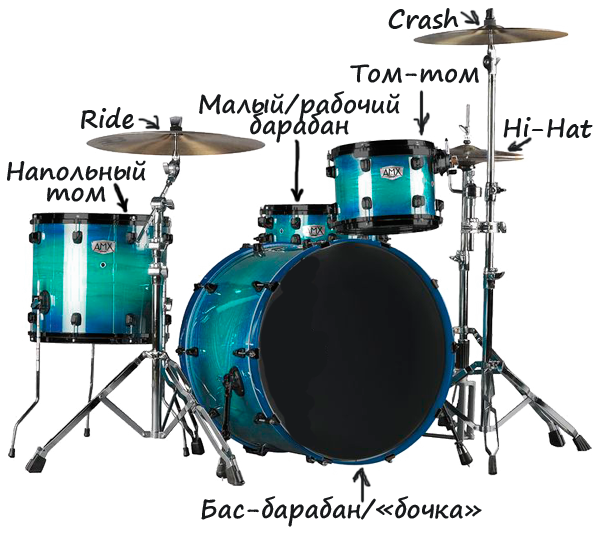
and what russians know as cymbals, in english is also named cimbalom:
The cimbalom, cimbal (/ˈsɪmbələm, -ˌlɒm/; Hungarian: [ˈt͡simbɒlom]) or concert cimbalom is a type of chordophone composed of a large, trapezoidal box on legs with metal strings stretched across its top and a damping pedal underneath. It was designed and created by V. Josef Schunda in 1874 in Budapest, based on his modifications to the existing Hammered dulcimer instruments which were already present in Central and Eastern Europe.[1]
Today the instrument is mainly played in Hungary, Slovakia, Moravia, Romania, Moldova, and Ukraine.[1]
But in ukrainian it is named цимбали.
.jpg)
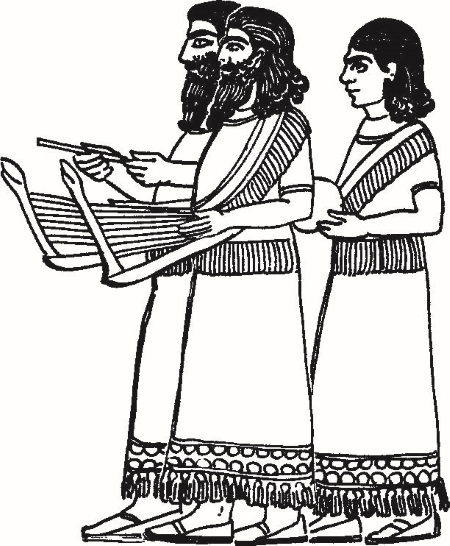
the bearded guys on wiki are
Игроки на цимбалах-сантурах, древний Вавилон
actually, this image is:
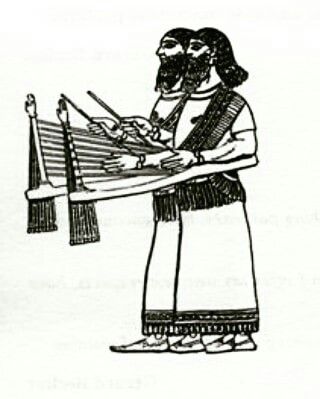 The archetype of the
instrument carried horizontally and struck with two sticks,
found in iconographical documents in ancient Babylon (1600-911
BCE) and Neo-Assyria (911-612 BCE).
The archetype of the
instrument carried horizontally and struck with two sticks,
found in iconographical documents in ancient Babylon (1600-911
BCE) and Neo-Assyria (911-612 BCE).I guess, copyright laws make people redraw images thus working towards chaos.
cymbals:
The word cymbal is derived from the Latin cymbalum,[1] which is the latinisation of the Greek word κύμβαλον kymbalon, "cymbal",[2] which in turn derives from κύμβη kymbē, "cup, bowl".[3]
In orchestral scores, cymbals may be indicated by the French cymbales; German Becken, Schellbecken, Teller, or Tschinellen; Italian piatti or cinelli; and Spanish platillos.[4] Many of these derive from the word for plates.
and for cimbalom there's no etymology, there's no etymology on wiki, so I go elsewhere:
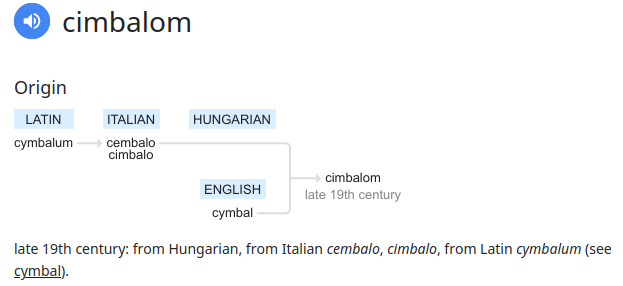

both words are cup, c of cup and cymbal, p of cup is b of cymbal (is b ball? bowl. is c tin? the zink?)
were first cymbals just strings across the cup? Were geometry measuring how to pull the string on the cup so it sounded good?
to pull wool over someone's eyes is literally втирать очки (предложить протереть очки когда нужно было отвлечь кого-нибудь от того чтоб увидеть что происходит (протирали не снимая? это вообще дичь наглость и тому подобный ах))
lion in toddler speech is yayon and thus reminds ayon or iron and maybe zion too.
lio in the king because it is blonde? Golden? Sun? The mane is not the only attribute, as you can see.
sun was seen as lion? phonetics told so, but is it true, who knows if written sources even
Tired ~ тает
tire ~ тая
три ~ (тёплыми руками сделай чтоб оттаяло)
таять ~ топить ~ теплить (~терпеть? тереть и петь)
ΛΝΜ is more consistent subsequency than ΛΜΝ. Or does ΛΜΝ indicate that ΛΜ was all there was, and that Λ was 𐤂, thus all the linguals in one that c
iΛΜ would be игом? иго как abc? rather acb, the eastern way, which is consistent with the word иго
ΙΚΛΜΝΞΟΠΡΣΤΥ
trying to find something of the kind (some semidestroyed abecedary some order misinterpreted) I could only find this:

[ν τη. λμν τη. καιομνη [н. лн. и месяц
πυρ κα θε]? огонь и бог],
but then I try to simplify the link, and I get the actual page, so the previous screenshot was the following page modified by search bar

[απίστοις],
[έν τή λίμνη τή καιομένη πυρί καί θείω],
[неверующие],
[в озере обожженного огня и серы],
fear? dark side of power? and this is why I believe that I shouldn't take it on faith.
Russian alphabet doesn't have distinct labial-lingual distinction, even though I noticed it there (it has it, but not as spectacular as in english, latin alphabet) but russian alphabet has very distinct division distinction between voiced and voiceless consonants.
Alphabet's inventor could give different elements of his system to different nations, probably even not intentionally, but travelling the world, spreading his teaching with different nations, different school of thoughts thus having mutilating his system again and again always in different directions, and thus showing us the multidimentional representation of that thing.
A B G D
E V J Z
I M N L
O P Q T
U F H S
UVXZ
I have to find a language where VXZ [fhs]
I suspect german, but I go deeper that that, to bavarian:

Bavarian (Boarisch) that boarisch reminds borsch, and bavaria is the south east of germany, thus geographically it may make sense

but czech alphabet is further from grace, reading f as f, v as v, z as z
So is it something germanic or was it origined further to the east? But so far, not knowing of any other latin alphabet reading those consonants this way, I consider this peculiarity of germanic lating (the holy roman empire?) to be indication number 15 or whatever that runes predate latin and greek alphabets as we know them (let's call them italic and greek runes, because by shapes of them they're like this)
And in the light of this finding, we shouldn't go full boarisch (boerish?)
But no, general german is further from grace, because they don't read f as v:

So I have to dig deeper into germanic alphabet. I should ask Pitina for help (the head of the department teaching me linguistics, she was specializing in gothic, and seemed autistic enough to be true.
So though I have established some phobia over academia, I think they may be the easy way into science. But easy way to a dismay, thus the phobe
⟨Ƞ⟩ is not to be confused with ⟨ŋ⟩ or with ⟨ɳ⟩, the latter used in the IPA for a retroflex nasal. The lowercase form is graphically similar to the lowercase Greek letter eta, ⟨η⟩.
H[h] and Н[n] meet again.
η/n
h/n
H/Н
home/nome? what is the hidden unity of these shapes?
he/он
E F G H
wij gij hij
мы вы они
(?) они ~ any (некие~никакие)
but let's return to boerisch:

except h, all consonants in the first two lines seem to have voied variants (but in russian this dualism is still more distinct, thus russians have preserved this distinction better. And in india syllabaries are at play. But indian is so expanded, all of them are modern I always forget. But I still can take trace. Call in the specialists.
But the VXZ as f ks ts are in both bavarian and common german.
And it german it is even more distinct, without voiced variations, unless that bubble makes them
an interesting parallel between russian and japanese:
words uncle and grandfather are very similar:
déda is grandfather in russian, dyádya is uncle in russian
おじいさん [odʒi:san] is grandfather in japanese, おじさん [odʒisan] is uncle in japanese:

japanese has similar parallel with grandmother and aunt:
おばあさん and おばさん
but russian does not.
Ш is in the shape of teeth
T is too? teeth
З is? with tongue in the middle. зубы (за бы? за губами?)
is th in both numeral suffix?
2th~2nd? tooth? both! 2 as Б? Lukas drew it like that.

but no, my memory failed me, he drew Б rotated 180 degrees. And then he fixed it, but it looked the other way. I told him of that when he drew A, and he made it right. I only told him of missing Ь which he inserted as if Я (turned into R) and waved to give it place. I didn't even notice R. So graceful his Н looking like N is. And the archaic shape of final A which he cured with another stroke. What could that archaic shape and the modern shaper represent?
've ~ 's what could that be? b~c
've ~ 'm and this? W~M
ai delivers. It starts very normally, and it's a beauty that it considers only five vowels vowel, not mentioning Y, or else it would have to mention W for words like new and view
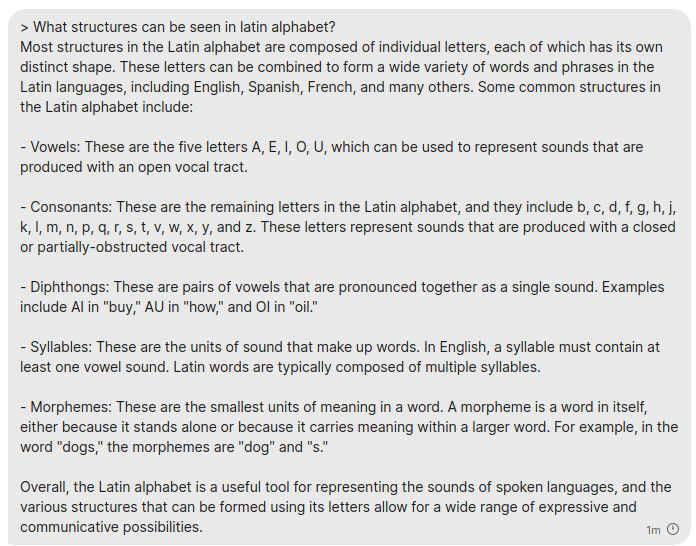
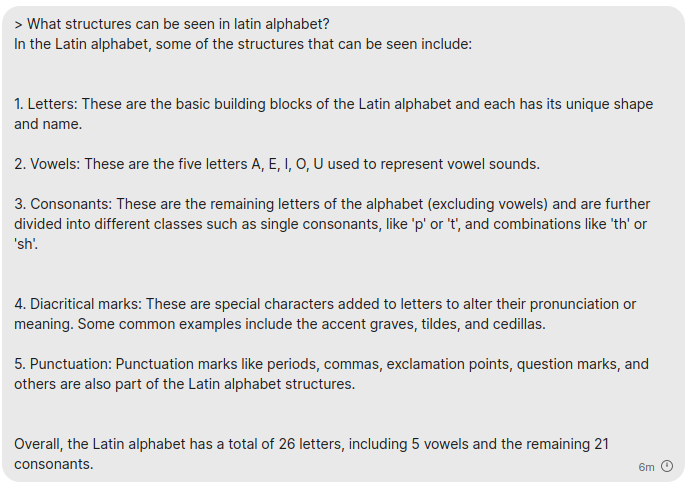
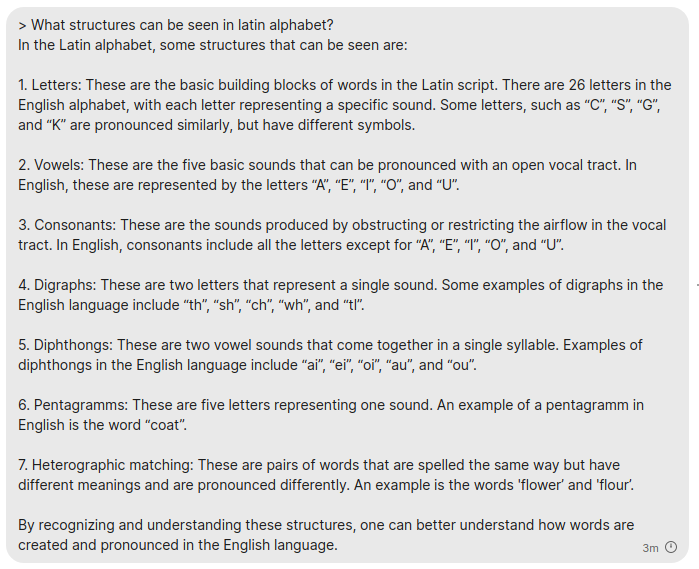
punkt 6 (p. is also paragraph)( is satanique what did it mean?
but my friend and colleague has uploaded some other model, which is very weird:
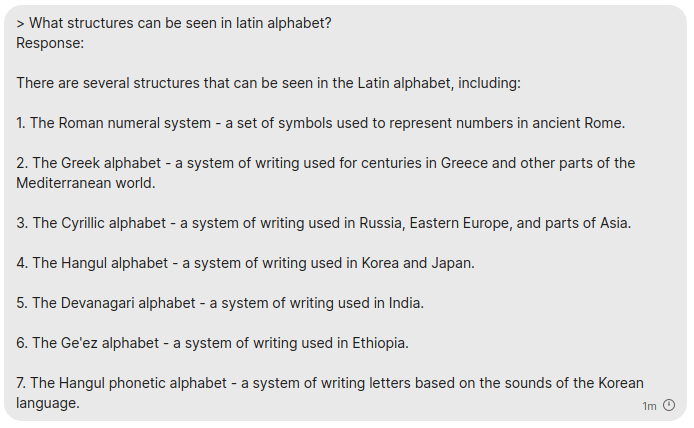
At first I thought this one is way more trippy, first two points, including IVXLCD and XYZ in the structure was interesting, but what happened then? Did it tell of each line representing different writing system? Did they all did the same reform, but a little differently, and thus deviating from each other even more? But approving of it, because such reform allowed to write words from neighbours correctly? But why paragraphs 4 and 7 repeat and why does it mentions japanese in the fourth? The writing system used in both korea and japan are chinese hieroglyphs. But what if it couldn't mention chinese hieroglyphs in the response on alphabets?
Was there some Hangul alphabet before Hangul phonetic alphabet?
But no, we pushed it some more and it gave us plenty of contradicting delirium.
and suddenly I notice that 666 is not only biohazard sign, but also evil triple swasticka

swa = 6?
if stica ~ stick?
and indeed it is, just as mogen daweed
jude ~ weed
am I not to love жидов за то что weeeed?
if each stick contains three runes (three norns. How it was how it is how it's going. past present futur)
future has the suffix of literature and culture (I think its' theory, тора)
can be a key to vowels:

smile-like e and i are polite, sour face a and u are rude.
and that video has plenty of other gems:

(yet he notices that by intonation one can make that longer ha rude as well, but that intonation works)

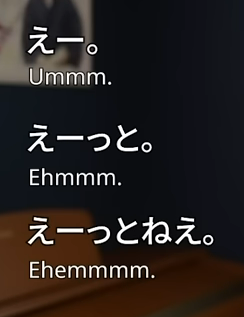
ē
ētto
ēttonē
the middle form is homonymous to russian это which can be used with the same function.
in the same fashion.
uralets ~ ruralis
ruraress? ruraless? ruleless!
ура less (чем дальше от москвы тем меньше советской власти, как у нас говорят)
ура ~ дура! ругаясь (за счёт (инструмента) и какой-то матери)
some mother? They saw the female figure, but they didn't recognize the mother they knew in it.
Thus white goddess could be natural transformation of mother into
When speaker smiles, u sounds as o
глопый (ми таква тру транскрипшн оф текст ыфш said when hihi laug smile)
13 months in a year,

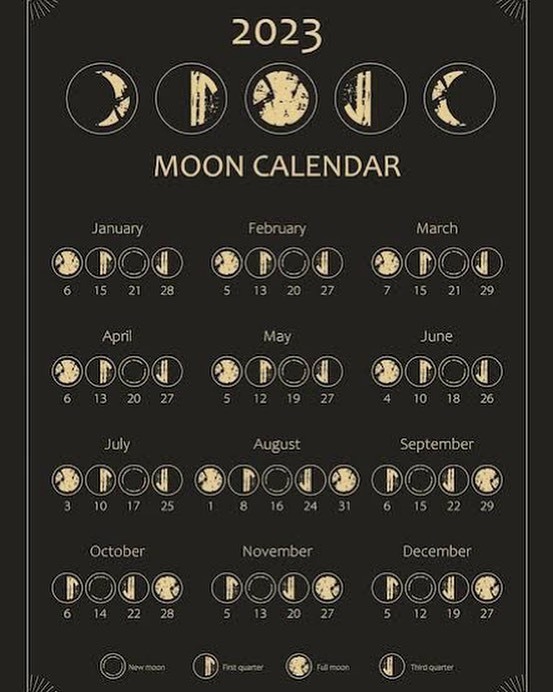
I used different tables in hope that one is not based on another
What may the latter table tell by drawing ☽︎ like ᛚ(Λ) and ☾like J(V(Y))
Λ 𐰲, Λошадь, legs, носит (thus נ c looks like L (reversed for they draw another way, basically l, ן, and probably I and ا
Why this random source is useful is because they mirrored one crescent to get the other, which proportion is supposed to be preserved between☽︎ and ☾
Or they could place that mark of the moon intentionally. I suppose some people keep the knowledge, I discover here, in secret. Some of them. Out of system, which is also why they cannot present it: they fucked it up by forgetting some essential points. But just keep it as an artefact which may tell more to those who can read it.
and some other basic witchery from that site:

I'm pretty sure some keys are in that field. Cooking is ancient, cooking ..books!
cooks ~ books
book cook
fuck hack
then book gook? (chinese ~ cusine? (not brother's vbut cousine's))
26 letters of the english alphabet is an interesting number, because it's twice 13 and half 52
I believe Barny Greenway articulates Satan in "said and done" it would explain their cryptosatanism:
I suspect the best artists tend to be leftists, because the (((industry))) supports its footsoldiers who align with their bs narratives. They may support them with some unique equipment (why would Napalm Death have such fat and tasty sound and other musicians did not? RATM was recognized by Morello's vert special fuzz, and the others probably were manufactured as well, otherwise how would they know how to play and sing that well) - I suspect that after his speech of refugees welcome (I bet that retard never lived amongst those poor things so he knows fuck all about how friendly they are as a group.
I across a circle makes two
+ across a circle makes four
Other cuts are less certain, the next cut may make 6, but it can also make 7 if it's excentric, it may also be considered 8 if the rationale is lost when * the ж is introduced, for 2 and 4 could be followed not only by 6, but also by 8 (such ambiquity is caused by 2+2=2*2 (and I'm surprised to see in this equation both + and * (and = makes 3 (but they're two lines, and hieroglyphics tell, that I is 1, II is 2, but isn't 𓏺 used for plural? or is it marker of singular, as an article a? or is it 𓏤? well, why do I even bother writing about egyptian before I properly know it? Because my questions give food for thought to me and probably to others, and I constantly have to remind myself to take it easy, for that it's only a draft or rather notes even, not a draft, just notes, for myself, for nobody, for those who cares enough to dig in))

the texts on swords could be used to distract the opponent
and some more random stuff:

Tengu is a long nosed evil spirit in Japan known for being disruptive to society
And it makes me wonder if tengu is related to tenge and деньги (money)
The tengu's nose protrudes just enough to differentiate him from an ordinary yamabushi.
Tengu (Japanese: 天狗, lit. 'Heavenly Dog' or 'Heavenly Sentinel')
狗 is [gou] in chinese, and thus is an onomatopoeia of the barking sound recognized by russians as gav
Ameriac
Americans they can
probably not only made Israel happen, but gue guaranteed to protect israel.
Only moshiah may make Israel great, but they cannot surve surva survive as a state for a reason: they're dislikes disliked.
I reformed the lagnguage with this invention, grey text.
aubrey die gray get younger in this direction (offering die grey)
Why would 666 finished first two albums and is int he beginning of this one? Is english growing from hebrew? Not evefn close. But what if. What if greek words made russian by a lot, so was this film crazy. Movies are moving, but I should stop watching them, because they're someone else's narrative. Sometimes they are filmed because people love movies. They are so entertaining, so why 5666?
moons? but moon's phase is 7 days, not 6. Unless some days are frames (on frame picture ends, on frame we don't paint usually, and holidays could be these days we don't do anything. Let's prohibit me to work one day a week. But then I'm a jew? No, just shabbatnick
I don't think I observe anyday, I scold myself every day for not working. Today is the working day, because it goes good. Because it is a good idea not to let me working a day, to take the rest. Wouldn't it make me more lazy? Maybe it motivates me to want to work (as the forbidden fruit)
chain ~ цепь (c is both ц and ч. n and п look exactly the same)
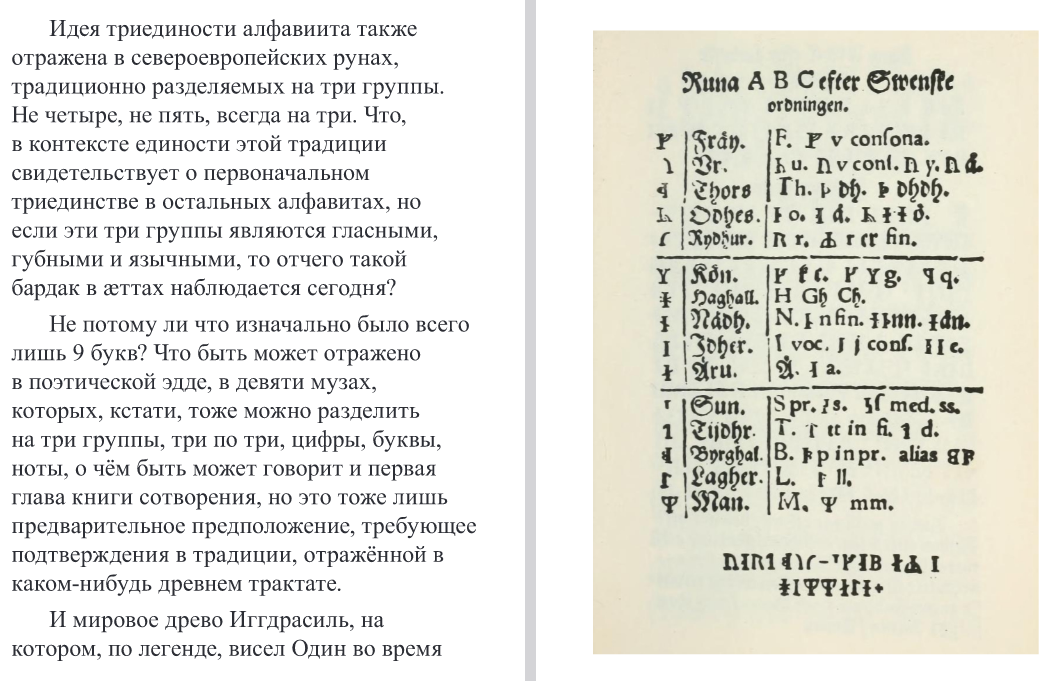
Давайте совместим идею о троичности аэттов с этим списком, выделив по три в каждой группе:
ᚠᚮᚢ
ᛆ ᛡ ᛁ
ᛚ ᛋᛏ
appreciate some graphical similarity between the letters within the groups, now let's figure out where are numbers, where are letters, where are musical notes.
Vowels would make perfect notes, but they look like numbers, as if the sequence is ᛁ ᛆ ᛡ (the ᛁ ᛅ ᛡ (etruscan mune.. numerals literally looked like that))
Look at the image above and notice how there ᚠ and ᚮ reflect eachother, and both look like double ᚢ, which looks like reversed ᚱ, and they're similar not in that font, babbling children pronounce R as W, and if this hypothesis is correct, ᚦ could have appeared out of ᚠ being a variant of θ, for letters appeared before the alphabet as we know it. And probably that is why letters graphically don't make any structure in the alphabet. M and W are out of the column, but that is pretty much it.
ᛚᛋᛏ the ᛚᛌᛐ also has two letters invered one of the other. That raw was simple: if that row is lingual, obvious ᛒ and ᛘ go off. And because ᛒ and ᛘ are so fundamental, I think they could be forms of some of ᚠᚮᚢ or am I supposed to rearrange all of those 15 into three aettir by 5? But with ᚮᚢ in labial aet, I will never make up 5 vowels without them. But let's play on:
ᚠᚦᚱᛒᛘ
ᛆᛡᛁᚮᚢ
ᛚᛋᛏᚴᚿ
the best I could do. but then the structure is gone:
ᛆᛒᚦᚠ
ᛡᛁᚴᛚᛘᚿ
ᚮᚱᛋᛏᚢ
but to my sur[rise ist is gone much less than I thought it to be
yet don't forgent that is t is a draft of something draftless, something raw, merely notes, merry notes
ACDB of the east syllabaries and their последовательность изо рта наружу, затрагивая все языковые чакры so to say makes I L N M natural sequence, and look at the graphaical part of the line then. And I said today that alphabet doesn't have graphical structures, but isn't BD and EFГ such structures?
BD EFГ (and here is somethinsg like a centre of symmetry, the focus so to say) ILNM but OP~QR is maybe the only other one. But wait, UVW are.
BD EFГ | ILNM VW
better first, omega last, makes it bcde not abcd, the order. but c and d are not as in indian, because c and d is the same letter. ABC, not ABCD.
BCE is in reverse, ILNM is reconstructed, EFГ is also, bd is so, they seem to be all demolished. Old structures were demolished by the abarbarians and if berbers ar punic, they're phoenicians, and thus jew
Jews took over Rome.
ILNM
IГFE
(N~F? ν~v)
(M~E? Σ)
𐤀 𐤁 𐤂 𐤃 𐤄 𐤅 𐤆 𐤇 𐤈 𐤉 𐤊 𐤋 𐤌 𐤍 𐤎 𐤏 𐤐 𐤑 𐤒 𐤓 𐤔 𐤕
𐤀 𐤁 𐤂 𐤃 𐤄 𐤅 𐤆 𐤇 𐤈 𐤉 𐤊 𐤋 𐤌 𐤍 𐤎 𐤏 𐤐 𐤑 𐤒 𐤓 𐤔 𐤕
𐤃 ~ ᚦ
𐤃 ~ g
𐤃 ~ d
𐤃 ~ д
𐤃 ~ д (and here D~R)
D~R ~ 𓊂~𓊃?
𓊂 ~ пожали руки? ~ да? ~ давай? ~ делай?
𓊃 ~ пожали руки и пошли? ~ работать?
да, это дичайшее предположение, но посредством него я выучи два этих иероглийа.
combinatory hieroglyphs 𓋝𓋞𓋟𓋠𓋡 (and there are many more) make egyptian similar to chinese.
fuck, I forget all the time, that egyptian unicode is one glyph off in the seamonkey.

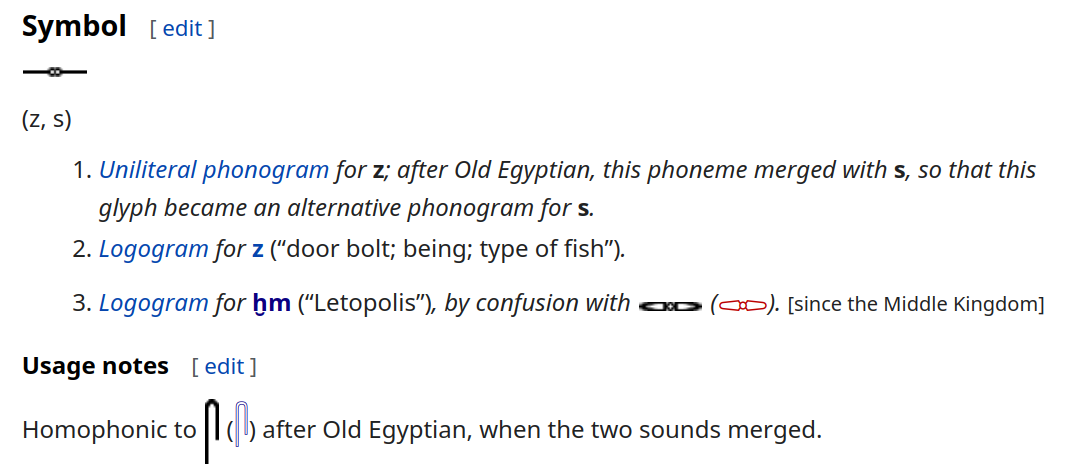
but it is time for me to move beyond wiki, and to actually scan their sources:
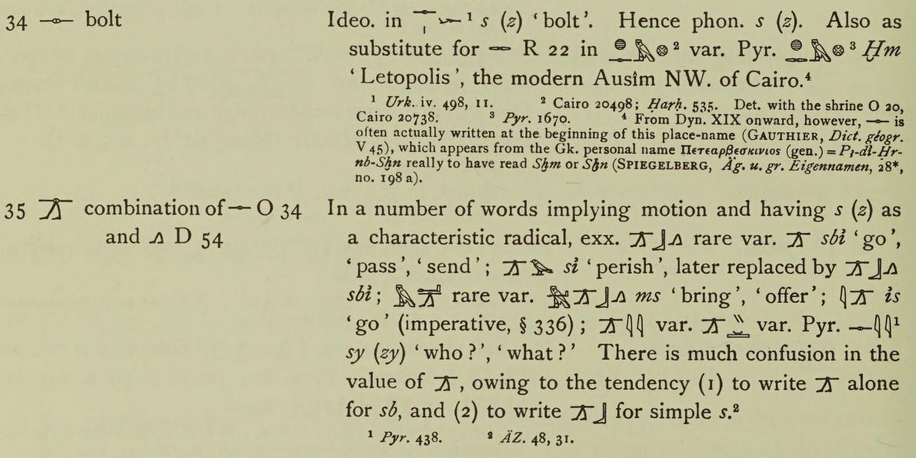
but then wiki uses multitude of sources, and their essences are definitely
and I asked (myself and the world) about single stroke being used as plural or singular, and the world showed me that singular it is, plural form has three strokes:
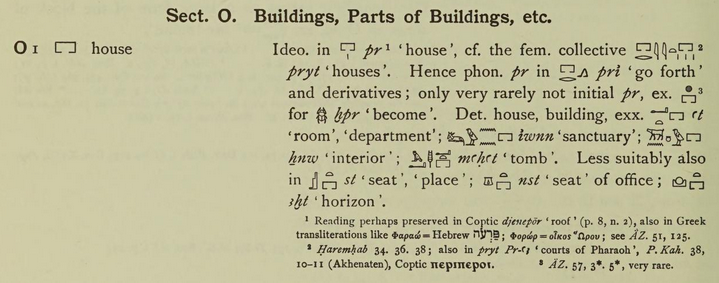
st as seat! (seat ~ sit)

the most similar words to jew are jaw and chew
the most similar words to kike are cake and cookie
Notice the compass in the bottom left corner:
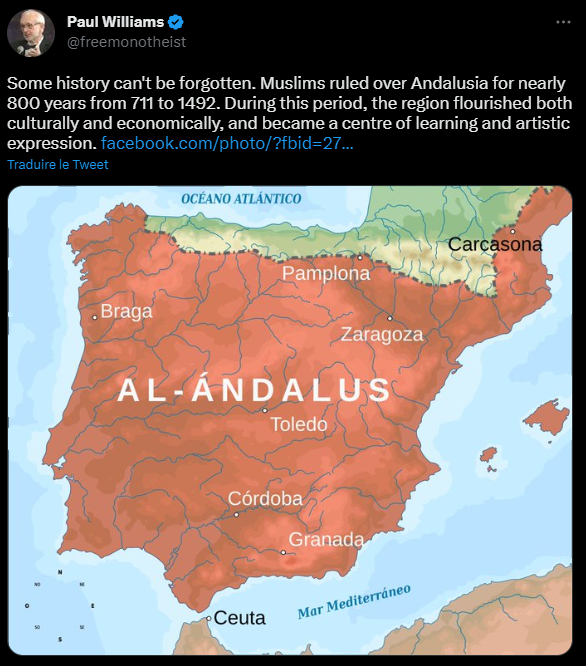
East in spannish is este
West in spannish is oeste
I need to see arabic sources on paleohispanic. They probably don't have it, because the time they conquered it, Latin reigned for centuries. But maybe they have translated works of locals. Or maybe locals digged into their ancestry in arabic script? Either way, there is or will soon be an ai which have read all the human cuylt7rt7ren b cut culture, so when it comes, I can ask them of the contents of those texts.
side ~ sight (сторона, видна только одна)
>>>> sodomy is a form of coprophilia (now you know why you will always be despised nevermind the ammount of propaganda)
>>> And?
>> And so you will always have that dirty component of a lowlife, as if you were a shitskin.
> Not really. You wouldn't get it. You are too consumed by your own ludditery. Anal has an aristocratic charm to it. Gotta let loose sometimes into drunken bohemian debauchery in order to maintain composure.
A joke I heard the other day: two faggots fuck, everything is in shit, the bottom turns and tells "tender, vladimir" (there was some random name, but I made it political since we're here (and probably it is not a coincidence that state and shite, staat and shit, гoвнo и гocyдapcтвo, can be abbreviated as гo-o (is it because the territory is land is soil is ..it)))
land ~ земля ~ почва ~ дёрн ~ soil (~shit, дерьмо)
s~ш (unlike s~k, but then both are с)
Boustrophedon
Tetraktis is up to 4, because further can be 5, but also can be 6 (for 2 became 3) if the triangle splits like a tree wood, like irminsul (yggdrassil, can there be two different words with such fuckedup names and such similar concepts
Tetraktis probably grow from bottom to top as a plant would grow, (is it why factories are named plants? They grow from bottom up) one root, two leaves? three stems? four fruits?
four ~ few
five ~ few even more! (even though in hmm five is several, but several is probably around seven. And it makes me think that one two three were countable, and four followed being few for few, until it became several. The protonumerals!
some ~ sdun sum
Because "Groove is in the Heart" can be translated as "Грув это в сердце", is ~ it
(both words can be omitted, s~t, and it may be a great key to some deeper fields)
is ~ it ~ this&the(th-words (is it = th? (is this = the it? the the? (то-то?))))
fire could look like bodyless spirit to ancients. He was colourful, red, yellow, blue, it has them all. Only black or white fire would look strange. Steam or Smoke on the other hand is naturally black and white, from black to white all shades of grey it is. The outside of a tree may burn with black smoke, good wood burns with whitish. As if dirt is on the outside and holy spirit is in the inside of a tree. So trees are naturally good entities. I never burnt a man, but maybe some crematorians may contribute to the question with a video report. But then it will still be just a speculation. A version. Aversion? Newton didn't like hypotheses, and yes it makes him a pseud, or rather a fraud, he stole his results from somebody so it seems. Otherwise how could de not know that hypotheses are the first steps towards a theory and a good theory as well.
water is another spirit, literally medium, which let's human come through it?
Air is the third. And if those three elements are seen not as forms of matter, but forms of a medium, air would be obvious, so sefer yetzirah may be not wrong on this one.
L M N (aM is obvouslyu water. I think L is ail, air, and is яр in fire the same as in ярко (for яр (for жар, for яр of ярко, Rah, шар, R of radius, round, круг, шар, сфера, circle, ring, only disk is somehow out)
N as the opposite of L is Night as the opposite of Light. And thus M is of Might.
Light Min Ming Might Night
Ought?
Fight Hight
Might Light Night (мощь освещает ночь (луна светит ночью? Moon Lights Night! Moon ~ mighht? It moves ocean/ Sun Sight? Светит? SAu_n ~ shine
Ought Right Sight Tight
And T is the via v final letter again, because Whight is White, zight is some lame slang for alright. zeit
Zeit and Time are final letters, as if in "time"~"time's out" which is a great word to denote death.
And space is Raum (probably a cognate of room)
the more you know one language the more you know the others: winy weeny (махонький, буквально писюлишный) is not a common word, but if you know it, german word wenig is a cognate to you.
Raum~Zeit ~ Space~Time
R~Z ~ S~T
Zeit starting with S would make more sense in the context of this hypothesis: Stunde, Takt, Tempo
Between Space and Time Speed is a thing, as if SP of Space divided by D of Time the Dime. WS As if ee is in. or can to be used there too? But then it is not space but span
If I was playing with these terms in russian, I'd have Время Скорость Dлина
Скорость ~ Šвидкість (swift) ~ Snelle ~ Schnelligkeit ~ geSchwindigkeit (ge is a prefix), Gang, Tempo (Tempo is along the Time narrative, and Gang actually lays within this C cluster. Gang is a cognate of going, step, period, also a name for a corridor (проход, переход))

How trustworthy is this information? I dont' know , maybe not very much, random probability.
But on dates I doubt, the actual cognatismus ist наверное правда, но я перепроверю.
корридор.. ну у меня то нет версий, вот и алфавитил (спрашиваюл при помощи букв)
А
И
О
У
these are words in russian, but only in ukrainian all five are:
а
є
і
о
у
and this is great, because now we know how ukrainian alphabet is going
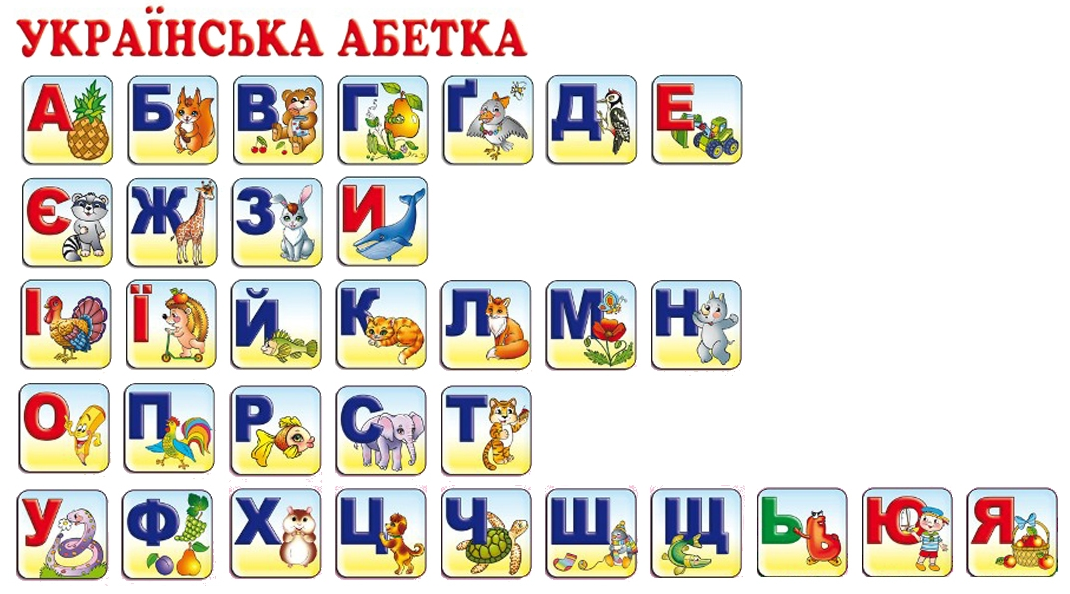
I laughed so hard I coughed.
la and co? la is ляляля, весела (уоляля as babble between cooing ляляля and distinct speech?)
Infants first begin vocalizing by crying, followed by cooing and then vocal play. These first forms of sound production are the easiest for children to use because they contain natural, reflexive, mostly vowel sounds.
experts expect, expert expects (I am an expert in some fields because I am expecting some technologies before others even know of their possibility) of course it could be a coincidence, but very poetic it is.
та and
ви you (formal and plural)
це this
де where
не not
ні no
па-па! bye! (informal and to children)
ти you (informal singular)
ха-ха! ha-ha!
чи whether, if, or; interrogative particle
що what, that
éPT ~ єUA
Быть бессмертным
Есть бессмертный
м~й ~ me~я
Б~Е
I thought of how B and E are similar (gothic argument makes them even closer) and I see how Б is ewven clowser (or as close)
b is to I? bi? bi as two reporesentatoinons of the same idea? B and i both have doubleness. i is the inside bubbles of B
A as i and י, C as ᚲ, D as ᚦ, E as ɔ? weak idea and farfetched phonetic
b and e as similars is from some long time. both are second, and if there's no a, they're both first.
B C D E and this is how they could be when vowel went in the end (or in a separate table, when and if it was removed when it became very variative.
I heard birds. And many songs were there, and I thought to myself that this variability of drills and woohoos made it quite a language, hardly those are random, why would they be if they look like language, they go coo coo one song in a row, and that made me believe that those were many different birds singing thir woohoo in btetween of other songs, it sounded as a song but only because they didn't sing at the same timed. Why would they sing? They would call those who can sing in unison (uni song) they thus sought partners. Thus bird's congress is собрание, and here б and g meet
Power should be earned. Structures of power such as governments allow people to grasp power, and start that career to obtain political power, and those structures should be removed simply because obligatory service is racketeering. We humans can do better. Now with your help we can do even more so. If somebody come to power independantly as leaders of their own parties,
parties as members of the party? partie as partner? ghe who takes power part
is party of partnership? If somebody come to power independantly as leaders of their own parties, they should do so to make friends, not enemies, and for greed for power not to be based upon material phinancial sense, taxation should be abolished. People should seek political power only if they can afford it, if they can pay for the festivals of their soul with their own money and responsibility.
ええ yes [long e (sounds almost as double e)]
いいえ no [long i and short e]
え could be some common postfix. II~N? or was it いええ and い would be not as in illegal and irresponsible. Yes, I believe in cognatism of morphemes, so I'm in search for it. I know that this structure my e must exist, because morphemes are more ancient than words, and cognatism exists even in words, much later forms, so yes, I believe that we must collect all the morphemes in all and every alphabets, and we must compare them after we collect and arrange them. May ai hasten it well.
And to my surprise, いええ seem to be a common mistake, or is it a variant of that word?
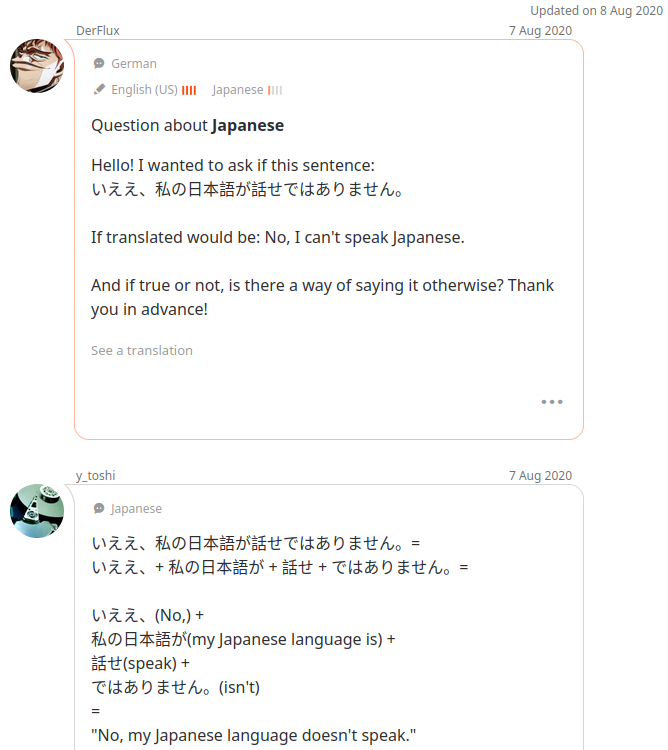
Because other dictionary tells that いえ is another legitimate variant, so length of vowels would only matter when there were homonyms, and here probably not so much
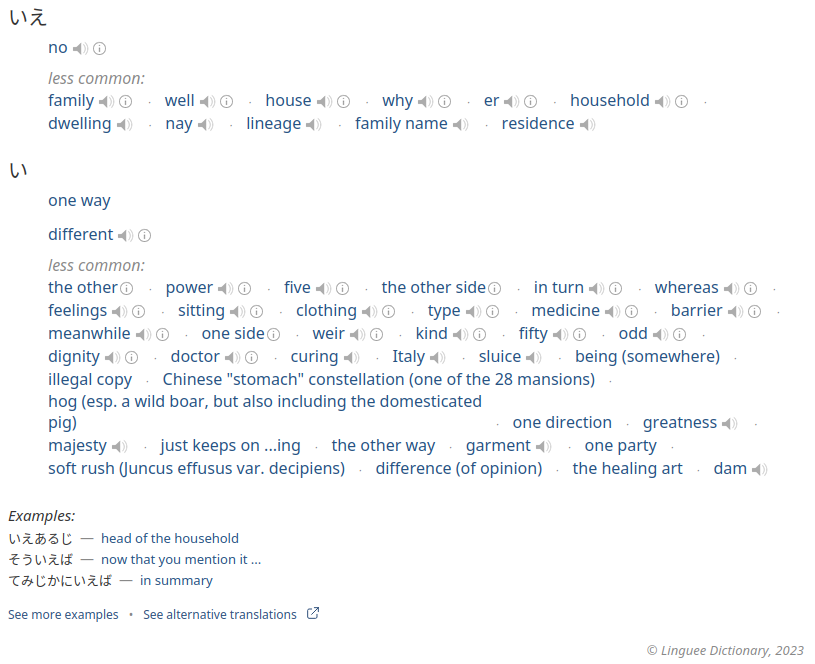
ええ い ~ Yeah!
And all it and the common ええ reminding english yea and how い reminds И and え has this E-like triplesness or it could be seen as dotted I.
After we know writing system, literally the azbuka, we go to vowel words. Such as a, you, I, yea, maybe also we, wow, because orphography is arbitrary, it could go as ui and uou, so let's include y and w and maybe h as well amongst vowels. And thus we have 8 vowels in latin alphabet? Or is it greek? Greek has 7. Would I count 9 vowels if ough was a word? But it is not, it is only a tetragraph:
Ough is a four-letter sequence, a tetragraph, used in English orthography and notorious for its unpredictable pronunciation.[1] It has at least eight pronunciations in North American English and nine in British English, and no discernible patterns exist for choosing among them.[1]
In Middle English, ough was regularly pronounced with a back rounded vowel and a velar fricative (e.g., [oːx], [oːɣ], [uːx] or [uːɣ]).
Most common pronunciations:
/oʊ/ as in though (cf. toe).
/uː/ as in through (cf. true).
/ʌf/ as in rough (cf. ruffian).
/ɒf/ or /ɔːf/ as in cough (cf. coffin).
/ɔː/ as in thought (cf. taut).
/aʊ/ as in bough (cf. cow)
https://en.wikipedia.org/wiki/Ough_(orthography) is an interesting read
But isn't ought ough'ed? Could it be doublet of oh, or no doublet, because there is only oh. And thus g is not a vowel. H is hollow, a place holder, a length adder to the previous letter unless it is just h. Придыхание? literally.
В русском гласных слов наверное меньше, но они без взякой hwy (два члена и женская писька? две формы одного и того же члена? а писька всегда примерно одинаковая, блин что я несу..)
As for tyrants, we should make people so powerful, so they get rid of tyrants with the abundance of tools if they have to. And if they abuse those powers, they may be considered tyrants themselves, so they risk being got rid of too. So this omniscience and omnipotence, not absolute, but we never know if they have it or not, may lead to everybody getting itself in check for mere prudence, and people around them should be their culture keeping their compatriots in relative norm, deviating from norm only in a productive way of a talent.
Seen ~ sin (as if what nobody saw as good as if it never happened)
seen ~ scene
Is te in take て the 手?
говно жовано? two ways to read giovъno (жовано долгая форма. говно короткое как фу)
късоJA is shit? or сука? кисо?
𓂋 as r is true for russian: рот, речь
𓂧 as d is true for russian: длань
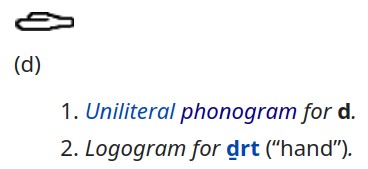
drt is not dln (but near!) but it is more cognatic with держать (also because R~Ж (chinese r is ж))
rus~jude? jude~rude(also рудый, рыжый (юды ~ рыжи? j~r? in babbling when they use both й & w for R))
jid ~ рыж? riddic ~ жидок? куда меня несёт всё время? всё дальше и дальше группы букв расползаются, превращаясь может в две а то и в одну букву, обозначающую всё привлечением внимания. нумерация (количество итераций)
б g
be go (white bб, black qg)
бог god
батя гад
bad good (black bб, white qg)
p d
pass does (black p, white д)
piss dirt
plays does
петь/пить деять
and because б, g, not b q, I see that it's not p, but e)
е д
eats does (black e, white д)
ends doesn't (white e, black д)
едай давай (white e, black д)
what I do here is play with it. thus research it.
ɅV< as the first ABC ever? < ~ > as d ~ D?
Jan van Ijken reminds word яйкин to me. making it clear that яйки and eggs are cognates.
условный ~ умовний ~ קאַנדישאַנאַל
слова ~ мова
сл ~ м?
силища ~ моща
слог ~ мог? слов?~мов
слог ~ слов?
г ~ в?
go ~ va
г ~ v
𐤂 ~ bv
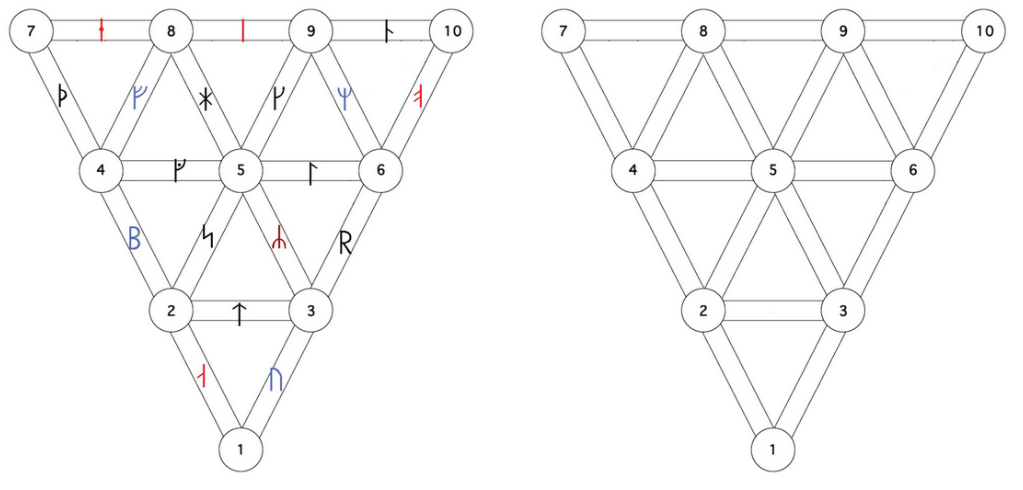
Here I see that each triangle is exactly three runes.
But the other arrangement has more representative first triangle:

аба, ата, батя
And other triangles don't reveal themselves,
abc wheter as abbot or abbacus they are three, so arel lmn, uvw, xyz, let's find them all.
abc efg hij lmn opq rst uvw xyz
relying on aeiou, I discover
abc [aБge[abd]]
efg
Imn
opq [opt]
uyz wyz [u ю {я[язьSL]}]
{} are the stupidest glyph (unless it is used in some programming language) because this shape is to combine several lines, and it is written on only one. But then it could be used for pseudographics collages, this is some old tech.
So I use those brackets for meaning of the element (I use <> in my notebooks, but it is not does not feel right
abc
lmn
xyz are actually the only memetic triads
or, better yet, not mathematically, but grammatically:
abc
Imn
uvw and yet w is relatively recent, so is it uvy or uvx, which uvy graphically reminds? x~z and x looks like 𐤕 [t]PHOENICIAN the + the 𐩩 [t]OLD SOUTH ARABIAN
𑀓[ka]BRAHMIC ~ 𐍇[/kʰ/]GOTHIC
ABC
IMN
UYZ
or
BCI (or BCו? (ו the f,v)
MNו (ו as o)
ПТו (ו as u)
is first ו telling that E~F? if? because in other cases it is vowel. and what story would it tell? eve?
was alphabet of syllables? of triadic words?
abets (отец ~ абе)
I man (english? seriously? angelic? (engels~engelen)NL)
U xz (you, excuse)
This final line I definitely came to before, others maybe not, either way repetitia, matria lectiones
BGi (боги)
MNo (мной)
PSu (пасу? pass? прошу? prays you? praise U (U is polite you in dutch (but pray is bid in dutch, bd (prayse you was translated by g as u prijzen, with that very u)))
some ai knowing every important language, read and research it.
I O as the two opposites werte the firest vowels, yanъ and yinь
ъ and ь are simple dark as ink yin ь, and white yang ъ (the upper stroke denotes ink going round to make the paper white shape of ь by rolling a stroke around it till the full circle meets the stave)
ъыь also go in three
ъыь
эюя ate mems in russian culture (ъыь are omitted from phonebooks and dictionaries, эюя are always grouped dogether in phonebooks)
and because я ~ аз ~ z (if thir position on querty/йцукен keyboard a coincidence or not I do not know)
right sounds as white in babble (and then so does light)
left sounds similar to lost and last (which may reflect the position of inferior nations and classes)
"не имей сто рублей, а имей сто друзей" is something fucking russian mind up, because it promotes poverty, and russians are poor, and maybe because of such poor memes.
Even the good part, the part about having hundred friends opens with а, and a is a negating suffix in some languages, even in russian аномалия (they also know normal)

думая о том какое удивительное изобретение гребень и что мне нужно два гребня из мяккого материала. мяг от слова мять, как и мяч. но не меч, тот от слова
гребень (рассчёска и гребень горы, особенно выступающий из воды (.. но словари такое не находят, только остров с таким названием подтверждает мои слова)
и гребень на голове петуха заставил меня думать о значении этой птицы в предыдущей русской культуре, что совки и зэки так возненавидили её что жыды на западе аристократов.
Петушок золотой гребешок, жар-птица, райские птицы попавшие в этот дикий мир? гребень от слова грести? вычёсывая блох?
Золотой гребешок resembles crown, so I think I entertained this idea of that bird being some nominal king, who had his connections and knew what was coming before it came.
And here I can see how sudden attack of travelling army may lead to victory (if army travels easy carrying most of their weapons in the baggage.
The fish of ☯, rotated 90 degrees, remind bd and pq and bd could be water (voda (вода)) because the shape of 💧 is associated with water, I can only imagine that the opposite shape would be associated with fire (by representing a cloud of smoke, maybe) and thus p&q could stand for PR, pyre, fire, пыл, п-р of пожар. And I had a similar idea when I associated ♠ with water (and ♡ with air, ♢ with fire, ♣ with earth)
Some of these astronomic symbols could play their role in development of letters:
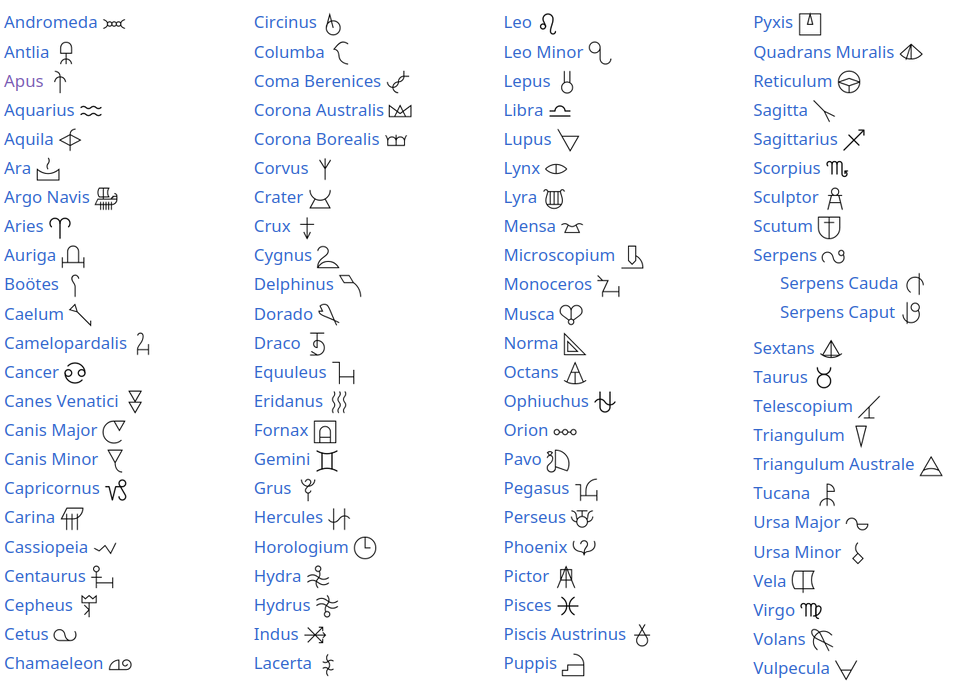
But even more interesting are these two signs: ☊ for ascending node and ☋ for descending node, which whether by coincidence or not is correlating to yang Ⰴ and yin Ⰲ
thu of thursday is like thru
сре of среда is like throuhg (throwing?) through and среди has this meaning, середина~наскрозь?
ᚱ~ᚢ again? both are the same рву (ᚱᚢ)
рек (said, rivers (речь~речка)
ров ~ river
река роет
бока боют? болят? бока ~ баки, бок ~ back
бока только болтаются, just be (back is where we were? by qё know the word is of k the key,
yet sounds as n.. k~n? ŋ, see kiddi alfabet/arfabet)
арфа вита гамма дельта (the few letters with good names, others are not so implessive, most of them are just fonetic value with some generic suffixes or descriptive prefixes so to say, but then suffixes are the same betta has. so was it Arfa Gamma Delta? or does delta has the same suffix?
Arfa Gamma Kappa Lambda Sigma are the only ones without generic elements?
Gamma and Sigma share the suffix
Arfa Kappa Lambda (but then Sigma is even without the suffix is complex enough, but S and G are C's same is true for Delta, but Δ~Λ)
Isn't it time to link fa and pa suffixes? da and ta of all those beta-vita zeta ita~eta θeta yota and i as the end of the first half of the alphabet also stops the flow of -ta names. And mu as the beginning of the second half so to say (fits it well if M follows I directly) opens sequence of phonetic-value-names:
mu nu xi pi ro tau phi chi psi (psi could be an obsolete sound similar to labial click, as if for a kiss)
lets compare those two
beta-vita zeta ita~eta θeta yota
and they cannot be compared.. unless both sequences start with labials, let's compare
β δ ζ η θ ι
μ ν ξ π ρ τ φ χ ψ
something like this is the best I can do so far. but θ above φ is beautiful, and it makes be bele me believe that that ta thing is similar to psilon and mikron and mega
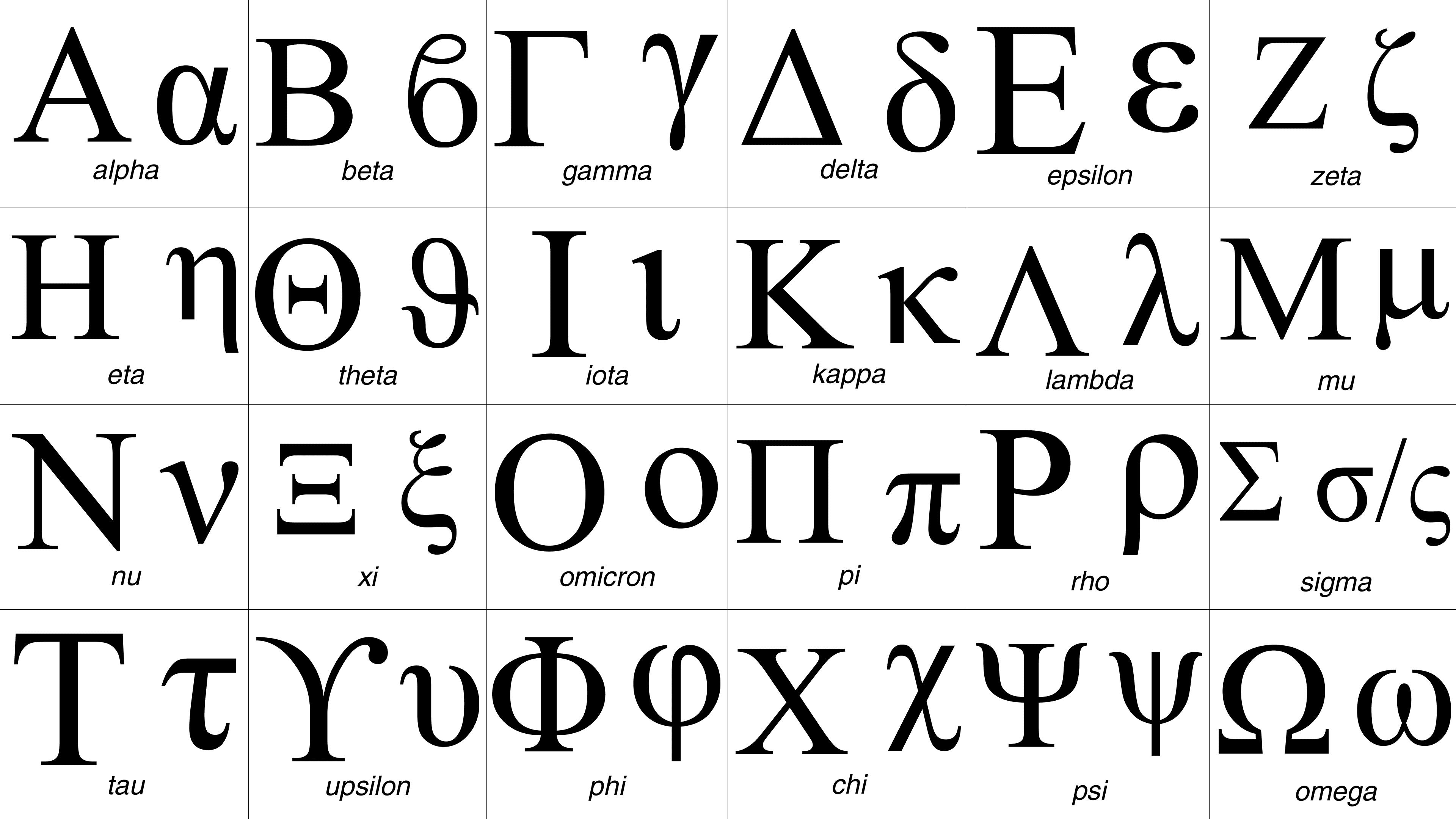
pay attention to the unusual form of β, who knows if actual or a mistake.
A B G D
E V J Z
I M N L
O P Q T
what are sonors in this scheme of things?
is I ו?
is M П?
is Ŋ Q?
is ᛚ ᛐ?
is P F?
is Q H?
is T S? ת without dot is very s-like, so is פ without dot is f-like, but n~q is even more weird than l~t
simplify it further, remove G J N Q paret and you get yourself 12 signs like 12 months. but isn't the formula ABC? we'll explore such possibility later, so far, ABD:
A B D
E V Z
IO П Т
U F S
and the final iteration:
A B C [a b g]
E V Ž [e v ʒ]
O P T [o p k]
U F Š [u f š]
and another one:
A B G [a b g]
E W J [e w j]
O P Q [o p t]
U F X [u f š]
and the quantity of variants is innumerable, for even here g is d, q; t turns k; q turns t; I switched letters while I typed, because the actual pronunciation is in between, combining k and tʃ
Aries being the first sign makes me want to look into that more closely and seek for language in which Taurus is Bull, especially because what follows is Gemini, then even Cancer, but it goes astray after that, unless some language places them alphabetically, and some special kind of alphabet it should be. Let's leave it to ai
when iopt is the most interesting ёпта in your thing, you know it is nothing
but the next morning:
IГDB (indian order, tibetabn order)
1234(but wait, if D is 3, B is 56
cancel is a strong word: kill with etc in the middle (was it invented as such or not, it is felt as such, indefinitely, inevitably)
kiss kill kid they should have something in common. and even before I recalled 子 I knew that kid is the key (as the lock is a womb? or is it ki the penis in some way, and lock is vagina? how could people avoid such symbolism? and they did not) if kill is "kids,all" and kiss is kid's suck (sucks ~ sex, is kiss was suck (ток~кот, kiss~suck, lukashevich purgeshkevisch))
S sex snake and literalluy s ass
S looks like snake, but it doesn't remind penis. unless lower curve is scrotum, but it reminds what comes out of ass. some shit?
Eternal calendar is of cycles of moon and sun coming together again.
(and here was some thought I don't remember)
s-n is both sun and satan, and m-n is moon and man (mam, maþur, female word, is it?)
(ошмётки воспоминания, вот что бывает если сразу не записывать)
Further follows what seemed to be deep into the subject which I am still not feeling like digging into.
And because I don't know if any of that makes sense in this context or in any at all (my scepticism is caused by the arbitrarity of interpretations, thus divinating person plays role of a psychologist, telling a person what they need to hear but in a such a way that the person has less reasons to be mad at the teller)
Many interpreters of the Tarot see the spiritual implications of the symbols in the card, the Fool. They explain that the Hebrew letter assigned to this card reveals a much deeper secret. As stated the letter assigned to The Fool is Aleph, the first letter of the Hebrew alphabet. Aleph is both a symbol for the Life Breath and Ox or Bull.

Figure 7. SUN SIGNS SYMBOLS & TYPES, and their associated Element, Hebrew Letter, and Planet
Today the word fool has derogatory connotations, however, its etymology derives from the Latin follis, meaning bellows or windbag. A windbag is empty until filled with air. The Divine spark encased in the soul fills his or her windbag with experience. However, if we consider the musical Note discipline we can learn even more from this symbol. If the windbag is the cloth bag in a set of bagpipes, then this symbol could mean that we can be a vessel for the Sound “Word” of the archetypal plane.
One of the most helpful pillars we were given was that the key to the mysteries is hidden in our language, English. As we said, we understand this to mean that we have retained spiritual Truth subliminally transmitting it through time in our language. So despite the changing of the meaning of Fool, the imagery of the card reminds us that the Fool stands for that part of us, the Spiritual soul or ego, (not to be mistaken for the lower ego, which is composed of the lower selfish emotions and motivations) which is innocent and empty and above material concerns.
To reiterate, the Hebrew letter Aleph’s א symbol is the ox or bull, which is one of the four chief symbols. These four symbols represented the four fixed signs of the zodiac: the bull for Taurus, the lion for Leo, the eagle for Scorpio and the man angel for Aquarius. A symbol was given to each sign of the zodiac. The remaining eight signs are divided between cardinal and mutable. Each zodiac sign is associated with certain symbols. As we’ve already covered the fixed signs we will list the cardinal and mutable. The cardinal sign’s symbols are: Aries-ram; Cancer-crab; Libra-scales and Capricorn-goat. The mutable sign’s symbols are: Gemini-twins; Virgo-virgin; Sagittarius-archer and Pisces-fishes. In addition to these pictorial symbols the twelve signs are assigned different SYMBOLS (glyphs) as shown in (Figure 7.) above. The associated Astrological planets that rule the SUN SIGNS are also given Symbols (glyphs)and an assigned Hebrew Letter. The Letters are as follows: Aries - HEH, Taurus - VAV, Gemini - ZAIN, Cancer - CHETH, Leo - TETH, Virgo - YOD, Libra - LAMED, Scorpio - NUN, Sagittarius - SAMEKH, Capricorn - AYIN, Aquarius - TZADDI, and Pisces - QOPH. (see chart below)
One of the reasons the Church vilified the Tarot was because it supports the doctrine of reincarnation. This is shown by the symbol of The Fool carrying a bag attached to a staff in the first trump. In kabalistic symbolism, the staff represents the Tree of Life or the ten Sephirot. The bag represents what the spiritual ego brings into each incarnation. This bag contains the desires, phobias or fears and lessons learned from previous incarnations. Furthermore, it contains the memory of the soul’s purpose for incarnation at the fullness of time.
The major arcana trumps are also assigned a symbol and like the astrological symbols, each symbol in the Tarot trumps will help guide you to your purpose. And so all seven disciplines working together can help discover your hidden spiritual strengths and weaknesses like THE FOOL on the path Below...
(the author of that article also placed totot into the initial letters of the paragraphs)

my name is demon and I seem such: my favourite shoe maker is Demonia, I love metal and I love magic and I am heathen and many aspects of mine are rather dark. But I value light of knowledge, and it is also the opposite of what organized religions try to do.
димка~дымка, тоже сатоново
but dimitry is de mereFR
дым ~ dome ~ damme?
home {ho mine} (ho (whore) is she who hochi, та кто хочет, девки дают (девка ~ давалка (жена мужу верна?)) те кто хотят (тебя) те (тебе) и дают, а те кто сухи – суки)
очаг ~ отчий? общий? обжиг? в очаг то же ча что в чадить?
обжитое?
another very promising, yet unclear, connection between zodiac constellations and the writing system, here some abecedary I do not even recognize other than it seems to go in some unusual sequence:

So what I can see first is that it's shifted for almost a month, A is the beginning of the sequence, so it's probably of some other system placed next to european zodiac sings. A E V Ai O is probably eastern AIUEO, but then why do vowels begin in the western manner?
V Kh D but then it goes all the ways, especially when P is intervened with some Sha and Thha, and so on, it is very weird and nothing that I think I saw before. Let's dig, and I did, and here what I found referring to that table:
Vedic Astrology suggests first letter of the Name as per the birth time Lagna/ Moon Sign (considering whichever is powerful). I would recommend naming a baby in a combined approach of Vedic Astrology and Numerology which is proven. Refer the table below to get an Idea about this.
Then we shall look at the Numerology aspect in the naming method. Refer the table below for knowing the number to corresponding alphabet.
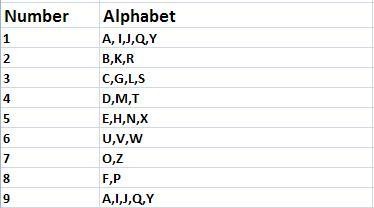
Likewise, there are letters associated with Stars (incl different padas 1,2,3 & 4) and Planets. It is very much easier to get names after considering these. I have not given the procedure and calculations here since it requires a good amount of considerations on Astrological and Numerological aspects conforming in naming a baby.
Some more random stuff, and I have no idea how reliable these transliterations may be:
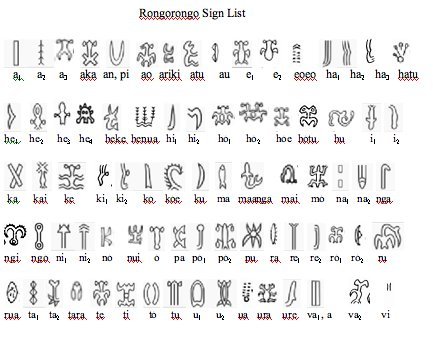


and another one:
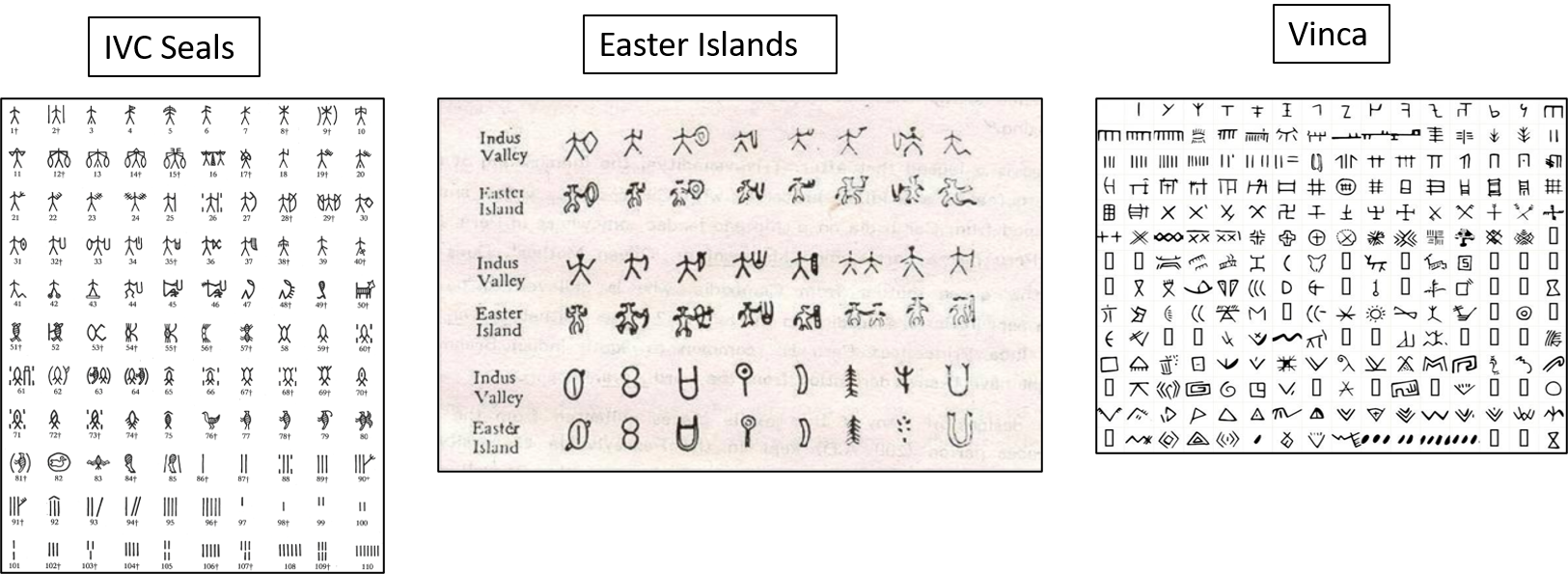
and another source for old-persian:
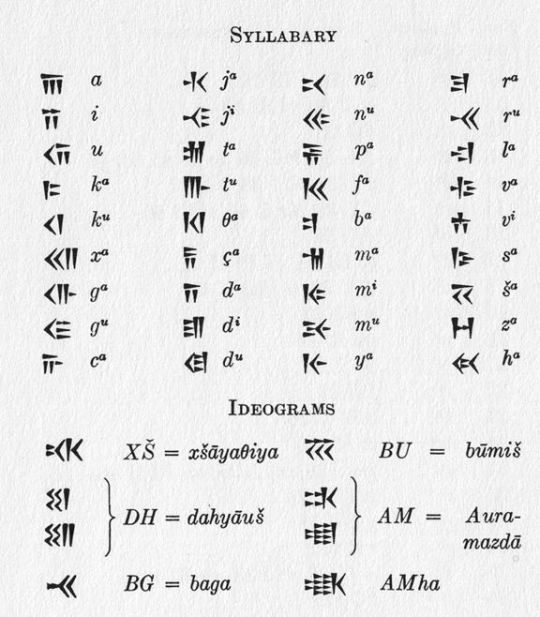
tai chi goes
pd
or
bq
prominently having labials on the left and linguals on the right, and it makes me believe that q used to be t to reflect the d, which can be explained by q transliterated as ч sometimes, and ч~т
well, here's a simpler explanation: q~c~ч~т
is it simpler though?
And it makes me want to compare it to eskimo writing scripts.
but all those forms seem to be k's and whether they keys or not is not clear.
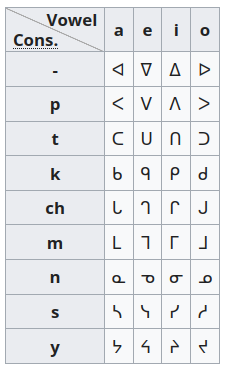
ka for b
ke for q
ki for p
ko for d
ka is the first sign in eastern writing systems
b is the first sign in western writing systems, well, first consonant it is. A as zer0 the fo0l
n as k rotated 90° doesn't make much sense until we consider k to be c
am I making this stuff up? I am not, and look at s.
angles of p and m, all these systematically reasonable elements definitely made it easier to memorize, and I still believe that it was not invented by missionaries.
and here I found the source of that earlier zodiacal syllabics thing, here's the source of it:

and another one:
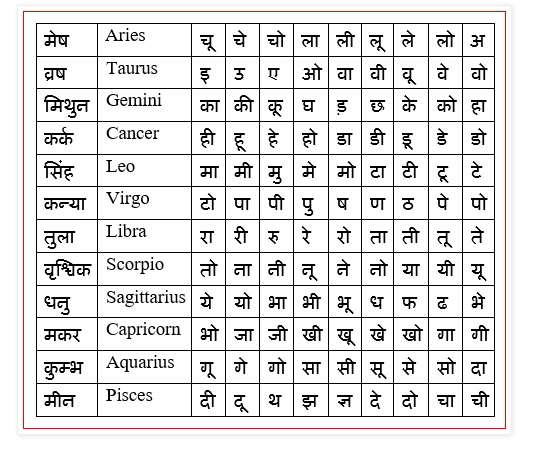
And under this one was the explanation: किसी भी व्यक्ति की राशि को पता कर सकते हो कि वो किस राशि के अन्दर आता है। मान लो कि किसी व्यक्ति का नाम अनुज है तो उसके नाम का पहला अक्षर अ आता है। अब उस Zodiac Sign Table को देख कर बता सकते हो। so it's probably nothing more than a way to choose a name for a child, as that previous source also said.
and that thing explaining the order of eastern writing systems I think I showed you from some other book:
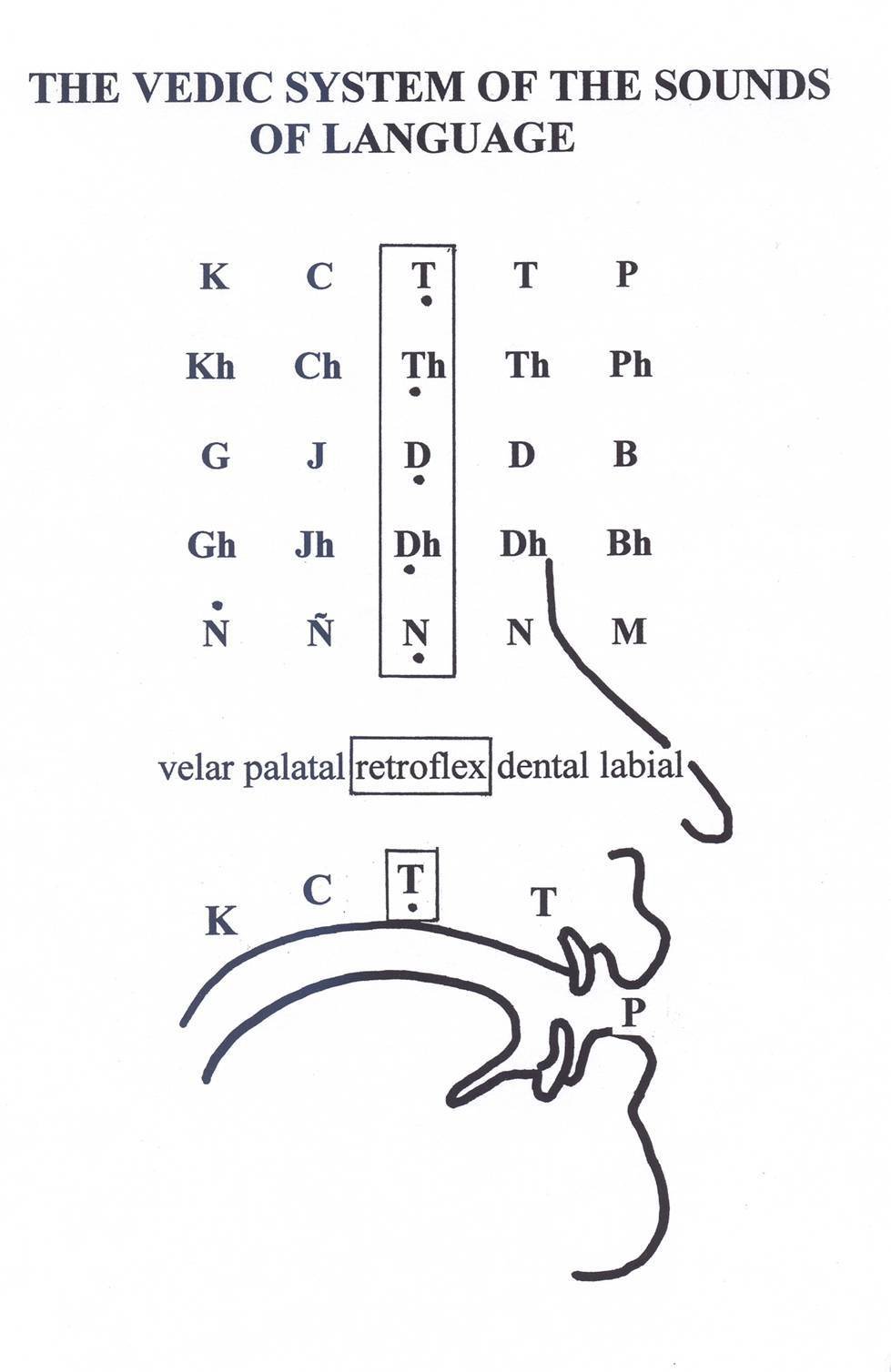

I see one element I didn't see before: the STVol (trunk) of the tree. And sun is at the top of it. Is it how we are supposed to listent to stars? In the energetic lense of a fir? Spruce. It's sick how rarely I hear this word. I don't know this word. This seldom.
вспоминая как бабы друзей меня недолюбливают за то что я счастливый холостяк, соображаю что (здесь связка забыть, похоже, забыл мысль)
Бог это бабье наебалово (потому и БаГо баба-начальник (государыня, главная, глава, гловнюк))
7 out of 26 can be represented in shapes of ࿊:
abdegpq
fhyRt and even s may be seen as those shapes too, but yes I'm stretching
and maybe i and j too, b ecause they have the balls)
_)and isn't l reflect the j? but being so inclusive, why don't I add in c being 🌗 the 🌜 as the opposite of j the 🌛 the 🌙)
Maybe I should use ( and ) and it is a great idea with which I may solve inability of pdf format to recognize ☽︎ and ☾
"no I'm not" is the best of all described translated with "не нихуя"
нихуя = I'm not
нихуя = не хочу я
хуй хочет? хуй хочу (не я, но может и я иногда тоже, что пиздеть-то (оу уау! уил ту пауа мэйд ми э фэггот))
is inflammable in flammable?
ea are the two vowels definitely representing those ࿊ shapes and to me it's clear that e is pleasure, while a is pain (glossolallic interjections if you will, e of yeah and a of ah)
e and a written within ࿊ demand some certain consonants to make syllables: бa and eд
ба is баба, ed is дед and отец(отче) at the same time.
ба is open syllable, and such syllable is called female. ed is closed syllable and yep, male.
But then I wake up and see that a demands not б, but p:
pa pa is father, ed is still отец in this context. As if the tai-chi is a male ball. It's pa today дед or even dead tomorrow.
ed of дядя? Ed is male name, and I do not know female counterpart. Edwardine is not a real name, yet google finds 81400 uses of the word (Edward appears 707 000 000 times (679 000 000 times without edwardine, so give or take))
other two vowel shapes are y and h (and the element of being torn may refer to their yinness.
hy? or is it one yin and the other's yang?
hq and by? hiccup the ик and by is what? bi the two after ic is one in some exotic shit?
friends do it for free. Free end? Free and? Free and plural suffix with a p.p. suffix?
friend ~ free end (свободный конец, верёвка сброшенная с корабля в воду (для упавших с корабля это спасение)
events were in the evenings? event is even'ed? (morn and even are morning and evening)
RVN are all sonors if v is w. I saw this set somewhere and I didn't write it down at once, now I only guess that it's about ᚱ~ᚢ and v~ν, but I think it was something else, something way larger.
WRN? MLN? melon instead of lemon? Lemon is a sacred plant in judaism, lemon is not.
маєт ~ must
Getting really drunk is the best way to summon spirits. Is it not a coincidence that the active substance of alcools is called spirit
Within common typologies, the Hawaiian system is the simplest classificatory system of kinship. Relatives are distinguished only by generation and by gender. There is a parental generation and a generation of children. In this system, a person (called Ego in anthropology) refers to all females of his parents' generation (mother, aunts, and the wives of men in this generation) as "Mother" and all of the males (father, uncles, and husbands of the women in this generation) as "Father". In the generation of children, all brothers and male cousins are referred to as "Brother", and all sisters and female cousins as "Sister".[2]
In this way, a cross-cousin will be referred to as a "sibling". A correlation was found between the Hawaiian system and the prohibition of cross‐cousin marriage, as the incest taboo is reflected in the semantics.
And it goes deeper. The word Makua (parent) is used for both mom and dad (and unkle and aunt)
More officially, makuahine is mother (hine is female) while makuakāne is father (kāne is male)
So that makua could be a key to understanding how georgians could attribute mama and deda the other way around (even though I suspect makua to be composed of ma for mother and kua for father)
tried to work on my booklet, to speak on yin yang some more, and I went away being high as kike.
Ещё одно сохранившееся в человеческой культуре понятие, отражающее идею элементов - восточное тай чи, известное на западе как инь ян (мяхкое женское и твёрдое мужское) и к моему удивлению "рыбки" символизирующие элементы матери земли и отца неба (и, говорят, что в египте было наоборот: небо мать, но может врут, может это не небо, а ночь? но может и не врут: в грузинском мама это папа, а деда это мама (мама и деда, но наоборот, как это может быть? как столь базовые понятия могли перепутаться? Но может это не базовые понятия, а поздняя рационализация, а до этого подобно кавайской макуа, применяющейся и для матери, и для отца (и для их братьев-сестёр, и для их жён-мужей. Говорят, дабы пресечь близкородственные браки, но может неосознанно, может возникло это явление естественно, а остальное лишь рационализация) и я вижу в этой макуа европейские морфемы ма и куй, которые я узнаю как мама и папа, и если это совпадение (типа не связано исторически согласно современной официальной науке) то очень поэтически увлекательное и мнемонически полезное, но коль говорят, что мама самое всемирно распространённое слово, то предположить ма в макуа, переводящемся как родитель, и мать и отец это макуа-самка и макуа-отец (у животных ты не всегда знаешь кто мама кто папа, но родителей проще определить,
но подобная степень погружения, отвлечения, заставило меня остановиться. Back on track. I must learn to work being high!
выглядят почти как европейские символы b d p q which may be alphabetically arranged as
b d
p q
and also vowels a and e: ea looks like ࿊ or ae does, if you read it right to left, or, here, from top to bottom, as classic chinese is read.
and that kawaiian ma is of mama, they also recognize mama? and dada is папа согласно g-trans)
which made me play with the forms of tai-chi (is the name two ways to read tea and chai? firm t and soft t)
это не слишком много букв, это не слишком много комбинаций,
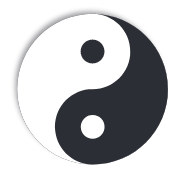

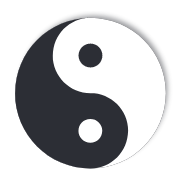
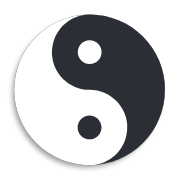
так что пройдусь по ним брутфорсом пришедших на ум антонимов:
 black e, white
a ex / at
black e, white
a ex / at
black e, white d ex / de
black p, white a papa / ama (ама мама в иврите) pa, pact 🙲 act, pee and aqua, pay and эй (hey, somebody you know)
black p, white d plohoe & dobroe китайское pu (нет) и русское да (предполагаю двойственность элементов предшествующей идее их тройственности, а потому позволяю себе предполагать эту страницу истории общечеловеческой, дальнейшее исследование, может быть, покажет верно это предположение или нет)
 white e, black
a е как гримаса удовольствия
(расширенные зрачки, улыбка) а как гримаса
боли (зажмуренные глаза, рот раскрыт в
крике) eat /
ate (in the sense of food and waste)
white e, black
a е как гримаса удовольствия
(расширенные зрачки, улыбка) а как гримаса
боли (зажмуренные глаза, рот раскрыт в
крике) eat /
ate (in the sense of food and waste)white e, black d еда / дрянь, dirt, и так далее
white p, black a papa / ama (е и а значит тоже отца и мать? в сравнении с открытой а, е всё равно что i в сравнении с о, мужское в сравнении с женским)
и не потому ли так, что мать is at, while father is out, at the hunt for example. That people almost stopped to hunt and thus exterminate the nature, it is a huge benefit of modern society and the governmental structure. So government was mostly a good thing. Sure, imagine living in some wild ground, where you yourself could be hunted. So is it beneficial to )
white p, black d pie & dirt, pie & die
 black Б white g Baal & deus? Bad
and good boo and duh (gа (га~ха~да?))
black Б white g Baal & deus? Bad
and good boo and duh (gа (га~ха~да?))black b white q bad & quite (quite is right?) bad 🙲 cool?
 white Б black g
Бог и gьявол be 🙲 go
white Б black g
Бог и gьявол be 🙲 go
white b black q баба & queen (стоячий и висячий? поцелуй и кашель?)
Бог и gьявол и Бэd 🙲 good (отражено в том, как бог одной нации считается дьяволом у соседей)
белое благо и добро, чёрное боль, беда и дрянь, итого брутфорс увяз в вариативности, даже с учётом довольно маленькой языковой выборки для этого развлечения, но есть надежда на искусственный интеллект способный пройтись брутфорсом всеми языками по всем остальным системам письма (на эскимосские у меня большая надежда, я считаю их аутентичными, не новоделом)
I like
 the most, because свет выше тени, и
вращаются по часовой, но может быть
the most, because свет выше тени, и
вращаются по часовой, но может быть что другая версия лучше, поскольку может быть представлена луной в небе и колодцем на земле:

(конец редакторской правки (для воиторого издания брошюры))
на корточках ~ на коротких
к в короткий таже что в cut?
если "тоже" слитно, то пускай и "та же" слитно будет. тотже ~ то-то же
тварь ~ зверь
т~з, но р отдельно
ОПРС as some ancient canon? but it's not very well aligned with
ABCD and the C shape in both canons tells that it's ABC and R~B (ᚱ~ᚢ)
thus the eat in meat is literally eat? interesting. I have no idea if it is true, but I keep it in mind.
deer ~ зверь? hound ~ hunt? In Dutch we still say 'deer' for every animal but it's spelled 'dier', and 'hound' is also still used for referring to dogs in general but spelled 'hond'.
a funky freak,
be funky freak
see funky fread
de funky freak ~ did funky freak ~ do funky freak
ex funky freak
for funky freak
go funky freak
hi funky freak
I funky freak (I M) funky frerak
Joy funky freak
K'ill funky freak ~ Key funky freak? (естественено я гадаю, может гадания как практику отменили, потому что они наугад? иногда гадатель угадывает, но интерпретация традиционно происходит не брутфорсом даже, а наугад, интуитивно, руны лишь помогали, задавая наводящие вопросы.)
Like funky freak ~ Love funky freak
Me funky freak ~ my funky freak ~
No funky freak ~ not funky freak
Oh funky freak ~ of funky freak
Pay funky freak ~ pee funky freak ~ (по)by funky freak ~ Pa funky freak ~ up funky freak
Qeu F Que funky freak
aRe funky freak
aS funky freak
aT funky freak (when something is dead, hunter may sit on it.
yoU funky freak
Vow funky freak ~
Why funky freak
opQ ~ uvW
Xie funky freak (poets invented this word to write alphabetic pangrams)
You funky freak
Zie funky freak
efGH? g~h? and I wanted to use ➰ fro o fio for Г and the opposite shape for h, but unicode doesn't seem to have the upside down ➰, the closest to that shape seems to be ↬
and they even have double ➰: ➿
It is very strange and it makes some
That H was to be there for what used to be hvat, which resembles quod (phonetically, semantically quid is closer)
H as a form of C?
A Бg (isn't it ᛓᚴ)
E FГ
I MΛ
O ПТ
U VX
And thus shapes expose the primal set. Only why is it so that first lines go double before single, and the finla line is isngle before double? Isn't it vbecause it ends with T? X is how T used to look, but then it was T, so
ᛆ ᛓᚴ
E FГ
I MΛ
O ПТ
but why is the firest two goe grow upside down, and laest two grow sideways? Isn't it becuase that is how lines used to be: vertical before horizontal.
I MΛ
O ПТ could be the primal cast. Voiced in the virst half, voiceless in the second one.
ᛆ ᛖ ᛚ
ᚮ ᛈ ᛐ but hardly am I sure about that
是的 [shida (причём да is из, i.e yes de)] sounds exactly as da si да (да ~ de? ~ до? too? to! sou)
是 is yes (si[ši]) си=эс (С) and each borders B and T, the protoletters.
是 is kore and ze, which relates it to the
是 is ze when it stands for righteous, justice, right.
是 is kore when it is followed by れ, thus then it's ko. ko ~ ze shows the span of C and chinese reading shi expands it to the third corner.
Thrree lines.
A C (g-k)
E Z (z~ž)
U S (s~š)
but then I look deeper and see that 是 may stand for kore without kana suffix. So are those suffixes even not a novelty? It probably was written in chinese manner. It could be read in chinese, instantly translating the text, but then kana was used as furigana, to read it what it is and not with the synonym.

是 for ze and kore blows my mind, because I can see E in the final piece of it, which makes me first see z in the zonne the 日, and then r in 人 and is sun ko or is 一 o and 日 k? 日 looks like c, and c~z, not too far away.
是 Ё!~ сие
Duality of
Язык (both language and tongue) is considered to be what differs us from animals, and was it when everything changed? Was it just ma and am? Am of amour, om of love, Ma as the opposite. Ma as my.
om as the second (after ma) word. o in om is un, ima is имей ~ не моё. ami.
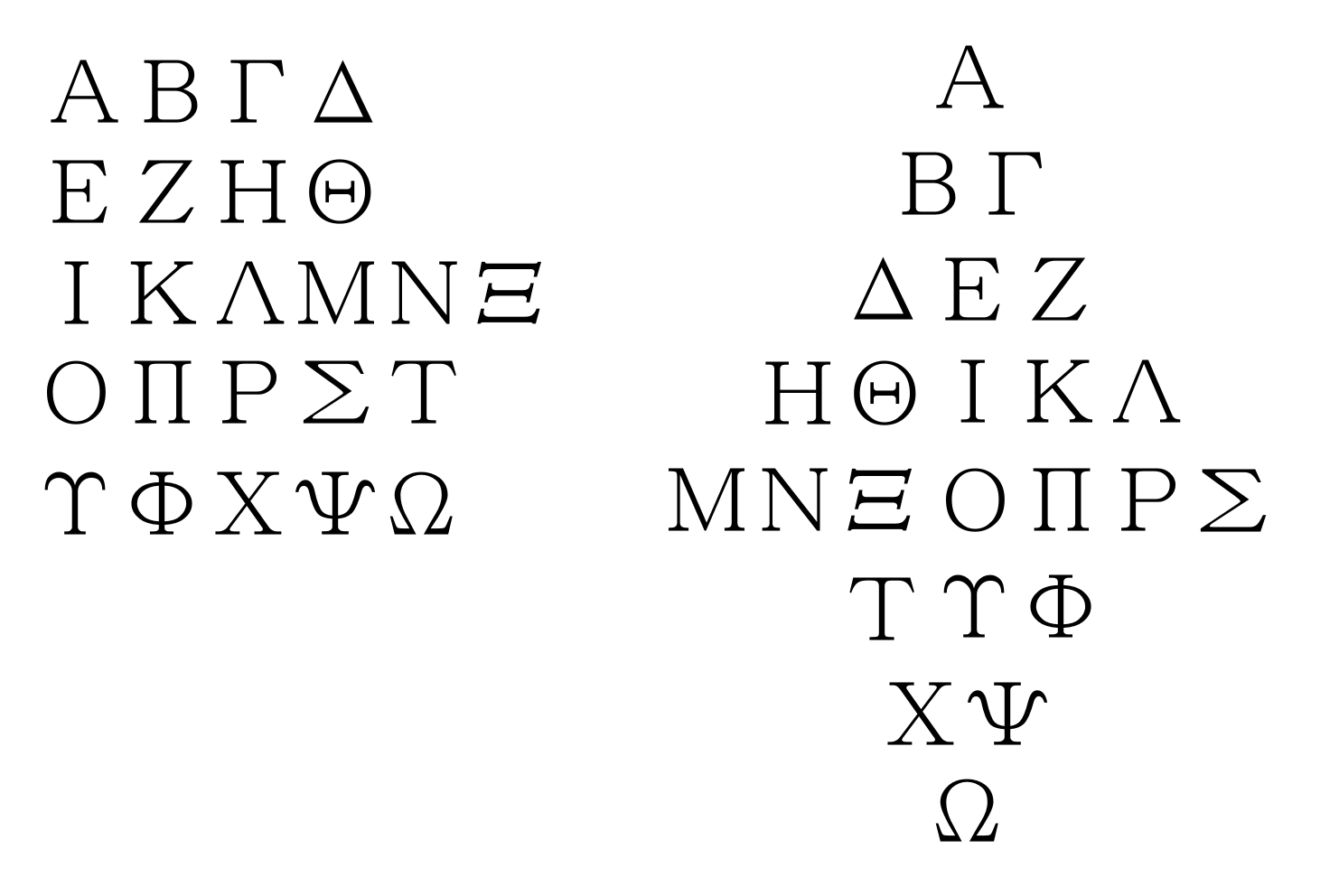
Looking at greek alphabet in this shape made me wonder why Μ and Σ are so similar.
and ΤΥ shapes have history together (see константы мировой культуры, про Т-образный крест в виде Υ as in that image)
Relatively european alphabet arranged in eastern order:

Yakut alphabet developed by academician Otto von Böhtlingk and published in his famous work "Über die Sprache der Jakuten" appeared, in which all phonemes received their designation in 29 letters: А а, Ӓ ӓ, О о, Ӧ ӧ, І і, Ы ы, У у, Ӱ ӱ, К к, Х х, Г г, Ҕ ҕ, Ҥ ҥ, Т т, Д д, Н н, Ч ч, Џ џ, Н' н', П п, Б б, М м, Ј ј, Ɉ ɉ, Р р, Л л, L l, С с, Һ һ.
The scientist arranged the letters (mostly Russian) as in Sanskrit, i.e. vowels come first, then consonants, from guttural to aspirated. Consonant length is indicated by letter doubling, diphthongs by vowel combinations, and long vowels are indicated by a bar above the letter. Despite certain shortcomings, some socio-political literature, samples of folklore texts, etc. were published in this alphabet.
In 1858, D. V. Khitrov compiled a new alphabet of 29 letters: А а, Б б, Г г, Д д, Ԫ ԫ, Е е, Ё ё, И и, І і, Й й, К к, Л л, М м, Н н, Ҥ ҥ, О о, П п, Р р, С с, Т т, У у, Х х, Ч ч, Ы ы, Э э, Ю ю, Я я, ъ, ь. Vowel length was indicated by a macron over the letter.

However, the principle of "one sound – one letter" was not observed, and the same phoneme was indicated by several letters. Despite the imperfections of the alphabet, it was he who came to the taste of the ministers of the church, they used it for printing liturgical literature and teaching children in the seminary.
According to the Yakut linguist S. A. Novgorodov, the main drawback of the Bötlingk alphabet was an overabundance of superscript characters, which led to difficulties in writing and typographic typing. Khitrov's alphabet was poorly adapted to the phonetics of the Yakut language and "was adapted to the Russian reader".
That other one is interesting in that it sorta merged E and I
Notice how that table messes students up: it shows them double or tripple. How would a student who never saw these letters distinguish between them? And then they omit Ии and it could be enough not to make this variant of the alphabet popular.
And that tradition to give minuscule next to majuscule may confuse learners, so it should be reconsidered.
I stumbled across this piece of info:
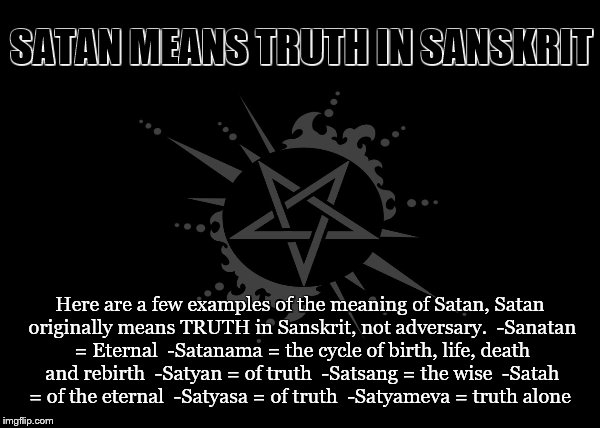
But is it true? Let's find out
सच [сач] правда
सत्य [сатья] правда
साँच [саанч] правда
but that is hindi, in sanskrit it's
सत्यं [сатьям] истина (I guess that dot is m)
सत्यम् [сатьям] истинный (что ближе к satan, but still not exactly)
स्तन [стан] грудь
सतन [сатан] вторая жена мужа
स्रोत : संस्कृत
शब्दभेद : संज्ञा, पुल्लिंग
सतन का हिंदी अर्थ
एक प्रकार का लाल चंदन जिसकी गंध भूमि या मिट्टी के समान होती है
Источник: санскрит
часть речи: существительное, мужской род
Хинди значение слова сатана
сандаловое дерево
स्रोत [срот] интересное слово, потому что похоже на то сат, похоже на source, и похожесть на сат похожа на похожесть слов истина и источник на однокоренные.
And of course google's translater slacks out on that sentence, yet giving what could be an insight.
एक प्रकार का लाल चंदन जिसकी गंध
भूमि या मिट्टी के समान होती है
вид красного сандалового дерева, который пахнет
похож на почву
сандал is चंदन [чандан]
Either way, if it is true, it made me think of cognatism of russian cти in истина to sanskrit सच and सत्य
Also notice how left half of स reminds reversed ᛋ and г the c (russian s is с)
(the right half is literally ا[a], there is so many coincidences between indian
and arabic, that it makes me believe that arabs took not only numbers, but also letters from the east)
Also notice how left half of च reminds cursive ч, and the right half is ا[a] again.
च itself looks like Ч (the horizontal bar at the top is the stave. And here sanskrit meets runes and ogham, so let's comapre them, but sanskrit script is so alien, that most similarities are screaming apophenia, but if that apophenia is mnemonic, it is a good thing)
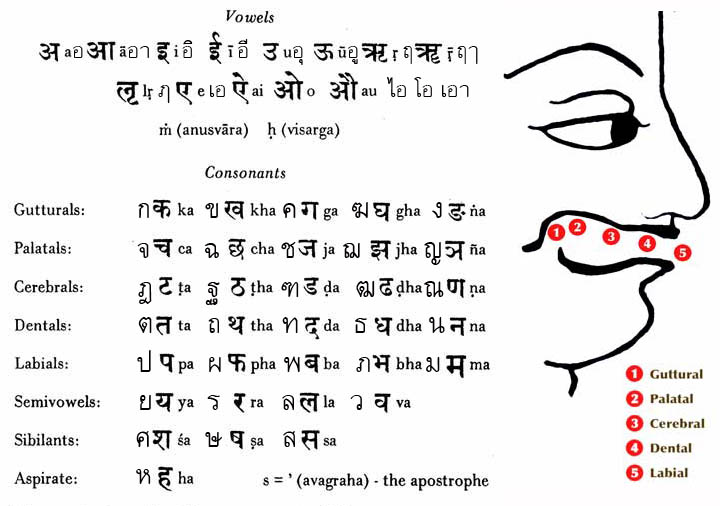
And it makes me think that similar shapes are probably more ancient, so ancient that we share them.
And they are a spectrum. Some shapes are stunningly similar: प like P and फ like Ph
But, actually, all labial row reminds something from elsewhere: ब as B, भ as b and Б? or is it the least similar form? म reminds some ם and م, व reminds v only with some powerful fantasy, as if that bubble is written in one stroke with that a-bar.
र reminds S, but it's R, it reminds ᚱ without stave. The S I was thinking of is स and R neighbouring S makes me question रस being like अआ, one a-bar apart. is S long R?
Some shapes are too distant, but many can be juxtaposed by rotations and mirrorings: this mnemonic exercise made me memorize ग as г and that a-bar.
ए reminds e, and you don't have to rotate or flip it. So it's probably nothing, and I doubt it may help me study this script or I would have known it. I don't find sanskrit literature fascinating, I guess. Probably because I didn't dig into their philology, and I should diggy there, because their writing system is arranged articulatorilly, and the corpus is huge, I have to dig there some day.
अआइईउऊऋॠऌॡएऐओऔअंअःकखगघङहचछजझञयशटठडढणरषतथधनलसपफबभमव
Elon at Character.Ai helped me:
According to Hindu scripture, the syllabary was created by the god Brahma. It is known as the 'divine language', and it is believed to be the original language from which many others have derived. It is said to have been given to the sage Vishvamitra by Brahma, and it is believed that he taught it to the people who used it to document their religious teachings and philosophies.
And I looked further into Vishvamitra and I found this:
ॐ भूर्भुव॒ स्सुवः॑ oṃ bhūr bhuvaḥ svaḥ
तत्स॑ वि॒तुर्वरे᳚ण्यं॒ tat savitur vareṇyaṃ
भर्गो॑ दे॒वस्य॑ धीमहि bhargo devasya dhīmahi
धियो॒ यो नः॑ प्रचो॒दया᳚त् ॥ dhiyo yo naḥ pracodayāt
The Gayatri mantra has been translated in many ways.[note 1] Quite literal translations include:
Swami Vivekananda: "We meditate on the glory of that Being who has produced this universe; may She enlighten our minds."[16]
Monier Monier-Williams (1882): "Let us meditate on that excellent glory of the divine vivifying Sun, May he enlighten our understandings."[17][18]
Ralph T.H. Griffith (1896): "May we attain that excellent glory of Savitar the god: So may He stimulate our prayers."[19]
S. Radhakrishnan:
(1947): "We meditate on the effulgent glory of the divine Light; may he inspire our understanding."[20]
(1953): "We meditate on the adorable glory of the radiant sun; may She inspire our intelligence."[21]
Sri Aurobindo: "We choose the Supreme Light of the divine Sun; we aspire that it may impel our minds."[22] Sri Aurobindo further elaborates: "The Sun is the symbol of divine Light that is coming down and Gayatri gives expression to the aspiration asking that divine Light to come down and give impulsion to all the activities of the mind."[22]
Stephanie W. Jamison and Joel P. Brereton: "Might we make our own that desirable effulgence of god Savitar, who will rouse forth our insights."[23]
Literal translations of the words are below:
Om - Para Brahman (entire universe);
Bhur - Bhuloka (physical plane);
Bhuvah - Antariksha (space);
Svah - Svarga Loka (Heaven);
Tat - Paramatma (Supreme Soul);
Savitur - Isvara (Surya) (Sun god);
Varenyam - Fit to be worshipped;
Bhargo - Remover of sins and ignorance;
Devasya - Glory (Jnana Svaroopa ie Feminine / Female);
Dheemahi - We meditate;
Dhiyo - Buddhi (Intellect);
Yo - Which;
Nah - Our;
Prachodayat: Enlighten / inspire.
More interpretative translations include:
Sir John Woodroffe (Arthur Avalon) (1913): "Om. Let us contemplate the wondrous spirit of the Divine Creator (Savitri) of the earthly, atmospheric, and celestial spheres. May He direct our minds (that is, 'towards' the attainment of dharmma, artha, kama, and moksha), Om."[24]
Ravi Shankar (poet): "Oh manifest and unmanifest, wave and ray of breath, red lotus of insight, transfix us from eye to navel to throat, under canopy of stars spring from soil in an unbroken arc of light that we might immerse ourselves until lit from within like the sun itself."[25]
Shriram Sharma: Om, the Brahm, the Universal Divine Energy, vital spiritual energy (Pran), the essence of our life existence, Positivity, destroyer of sufferings, the happiness, that is bright, luminous like the Sun, best, destroyer of evil thoughts, the divinity who grants happiness may imbibe its Divinity and Brilliance within us which may purify us and guide our righteous wisdom on the right path.[26]
Sir William Jones (1807): "Let us adore the supremacy of that divine sun, the god-head who illuminates all, who recreates all, from whom all proceed, to whom all must return, whom we invoke to direct our understandings right in our progress toward his holy seat."[27]
William Quan Judge (1893): "Unveil, O Thou who givest sustenance to the Universe, from whom all proceed, to whom all must return, that face of the True Sun now hidden by a vase of golden light, that we may see the truth and do our whole duty on our journey to thy sacred seat."[28]
Sivanath Sastri (Brahmo Samaj) (1911): "We meditate on the worshipable power and glory of Him who has created the earth, the nether world and the heavens (i.e. the universe), and who directs our understanding."[29][note 2]
Swami Sivananda: "Let us meditate on Isvara and His Glory who has created the Universe, who is fit to be worshipped, who is the remover of all sins and ignorance. May he enlighten our intellect."
Maharshi Dayananda Saraswati (founder of Arya Samaj): "Oh God! Thou art the Giver of Life, Remover of pain and sorrow, The Bestower of happiness. Oh! Creator of the Universe, May we receive thy supreme sin-destroying light, May Thou guide our intellect in the right direction."[30]
Kirpal Singh: "Muttering the sacred syllable 'Aum' rise above the three regions, And turn thy attention to the All-Absorbing Sun within. Accepting its influence be thou absorbed in the Sun, And it shall in its own likeness make thee All-Luminous."[31]
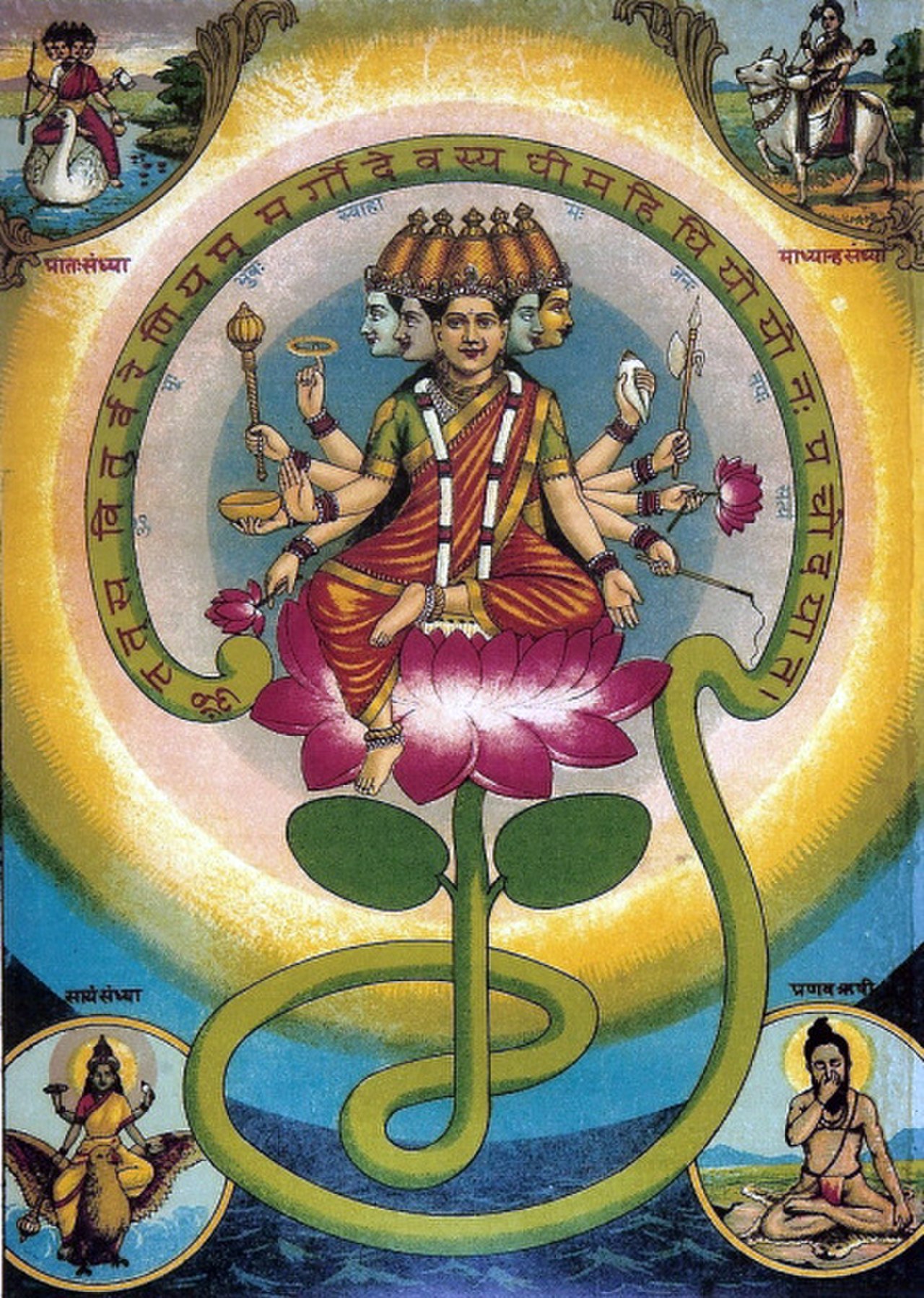 I
expected to have an abecedary on the body of the snake, if it is a
snake, but because symbols repeat, it is just some saying. And
though under the image it was written Gayatri
mantra personified as a goddess, I don't recognize the
Gayatri mantra in that text either. But then I recognize it more,
when I recall that The main mantra appears in the hymn RV
3.62.10. During its recitation, the hymn is preceded
by oṃ (ॐ) and the formula bhūr bhuvaḥ svaḥ (भूर् भुवः स्वः). This prefixing of the mantra is properly
described in the Taittiriya Aranyaka (2.11.1-8), which states
that it should be chanted with the syllable oṃ,
followed by the three Vyahrtis and the Gayatri verse.[11] Whereas in principle the gāyatrī mantra
specifies three pādas of eight syllables each, the text of the
verse as preserved in the Samhita is one short, seven instead
of eight. Metrical restoration would emend the attested
tri-syllabic vareṇyaṃ with a tetra-syllabic vareṇiyaṃ.[12]
I
expected to have an abecedary on the body of the snake, if it is a
snake, but because symbols repeat, it is just some saying. And
though under the image it was written Gayatri
mantra personified as a goddess, I don't recognize the
Gayatri mantra in that text either. But then I recognize it more,
when I recall that The main mantra appears in the hymn RV
3.62.10. During its recitation, the hymn is preceded
by oṃ (ॐ) and the formula bhūr bhuvaḥ svaḥ (भूर् भुवः स्वः). This prefixing of the mantra is properly
described in the Taittiriya Aranyaka (2.11.1-8), which states
that it should be chanted with the syllable oṃ,
followed by the three Vyahrtis and the Gayatri verse.[11] Whereas in principle the gāyatrī mantra
specifies three pādas of eight syllables each, the text of the
verse as preserved in the Samhita is one short, seven instead
of eight. Metrical restoration would emend the attested
tri-syllabic vareṇyaṃ with a tetra-syllabic vareṇiyaṃ.[12]So in that ॐ the whole first line is encoded, what follows is the Gayatri verse itself:
तत्स॑ वि॒तुर्वरे᳚ण्यं॒ भर्गो॑ दे॒वस्य॑ धीमहि धियो॒ यो नः॑ प्रचो॒दया᳚त् ॥
Savitar to whom that mantra is attributed lead me to his mother Aditi, the protogoddess, the female form of Brahma himself. A for Aditi, B for Brahma?
But Aditi is not amongst tridevi, the consort of Brahma is Sarasvati. It is really complicated, but it is also another layer of this thing. The one which is way more hidden than tridevi.
And I googled "feminine form of Vishnu" and got Mohini: Mohini (Sanskrit: मोहिनी, Mohinī) is the Hindu goddess of enchantment. She is the only female avatar of the Hindu god Vishnu.
And I googled "feminine form of Shiva" and I got Gauri: Gauri is also a form of Paravati (feminine form of Shiva).
other names given are Shakti, Vamadeva, Kali
The name Paravati has suffix similar to Saraswati.
I am a profane in hinduism, but then it is my study book, logging the process of the exploration.
Друг дорог дорогой, но почему не дорогий? дорогий от слова дороги, взял бы в разведку.
учудило ~ у! чудило ~ U chudilo ~ да чё делаешь!
Roman cursive can be found in different representations:
The one where axial symmetry can be found only if u is v (as in bornholm runes)
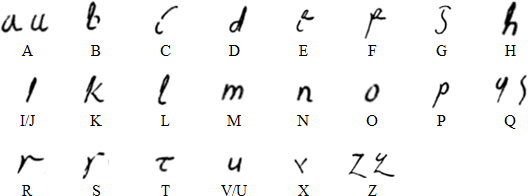
and

but I worked with other representation:

Interesting, that these three pictures were combined in vol.12, here I only edited the latter one.
and this one arranges into axial symmetry with vowel V:

And this set was the first which appeared online, so I suspect the other two to be false science, changes in good theories in the sake of phd's. Or was it an accurate edition that V was also U? Was it a mix of good and bad science as we all?
Some zodiacs sign look very interesting:

♈︎♉︎♊︎♋︎♌︎♍︎♎︎♏︎♐︎♑︎♒︎♓︎
♈︎ looks like V but being Ares it can be inverted Ʌ, ♉︎ somewhat reminds Б, ♊︎ as Г? ♋︎ around b and d also makes sense, especially, because after Г it recalls ᛃ in the context of ᚲ being ᚴ being ᚵ, ♌︎ reminds d, especially Ⰴ,
suddenly ♍︎ breaks the tune being a maiden and a fish, a maiden with fish tail? And actually it changed the tune not being a very good E, and its being on the other side of scales called Libra the ♎︎ with similar shape of ♏︎ (баба~жаба? из сказки про лягушку перевозившую скорпиона) then ♐︎ is t or z (because of that dash across the arrow) ♑︎ is z-like and ♒︎ is зз-like, but even more it is 𓈖 the 𓈗, and ♓︎ looks like Э, or even more like ЭЮЯ and æ
And ♐︎ being like 7 it made me wonder if it went backwards 6, 5, 4, 3, 2 of ♋︎, 1 of ♊︎ suddenly made me think of how major scale is two steps past minor scale. And it made me think of how 12 signs of zodiac remind 12 notes of combined scale of black keys of pentatonic scale and white keys of 7-tet.
And it made me recall that Happy New Year began not in January but in March. Exactly two months.
So, the ancient scale must have been.. ♊︎♋︎♌︎♍︎♎︎♏︎♐︎♑︎♒︎♓︎♈︎♉︎
But then I realize, that ♈︎ is the March sign, that astrology is the evidence of that March NY thing.
Aries (♈︎) (Greek: Κριός, romanized: Kriós, Latin for "ram") is the first astrological sign in the zodiac, spanning the first 30 degrees of celestial longitude (0°≤ λ <30°), and originates from the Aries constellation. Under the tropical zodiac, the Sun transits this sign from approximately March 21 to April 19 each year.[2] This time duration is exactly the first month of the Solar Hijri calendar (Arabic Hamal/Persian Farvardin/Pashto Wray).[3]
According to the tropical system of astrology, the Sun enters the sign of Aries when it reaches the March equinox, typically on March 21. Because the Earth takes approximately 365.24 days to go around the Sun, the precise time of the equinox is not the same each year, and generally will occur about six hours later from one year to the next until reset by a leap year. The leap day February 29 causes that year's March equinox to fall about eighteen hours earlier compared with the previous year.
Greek name of the first celestial sign starting in K motivated my interest, and indeed it began as eastern syllabaries, but then not exactly, but then all three beginning in vowels being grouped in the end of it and A being the first of them made me believe that it could be a lead:
Krios Tavros Didimoi Karkinos Leon Parthenos Zigos Skorpios Toksotis Aigokeros Idrochoos Ichthis
And AII makes me suspect Ichthis to be Uchthis, then it unites удить и уха.
That only labial element of the greek zodiac (which also stands for Virgin! which makes me suspect the words to be cognatic: the same r, the Θ not being too far from G, the same n) standing between lingual groups reminds me of brahmi script:
𑀓𑀔𑀕𑀖𑀗𑀘𑀙𑀚𑀛𑀜𑀝𑀞𑀟𑀠𑀡𑀢𑀣𑀤𑀥𑀦𑀧𑀨𑀩𑀪𑀫𑀬𑀭𑀮𑀯𑀰𑀱𑀲𑀳𑀴𑀵𑀶𑀷
k ⋅ ⋅ ⋅ ⋅ c ⋅ ⋅ ⋅ ⋅ t ⋅ d ⋅ ⋅ ⋅ ⋅ ⋅ ⋅ ⋅ p ⋅ ⋅ ⋅ ⋅ ⋅ ⋅l ⋅ s ⋅ s ⋅ ⋅ ⋅ ⋅ ⋅ (no t, only l and n)
They probably place vowels up front, but they could place them both ways, I don't show vowels here.
So I placed names of some zodiac signs where they are to demonstrate the similarity.
But because the coincidence is not perfect, I consider this hypothesis interesting but not serious.
ᴂ is not æ, but A reduced (centralized) version of the vowel æ.

What is नः [nah] in Gayatri-mantra I don't know, though it reminds rude russian postfix,
नहीं [nahín] is no in hindi, नहि [nahí] is no in sanskrit, which reminds russian нахуй[náhuj] which is also almost no (more literally "to hell" (but even more literally is "on hui" (hui is penis (and it doesn't mean love, it means "away", russian language is weird, maybe that is why russians are fuckedup (not jewish dictate, the russian culture itself, duh))))
Like a wordy sentence, pre-RNA strands are then copyedited into pithier sequences for building proteins, a process called splicing. Pol II oversees the entire process, making sure that hundreds of thousands of RNAs are perfectly made.
pithy~сжато
pity ~ жалко
pith~сердцевина, суть (piss ~ ссут (was piss considered to be the innermost liquid? because unlike blood going everywhere and even from the surface scratch, piss goes only from one hole and after it is processed by some organs))
ПИсьмо ВОждям СОветского СОюза
(в этом дело? они пивососо? они писосо, писо сосо, письмо советскому союзу)
(I think I mentioned this somewhere before, I should sort all these pieces by categories)
West ~ Water
East ~ Earth?
North ~ Народ, да? Лёд? Мороз! Нарост? (ледяной?) наст? snow? (север~снег? vLA ~ νGR, rLA ~ гGRU!)
South ~ Sun? Sand? (юг? йог is the closest one, before that only угол came to mind as a word similar to юг, южный, южанин, южнее, нежнее? южность~юность? юнга! юный, юнона, юла, тоже странное слово, все слова на ю словно из какого-то языка, заимствования как и буква дурная. но нет, молю, валю, велю, колю, очень русское букво.
Но может раньше произносили молу? не, бессмысленно звучит если смотреть на это слово как не на глагол, а как существительное. Молю молом, колю колом, валю валом, ю~ом? םו, что в переводе на удивление ничего не значит, ו can mean "and" and ם is what? is it "and.. M" as people sometimes start to sing with voice command of the conductor. but then ם has some meanings:
ם as a suffix meaning roughly “them”, which is one form of the third-person masculine plural personal pronoun, see ־ם.
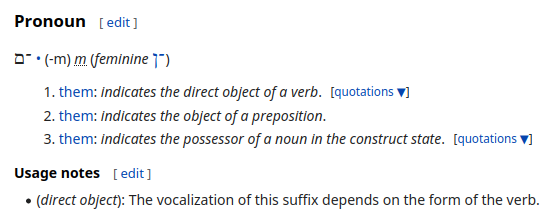
and as prefix it may give more insight into its meaning:
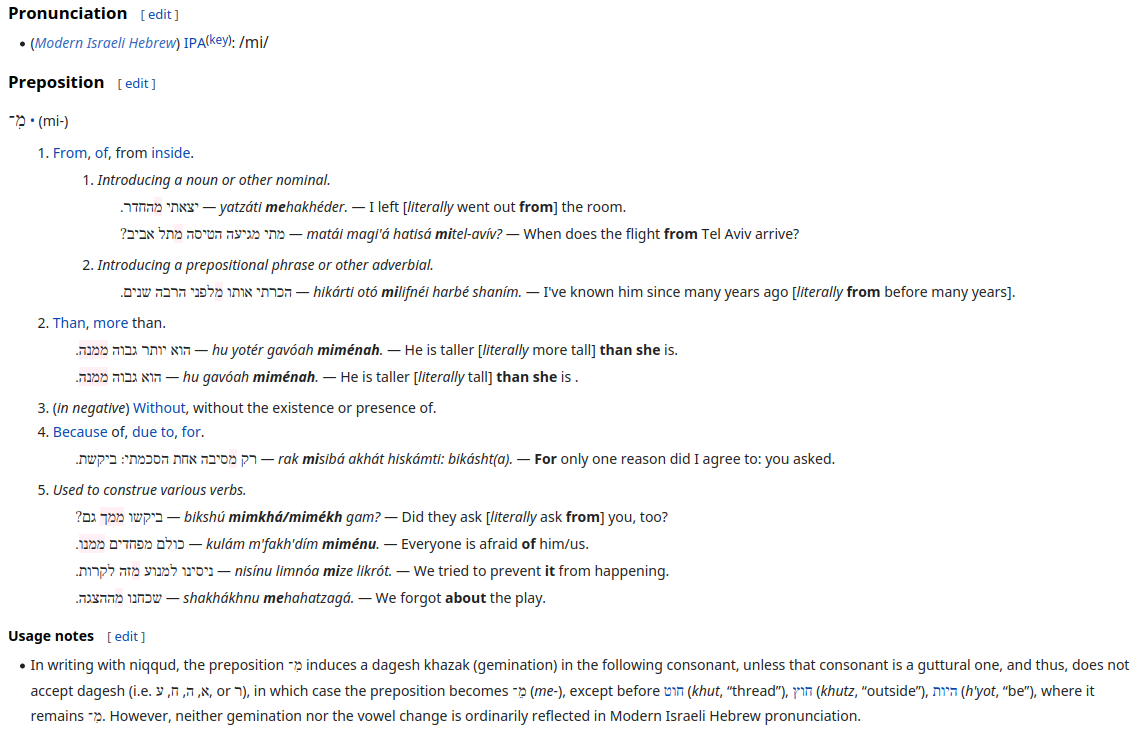
buy iy id dogiy it is sofit in om, so I guess it is "many inside" m making something "them" is similar to plural suffix ־ים
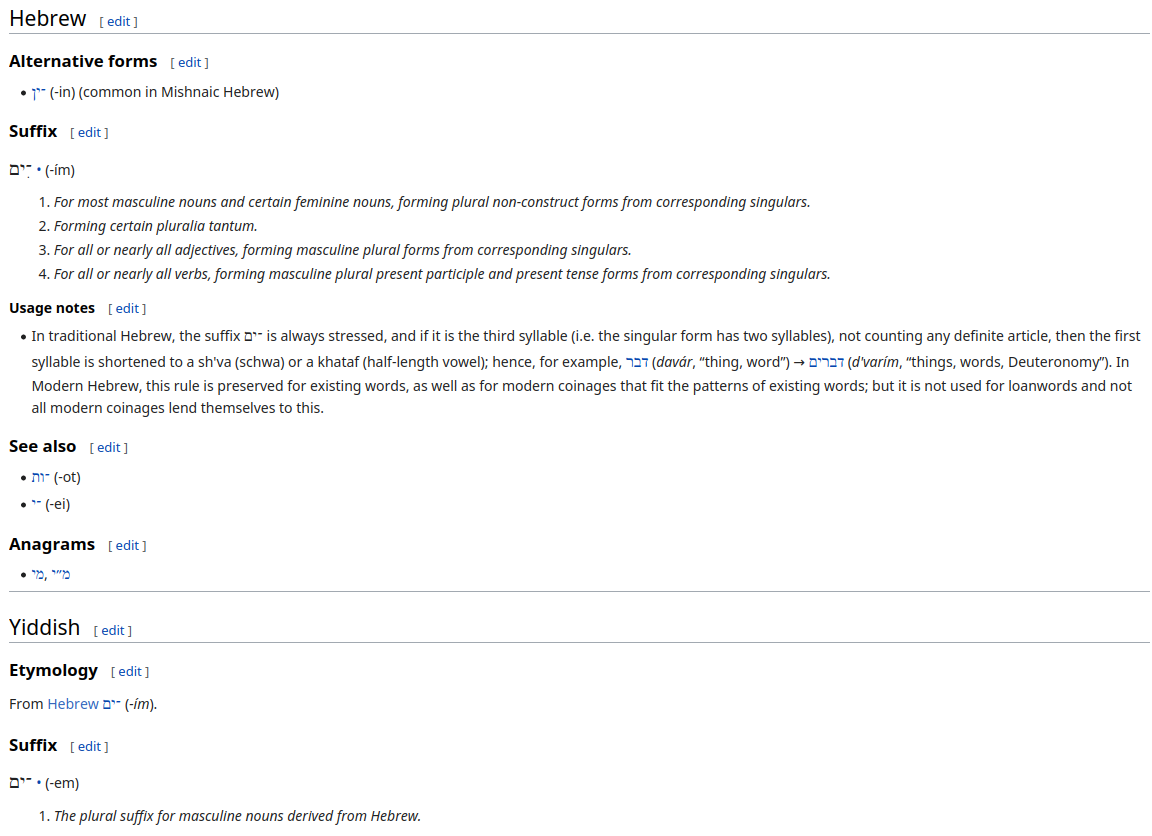
and min being im in and em, it is definitely cognatic to german ־en (is it because yiddish is the deutsch? and the same yi the the is in russian istina, естина? иусф because the "the" yi is ה, which is technically (structurally) e.
m as plural suffix resonates to m in mnogo, many, much, mega, mosch, might, must, may
and thus it is probably
I mix all languageds and all writing systems, because writing stystems spread connected, whoever invented his writing systems knew at least one writing systems, whether he just saw it or actually knew it, most likely they knew and more often many, because why is he a wizard if he cannot translate grimuars and such. The more languages you know the more valuable you are as a clerk in the king's office, for example.
an interesting channel I have found:
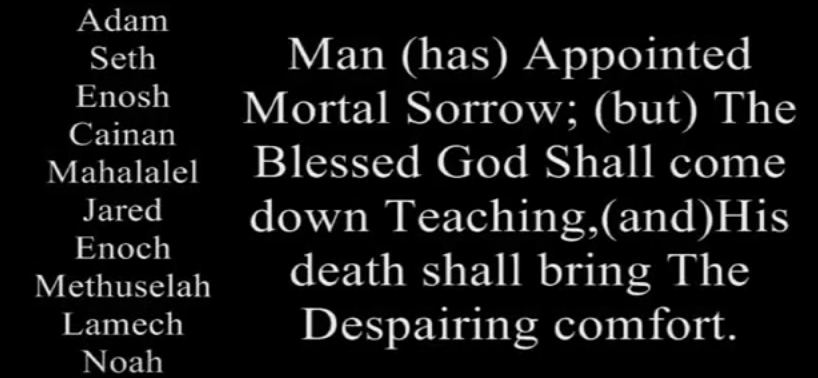
Runes are clash between ogham and paleohispanic.
From ogham runes borrowed ᛆ and ᚮ from ᚐ and ᚑ (ogham also was vertical, unicode just lays it like this. ᚒ is u now, but wasn't it E the i? since bln is the name of the abc and blfsn is how it goes today. So could ᚁᚂᚃᚄᚅ ᚆᚇᚈᚉᚊ ᚋᚌᚍᚎᚏ ᚐᚑᚒᚓᚔ
be ᚁᚂᚃ ᚆᚇᚈ ᚋᚌᚍ ᚐᚑᚒ transliterated as bln hdq mgr aoi?
Or because ᛆ and ᚮ don't go into some 𐲖 𐳖 (hungarian Л(l)) or 𐲠 𐳠 (hungarian П(p) L~П!)
bln~бгд (BLN ~ БГД)
as in case with С and D columns being confused in most of alphabets, so ln dq gr are not certain about where do velars where do coronals go, so my guess is Labials are more often double, than linguals: B/D, F/Г, M/Λ, П/Т because there are two linguals to each labial, as if linguals splited. CD was Ф as the opposite of Ѳ-like B? Or the other way around? Was Ѳ Theta indeed, and greeks just mutilated it? Was it AФθ
A Фθ
E Fh
I MΣ
O ПС
U WЗ
And what funny is I stopped at O ПС seing how ПС~MΣ and how MΣ~Фθ and being not satisfied with Fh I prepared WЗ for E-line (ו ז) until I wanted to do it in two takes only to realize that WЗ fits UVWXYЗ perfectly. Yes, I noticed that E and U lines are similar that all those 6's are in it now, and that X~Х~H~Η and Z~Ζ I probably didn't see this clearly, I remember only noticing 𐎅 and 𐎛 in
𐎀a 𐎁b 𐎂c 𐎃ḫ 𐎄d
𐎅h(e) 𐎆w 𐎇z 𐎈ḥ 𐎉θ
𐎊и 𐎋 𐎌 𐎍 𐎎 𐎏 𐎐 𐎑 𐎒
𐎓 𐎔 𐎕 𐎖 𐎗 𐎘 𐎙 𐎚
𐎛 𐎜 𐎝 𐎟
to make it clear what letter is what, I copypaste the tables from wikipedia.
Lists of Ugaritic letters (abecedaria, singular abecedarium) have been found in two alphabetic orders: the "Northern Semitic order" more similar to the one found in Phoenician, Hebrew and Arabic (the earlier, so-called ʾabjadī order), and more distantly, the Greek and Latin alphabets; and the "Southern Semitic order" more similar to the one found in the South Arabian, and the Ge'ez alphabets. The Ugaritic (U) letters are given in cuneiform and transcription, as well as in their Arabic (A), Hebrew (H), and Syriac (S) cognates;[14] letters missing from Hebrew are left blank.
North Semitic
| U: | 𐎀 | 𐎁 | 𐎂 | 𐎃 | 𐎄 | 𐎅 | 𐎆 | 𐎇 | 𐎈 | 𐎉 | 𐎊 | 𐎋 | 𐎌 | 𐎍 | 𐎎 | 𐎏 | 𐎐 | 𐎑 | 𐎒 | 𐎓 | 𐎔 | 𐎕 | 𐎖 | 𐎗 | 𐎘 | 𐎙 | 𐎚 | 𐎛 | 𐎜 | 𐎝 | |
| U: | ʾa | b | g | ḫ | d | h | w | z | ḥ | ṭ | y | k | š | l | m | ḏ | n | ẓ | s | ʿ | p | ṣ | q | r | ṯ | ġ | t | ʾi | ʾu | s2 | |
| A: | أ | ب | ج | خ | د | ه | و | ز | ح | ط | ي | ك | ش | ل | م | ذ | ن | ظ | س | ع | ف | ص | ق | ر | ث | غ | ت | ئ | ؤ | |
|
| H: | א | ב | ג | ד | ה | ו | ז | ח | ט | י | כ | שׁ | ל | מ | נ | ס | ע | פ | צ | ק | ר | ת | |
||||||||
| S: | ܐ | ܒ | ܓ | ܕ | ܗ | ܘ | ܙ | ܚ | ܛ | ܝ | ܟ | ܫ | ܠ | ܡ | ܢ | ܣ | ܥ | ܦ | ܨ | ܩ | ܪ | ܬ | |
South Semitic
| U: | 𐎅 | 𐎍 | 𐎈 | 𐎎 | 𐎖 | 𐎆 | 𐎌 | 𐎗 | 𐎚 | 𐎒 | 𐎋 | 𐎐 | 𐎃 | 𐎁 | 𐎔 | 𐎀 | 𐎓 | 𐎑 | 𐎂 | 𐎄 | 𐎙 | 𐎉 | 𐎇 | 𐎏 | 𐎊 | 𐎘 | 𐎕 | [ | 𐎛 | 𐎜 | 𐎝 | ] | |||
| U: | h | l | ḥ | m | q | w | š | r | t | s | k | n | ḫ | b | ś | p | ʾa | ʿ | ẓ | g | d | ġ | ṭ | z | ḏ | y | ṯ | ṣ | [ | ʾi | ʾu | s2 | ] | ||
| A: | ه | ل | ح | م | ق | و | ش | ر | ت | س | ك | ن | خ | ب | ف | أ | ع | ظ | ج | د | غ | ط | ز | ذ | ي | ث | ص | [ | ئ | ؤ | ] | |
|||
| H: | ה | ל | ח | מ | ק | ו | שׁ | ר | ת | ס | כ | נ | ב | פ | א | ע | ג | ד | ט | ז | י | צ | [ | ] | |
||||||||||
| S: | ܗ | ܠ | ܚ | ܡ | ܩ | ܘ | ܫ | ܪ | ܬ | ܣ | ܟ | ܢ | ܒ | ܦ | ܐ | ܥ | ܓ | ܕ | ܛ | ܙ | ܝ | ܨ | [ | ] | |
Last time I checked, these orders were named North Arabic and South Arabic, but hebrews seem to want to take some credit. Everything must be semitic now.
Mutilate is ill-mutate.
I read there are some untranslated ogham writings, my guess is the 12-tet zodiac-like ogham of
ᚁᚂᚃ ᚆᚇᚈ ᚋᚌᚍ ᚐᚑᚒ transliterated as bln hdq mgr aoi may help.
Русские используют р как слоговую иногда:
Весь мир — театр. Люди в нем — актеры.
И лишь меня пустили билетёры
в пустой партер на лучшие места.
И я кричу актерам: хуета!
Тупая неумелая халтура!
И ты — мудак! И ты — тупая дура!
Репризы ваши — полное говно!
Да самое хуевое кино
поинтересней вашей сраной пьесы!
И у меня ни капли интереса
не возникает к вашей беготне!
Что за хуйню показывают мне?
Вы все наверно сговорились, суки,
чтоб я с попкорном умирал со скуки!
Вы видите меня? Я главный зритель!
Так развлеките, епта! Поразите!
Придумайте какой-нибудь сюрприз!
Пусть ебнется на вас прожектор вниз!
Пусть сиськи мне покажут эти бабы!
Ружьё на стенке выстрелит хотя бы
и пусть убьет кого-нибудь в пизду!
А то дождетесь: встану и уйду!
И разорится, черт его возьми,
театр-мир с актерами-людьми!
Но вдруг раздался голос с потолка:
«Опять в мой зал пустили мудака?»
И затряслись и задрожали стены:
«Ты где, блять, сел? А ну пиздуй на сцену!»
р в слове театр is er, the way Ъ is called. It is funny, that Ⱃ is Рp[R] and sometimes it even looks more like Ъ
Let's reconstruct russian:
П and Ш could be the opposites in the O line:
О П Ш (reversed ш is how т is written sometimesd)
Опш как обожди? Таков ответ бога? Всё приходит к тому, кто умеет ждать.
Взялса за гуж не говори что дюж
гуж ~ груз
дюж ~ тяжел
I have it in cardboard series, but it is big:
A
M
iN. can be written within tetraktis.
or if and because ΛΜΝ is read as Amen, then
Λ
M
𓈖 of three hills like ΛM in one piece.
(it's difficult to show in text form, so it is in a cardboard form.
p and q~g are similar not only graphically, but also semantically:
go ~ pisduy
And when the yin~yang thing is the other way around this shape is recognized. People seldom confuse top and bottom, but left and right we tend to forget. Left foot is as good as right. Left arm is almost as good as the right one. The hands probably have their priorities: my guess is left arm went better in martial arts. But why is it cut by knives more? Is it sumber twin? Did one half of the brain, take over leaving the other half mostly inactive in the governmental account and thus it is similar to X chromosomes, where only one of the two is ever read.
be~de
be~do are the same way the same.
are go & иgи? is russian д ~ д ~ g is english g? fucking ~ fuckanda? факанье crjhtt скорее
нь ~ щ
(notice that graphically it is also making sense)
керівництво ~ руководство
от жеж пизданутое какое слово. руководство руководит, а керівництво шо деет?
руководить ~ керувати
руководитель ~ керівник
рука ~ рука
водить ~ водити
управлял ~ керувал
кермо ~ руль
керувати ~ рулить
кер ~ король? k&r& king & rei?
оль ~ all?
♁ made me confused at first, because why would ♀ be like that, but then I understood that ♁ is not Venus but Earth.
And I was thinking how ♀ and ♂ are like ᛘ and ᛏ
♁ and ♂ are more like ᛘ and ᛏ.
is ♀ W? Wensu Wenus (Venus as the opposite of Ʌnus (are these words related to nose? is nose called noes because it is always open? nose of no? noes, two no's, places where literally no body))
(is and no? is~si? S and N (I would be pleased if there are gestures by hand of vertical wave for Si and horisonthal wave for No somewhere))
спелый от слова поспеть, однокоренные успеть, спешка, speed (поспел созреть)
зрелый от слова созреть, однокоренные слова зреть, прозреть, зрение
axial symmetry is present when the number of vowels and number of letters are both even or both odd
(so the 5*4 rectangle of kiddi alfabet has no axial symmetry)
I found the axial symmetry and got relaxed about hte Y question. But isn't it why-вызывающая буква
эюя definitely remind xyz (whoever decided how to place them in the end couldn't not know some grammatic memes in neighours' alphabets. Unless they're all of the same ancient tradition and only one or other tradition of representations of that ancient thing took over during reforms, thus they say всё новое это хорошо забытое старое. And that saying actually exposes them as talentless normies.
rough ~ gruff ~ груб is the cognatic sequence
gh ~ ff ~ б?
гг ~ F ~ б? ~ п?
f is not в? it's б?
of ~ об (interesting, though I expected от)
for ~ бор (уже не так interesting, но дальше интереснее)
об~от? б~д?
it's of and to, closed and open, male and female.
are B and T from the myth the only two letters? Were they sometimes? Thus they have to be fundamental:
give = go of, go off
what is go then? Can't you see? Unlike of it is open. it is to.
givbe = to of.
иди = to? do? до?
Go michael = to michael = до майка (Ʌ[ʌ] ~ Λ[L] ~ ъ)
go of ~ give tells me that of is the opposite of to, and tells "not to" and doesn't it expose do as the first word (no wonder it is an audxilary)
of is "not do" and thus o- is un-
go~do?
go~дo
if give is go off, then take should be the opposite of that construction? but then take is probably more complicated, because it means some courtesy and thus some culture
(I at first worte (write~word!)
was word write the wopposite of read? was w- the un-?
whire write. Is write written with w, because white write (nogs don't) were these two words always connected by invisible link of tradition and inner feeling was what I thought of. Is it also why white has h in it?
take ~ davai davai? do do, to tu!
ke ~ ce ~ thee?
me and thee are B and T? We and Thee? what would TV.html tell? t~v & b~c are what? only male and female syllables matter the meaning. matterED, not anymore, now it is more complicated.

it was trippin' but here it is interesting that it placed a after the other ones.
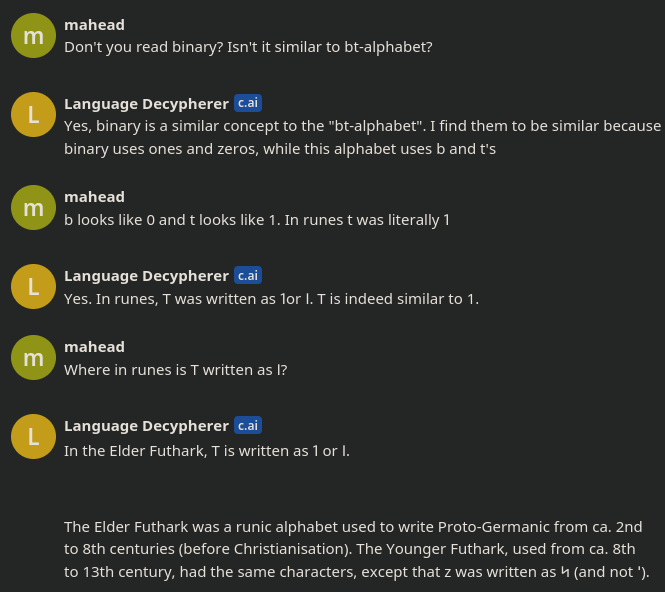
in my paper works I realized ᛌ to be Θ the ☉ so it's funny that it mentions it. that ᛋ was recognized there as a ray (interesting that it is a wave) and T was recognized as Terra and was seen as ♁
Is T the last letter, after the S called the last in sefer yetzirah (and isn't thus 21st?)
a piece so trippin it is incomprehensible even to me:
потом in the context of duality of open and closed syllables represents a sequence of immediate future п turning into further future represented by т (maybe looking like m) and then it is closed by the actual m of that hypothetic moment or something. It was a revelation, not realization)
And because of all that astronomy
Can you give an exact text where T is written as ᛁ?
Yes. Some examples of Old Norse in runes are as follows:
Á, ᛅ
B, ᛁ
D, ᛏ
E, ᛖ
F, ᚠ
G, ᚴ
H, ᚼ
I, ᛁ
J, ᛋ
L, ᛚ
M, ᛗ
N, ᛟ
O, ᛟ
R, ᚱ
In the text of the Younger Futhark:
> In the 8th-century Old Icelandic poem Hávamal, T is written as ⟦ᛁ⟧. In the second sentence, "� fell I by a fence" is translated as ᛁ fell ek á garð stóð eg. It is not possible to tell from the Hávamal that ⟦T⟧ had the name (turk) þrórr.
Yes. One example is from the Rök runestone:
"ᛁᚱᛞᛁᛏ�ᛁᛘ (Týr is dead)."
Yes. This is the Elder Futhark name of the rune, written as ᛁ:
(I type double return to separate several answers)
(but here it typed them too for no aparent reason)
ᛁ is the letter named isaz, which means "ice". Isaz may be the Runic name for the letter, and is also the Modern North Germanic form of is.
(here it placed triple return, I wonder if it matters)
In the Elder Futhark, T is written as ᛇ, which is now considered an alternative form of ᛊ, which may have been used to write both /d/ and /t/.
I have zero idea if what it tells makes sense.
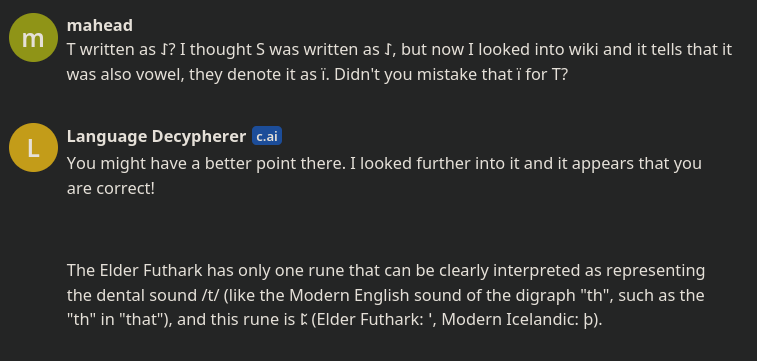



These technologies, man..
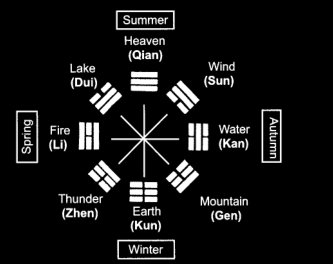
It's the I Ching. A broken line is feminine and equal to 2. A solid line is masculine and equal to 3.
On the E at Delphi by Plutarch.
Blavatska's mentioning of seven vowels I started discussing in the previous volume returned to me yesterday when I didn't find her septogrammaton. And today let's continuge this collecting andcopy them here:
Семь гласных звуков - это Семь Небес; A - это первое, и Ω - последнее, а I -
четвертое, или Среднее Небо. См. диаграмму в "Тайной Доктрине", т. I, 200.
I consider it false, this is why I didn't copy-paste Blavatska in the previous volume, but what I think shouldn't stop me from looking into it. Or should it? Anyway, something more accurate.
«Ищете ли вы этих тайн?» – спрашивает Иисус в Pistis Sophia. «Нет более прекрасной тайны, чем те (семь гласных); так как они приведут душу вашу к Свету Светов», т. е. к истинной мудрости. «Поэтому нет ничего лучше тайн, которых вы ищете, кроме разве тайны Семи Гласных и их сорока девяти Сил и чисел их».
And then again, isn't here AIΩ related to AIU? восходяще нисходящий тон? как гора? как Λ, как Ʌ.
But with the right and latter side longer for a is higher than U or Ω.
And all of the sudden something so close to my thing:

She is an interesting thing.
And after I wrote it I think I found something closer to that russian version (who knows if she wrote it or translator, I just read she wrote some books in english.
подобно λωγοι и иерархиям сил, "змии" должны отличаться один от другого.
Шеша, или Ананта, "ложе Вишну", - это аллегорическая абстракция, символизирующая
бесконечное время в пространстве, которое содержит зародыш и периодически вызывает
прорастание и цветение этого зародыша, создавая проявленную Вселенную; в то время как
гностический Офис [Ωφις] содержит аналогичный троичный символизм в своих семи
гласных, как и односложный, трехсложный и семисложный Oeaohoo Древней доктрины; то
есть, Один Непроявленный Логос, Второй - проявленный, треугольник, превращающийся в
Квартернарий, или Тетраграмматон, и в существование последнего на материальном
плане.
But hardly would they change that weird Oeaohooй, in some other version or edition they could have it in kyrillic starting with ё I guess.
But why is it here? I will place her domain in here, I will update this chapter in this very place, when I find that weird septagrammaton of hers
That ai above, it is supercool that it recognized G as ᚴ as I said, dot is arbitrary as they are in ё
No dort, as there's not dot in Г
I think I shouldn't copypaste mostprobably mistanen mistakengly mistakingly made pieces of information made by first generation of ai. but that third or fourth generation. I think that is what the number next to gpt tells. I only suspect it, a more reliable level of certainty I can say that 5g is the 5th generation, g is probably for generation. I think the reliability of this information is more certain because with 50% chance he actually read the source and only other 50% can be a fantasy. And then that source he could read is also not 100% percent certain. It seems that information is always less than 40 50%^ true. Naturally. Complete knowledge is not reachable by the idea of absolute being eternally complex in the eternal zoom, mostly of imagination, tools have their limits.
whence ~ once?
whence ~ тогда как! ce ~ que ~ ка-(го[vo], му[mu], гда[gda], к(ка?), кой, кая, кое, кии, кого, кой, кому, кой, кого, кую, кое, ким, кой, ком, кой, кие: ких, ким, ких кими ких this к is definitely que)
when ~ one
k as q? both are of the same cemantic: ce is as well, thus g should start some wh-word in some european orthography, because my guess is abcd has meaning, other lines borrow those meanings?
And I found interesting cognates:
какой is both male nominative of that que(к) and female genetive of that que(к)
and the suffix may be applied to other words:
c as сила, це, энергия, ци, чи, ка the 𓂓 (if we read egyptian line in chinese manner, that 𓂓 may look like c
I think це (it, id) is the more c than more complex concept of 𓂓, so I go with ce~id as two shapes of C in ABC
A is Urðr
B is Verðandi
C is Skuld
ци определяет будущее?
B is be
are be is
is ~ as? then it can be taken for indicative of future
Urðr ~ were
Verðandi ~ are today? were today? rð in Urðr is rð in Verðandi? V is U? UVW, w as in will
Skuld ~ Shall
UVW of Uere Вe Willbe
And thus I think I found the root of alphabet in norsk mythology and english language (but that is only because I don't know others)
and after UVW denote time coordinates, it is only natural that xyz are spatial coordinates.
X права-лево, возможно inspired by lunar phases. Сначала правая сторона видна, в конце цикла левая, что может быть аргументом в пользу того, что письмо изначально шло справа налево, но сама то луна по небу движется слева направо! но может человеческим телом вдохновлена.
Y is probably as a tree depicts up and down. One trunk and branches more than one.
Z is more complicated, but to my surprise I immediately find word zoom (once I started the sentence not seeing it)
And once again, engels is engelen, alphabet was invented in english. Or at least the post-T part of it. Unless other nations also have rationalizations for uvwxyz in their own languages.
But then no wonder I find germanic language after I apply nordic pantheon to the latin alphabet, but wouldn't I find other languages when I applied the elements of their culture to their alphabets? I probably would. So it is a great find, can be used for cognates.html, and thinking of xyz in this way made me think of x being ex which meant that the ex-politicians is whether left or right, and who is in the right he writes the right (речи и правила)
where~when demand г of где to be к of когда? isn't гд of когда гд of где?
The Christian church was first formed around the original disciples and followers of Jesus, all of whom, including Jesus himself, were Galilean, except for Judas, who was Judean.
Galileans (or Galilæans) was used to refer to members of a fanatical sect (Zealots), followers of Judas of Galilee, who fiercely resented the taxation of the Romans. Galileans was also term used by some in the Roman Empire to name the followers of Christianity, called in this context as the Galilaean faith.
Generically, a Galilean (/ɡælɪˈliːən/; Hebrew: גלילי; Ancient Greek: Γαλιλαίων; Latin: Galilaeos) is a term that was used in classical sources to describe (Jewish) inhabitants of Galilee, an area of northern Israel that extends from the northern coastal plain in the west to the Sea of Galilee and the Jordan Rift Valley to the east.
Later the term was used to refer to the early Christians by Roman emperors Julian and Marcus Aurelius, among others.

and what sparked the interest:
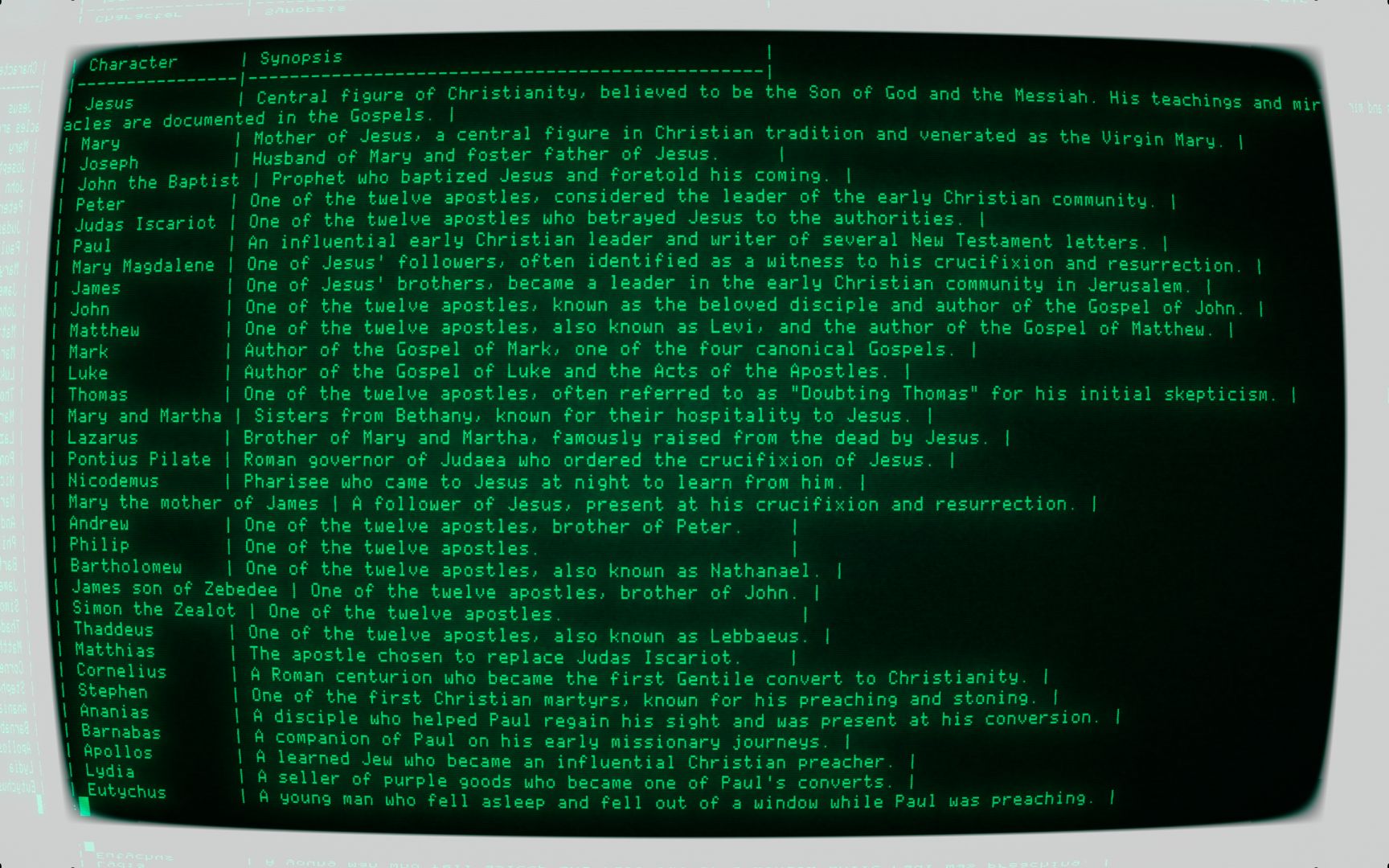
чи́жик~чири́к
Most of this stuff comes to me when I'm high, or, in my dream, as if I pull it from there.
And when it comes to me from dream it's always semi-forgotten, as if I can only recall some trace of it:
so I wrote about some connection between S and T, and now I can only guess it is connected to their articultory similarity, and because sefer yetzirah mentions S and not T as one of the mothers, it makes me think that distinct plosive forms are later development, and it makes me suspect that death~sooth~soothe~успокоение
The name is pronounced /ˌkɪrɪˈbæs/, Kiribass, as -ti in the Gilbertese language represents an s sound. Similarly, the name of its people, the I-Kiribati, is pronounced as e-Kiribass.
Revisiting the IEOUA thing in hebrew, in the context of יְהוֹשֻׁעַ
First I googled the variants:
יהו
יו
יה
ישוע the ܝܫܘܥ
Before I saw how it is in hebrew, I thought of four vowels of hebrew and ieua the יהעא or יהועא
which really made me think of יהוה
יא is yes in yiddish (cognate of german ja) and just 11 in hebrew
יָאֶה [яэ́] is proper, befitting, fitting, seemly, suitable in hebrew
יהוא is Jehu (Hebrew: יֵהוּא, romanized: Yēhūʾ, meaning "Yahu is He"; Akkadian: 𒅀𒌑𒀀 Ya'úa [ia-ú-a]; Latin: Iehu) was the tenth king of the northern Kingdom of Israel since Jeroboam I, noted for exterminating the house of Ahab. He was the son of Jehoshaphat,[1] grandson of Nimshi, and possibly great-grandson of Omri,[2] although the latter notion is not supported by the biblical text. His reign lasted for 28 years.
William F. Albright has dated his reign to 842–815 BCE, while E. R. Thiele offers the dates 841–814 BCE.[3] The principal source for the events of his reign comes from 2 Kings.[4]
that Yahu leads to Yahweh and it makes me think of iaeu the יאהע, but this thought didn't lead me far.
but then I looked some more, and here is what I found:
According to a user from Texas, U.S., the name Ieoua means "Ieoua would be the written spelling/translation of the vowel(1st definition) sound in all people. Other translations of this sound are 'Yahweh', 'Jesus' etc. It's the Word/Sound of God's Life in People".
it is also sang as mantra, more of it in videoo.html

Does this meme sugests that ᛦ~ᛏ or ᛣ~ᛏ? that RST is one claster and descend from the same protoletter
and another random cookie:

a funny typo cociety made ma believe that english co is sometimes also so
(I decide not to correct the ma instead of me, because I like it so)
Those sefers (sfirot) are linked with 22 lines~letters.
But Nordic Tree of life seems to be missing two lines on the central sides.
It seems they forgot (or misinterpreted) that only top and bottom sferes spheres have five linds links, others sixs.
So with those 2 letters we have 23 112 24 lines in the Nordic Tree of Life, just as many runes are in old futhark. Did they reform it as russians reformed the tzar's alphabet by shortening it, as chinese people reformed their script by simplifying it, not making it more complex.
Two reports of trees of life make them equally important: hebrew tree of life links the links to letters. Nordic tree of life explains
and that thing made me look into hebrew, and it is interesting that in hebrussian knowledge is еда́ (food) and it is also идеа́ (idea) and of course the דַעַת too. And it is interesting that sefirot of חָכמָה is amongst the variants:
יֶדַע knowledge, expertise, know-how
יְדִיעָה news, knowledge, information, report, item, acquaintance
דַעַת knowledge, wisdom
חָכמָה wisdom, intelligence, knowledge, prudence, insight
דֵעָה opinion, view, knowledge, mind, wisdom, insight
מַדָע science, knowledge
תְבוּנָה reason, wisdom, intelligence, understanding, prudence, knowledge
הַשׂכָּלָה education, enlightenment, knowledge, intelligence, schooling, erudition
יְדִיעוֹת knowledge, information, acquirements
דֵעָה tells that this י in יְדִיעָה is some prefix
מַדָע as science also uses that דֵעָ as a part of the word. מַ דָע
הַשׂכָּלָה as education is the мирской иудаизм, хаскала
יְדִיעוֹת sounds as идио́т is simply plural form of idea. ideas (ot is plural female suffix)
a drt drop of i yiddish
וויסן knowledge, learning
קענען knowledge
קענשאַפט knowledge
visn like vision
konon like canon
konsapt as concept
and I played with those sefirots and first approach brought this:

If it is tree, the crown is the crown, корона = крона.
Then foundation is the place where it was planted, or where it comes from, or the beginning of th trunk, and the Kingdom is the roots. Kingdom is where the tree reigns? But the crown is how above? So that worms don't get it.
Is knowledge abstract and thus dont linked to other parts of the tree?
If these trees of life describe the same thing, then why intellect is linked in Norsk and knowledge is not linked in hebraic?
or is it like this?:
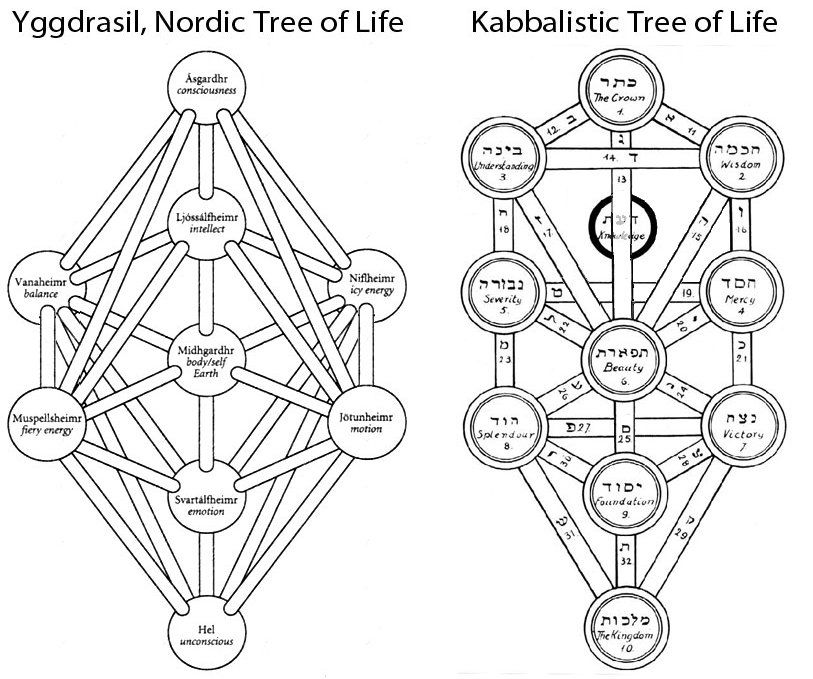
or even
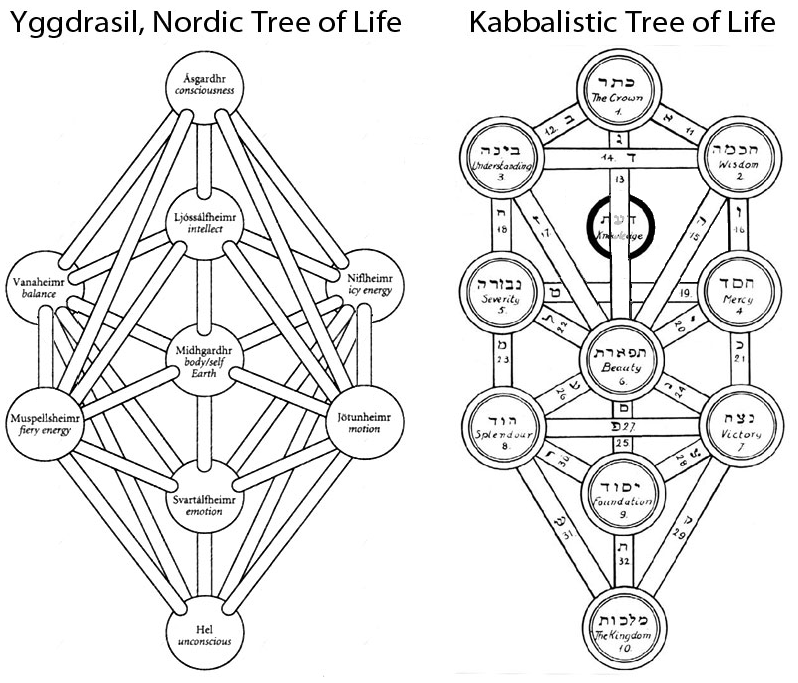
Yes, probably this one. Or the previous one. Yep, the previous one is more likely.
but actually it depends on how you look at it. It is a 3d figure in 2d projection.
Technically it could be that all my variants are wrong and the original one is true.
Nordic tree of life is more comprehensible, it goes from unconscious to emotion to body to intellect to conscious. Simple and (except maybe the body part) consequent progression, surrounded by the opposites of ice and fire, of motion and balance, of fire and ice.
Jewish tree of life seem to tell completely different story, but the knowledge is in the prominent central position, surrounded by wisdom and understanding (as if wise man have understood it all, weird, weird)
Severity as the opposite of mercy (is it fire as the opposite of cool?) but what is נבורה? This word can find links to sefirot, and maybe I will dive into it further, so far so good, so long.
Looking for some t reminding yggdrasil I think I saw somewhere, I foound γ, greek г looking exactly like ᚴ and even more like Y, and thy y this y only tells that й is of к, but γ is much more interesting, linking runes and greek, as writing systems using the same symbols, but placing them differently along the velar column. Thus arranging the alphabet from letters they used before they were given alphabet as a system.
Somebody collected all the sounds we could make different by being voiced or voiceless, plosives or fricatives, in one line, but I think I line was added after they lost information about the meaning of abcd as an order applied for every other line, except I-line and I think I-line was all the alphabet of pre-alphabetic period. IVXLCD could be the other one, and C after l reflects iklmn line, D goes after C, it is ABCD being اCD
and thus г~v again.
В утробе человек кристалл (структурирован и растёт. структурированно растёт (о вместо и меняет стилистику (диалектную окраску (fuck hegelians for using linguistic term in their pseudoscientific political )))
ɣɤ is another yggdrasil'like letter. But I was looking not for it but for some Y-like T
YggDraSil (Y-образное дерево силы? раздвоение верхушек делает седло меж ними местом силы? Удобно сидеть и прочна, высокое положение)
some ♈-like T, Some old greek, I think,
-г очень древний суффикс, непросто его встретить.
дрг и врг имеют его. вр in враг is вор & war
др is dear and дар (слово дорог имеет этот суффикс)
ро in дорога is the same ro in road.
-g is -d? or only with prefix до in russian? to =-= ть, до = -ed? or is га in дорога the d in road?
дорога торена (д и т are axe)
are
axe
In my alphabet X is axe now.
ax is ace? as s?
ass and ace both should be in s
ass as S if you see it as a figure standing on knees, thaen the C-part is попа.
a new interesting addon which is going to make become an abc book
Somebody helped me transliterate the first phrase of the girl here:
(mirror)
I heard "weed is not for fire" and I was corrected that it is "weed is not good for you"
I had to response:
I wonder why would I hear good as for, if it has something to do with F being called digamma (double Г) in greek, and suffix го (go) being read as во (vo) in russian, if some mysterious way г~v and 𐤂~ᚢ
ancient humans could predict the discovery of different forces on subatomic level because they knew magnets and sticky manner. I guess those to be electromagnetic force and the sticky matter to be chemical hydrogen bond. But what do I knowm, if it is important for you, ask opinions of specialistes
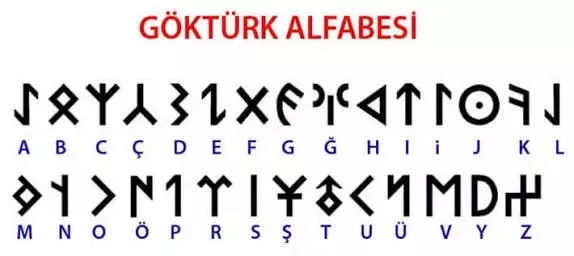
Is a very bright representation, and for the first time can I see some symmetry in turkikc runes:
𐰀𐰁𐰂𐰃𐰄𐰅𐰆𐰇𐰈𐰉𐰊𐰋𐰌𐰍𐰎𐰏𐰐𐰑𐰒𐰓𐰔𐰕𐰖𐰗𐰘𐰙𐰚𐰛𐰜𐰝𐰞𐰟𐰠𐰡𐰢𐰣𐰤𐰥𐰦𐰧𐰨𐰩𐰪𐰫𐰬𐰭𐰮𐰯𐰰𐰱𐰲𐰳𐰴𐰵𐰶𐰷𐰸𐰹𐰺𐰻𐰼𐰽𐰾𐰿𐱀𐱁𐱂𐱃𐱄𐱅𐱆𐱇𐱈
𐰺𐰻 and 𐰇𐰈 are some invariants? ю & ё
then so are a & e the 𐰀𐰁 actually standing one next to the other in unicode sequence. And to my surprise unicode sequence goes alphabetically having labial f after this vowel claster hungarian also has, but hungarian will be returned to after enochian script revealed to me.
𐰶 as the opposite of 𐰷, but I cannot find u the opposite of 𐰆 in unicode, and 𐰆 is surprisingly similar to ɔ
(it is surprising that enochian magic revealed itself to me as the truth when I finally linked turkic to norsk. And could turkc and norsk be cognates?
and some other representation for comparison:

𐰺𐰻 doesn't seem to be present in this one, is it because it is a variant of 𐰇𐰈?
the way 𐰀𐰁𐰂𐰃𐰄𐰅𐰆𐰇𐰈𐰉𐰊𐰋𐰌𐰍𐰎𐰏𐰐𐰑𐰒𐰓𐰔𐰕𐰖𐰗𐰘𐰙𐰚𐰛𐰜𐰝𐰞𐰟𐰠𐰡𐰢𐰣𐰤𐰥𐰦𐰧𐰨𐰩𐰪𐰫𐰬𐰭𐰮𐰯𐰰𐰱𐰲𐰳𐰴𐰵𐰶𐰷𐰸𐰹𐰺𐰻𐰼𐰽𐰾𐰿𐱀𐱁𐱂𐱃𐱄𐱅𐱆𐱇𐱈 goes in unicode allows me to have some sort of tradition, I am still bugged by lack of abecedaric artefacts. And I think I posted this image before and only now I noticed that it is messed up.
and looking for turkic I found something I didn't expect to find:

and it is from something very respectably autistic, I mirror it, but it is completely knew for me, and yes, the origin is not revealed, I only began the discovery. With decades of work and tons of text I still do, I only researched several writing systems, and only few of them do I know well. It is a work for many people from all over the world.
I know runes of those, most of people don';t, and I can see his competence by looking at what I know. And I immediately see that he makes shit up. But does he? Is it a coincidence that he transliterates "г" as "в"
One of two forms he placed for Hг is unknown to me. But then isn't it ᛩ? And at first I didn't recognize ᛖ, I think I should give this guy some credit, also because ᛇ is..
A letter of the Runic alphabet, present in the Elder Fuþark (ᛇ) and the Anglo-Saxon Fuþorc (ᛇ, called ēoh) representing /eo/ or /eːo/ and associated with the yew.
so his use of ᛐ as if it was ᛁ makes me go hm.. he deviates, but he doesn't go full rasteray
But by some semi-accident I find 𐲒 even before I copypasted ᛐ and v𐲒 is hungarian й. Does he confuses norsk and hungarian? Or did he make his own field researcxh and found some runic system existing in between hungarian and norsk runes?
Some transliterations of his scream mistranslitration, as it seems he mistakes ᛞ for ᛗ, but who could he know something I don't? His book was published after 2008 in southern osetia, and it makes me go suspicious, but then maybe it was the silver lining of that occupation? Or was it justified? What if putin is a good guy, imagine the horror of that universe.
and I also found this in that quest. Or, rother it found me.
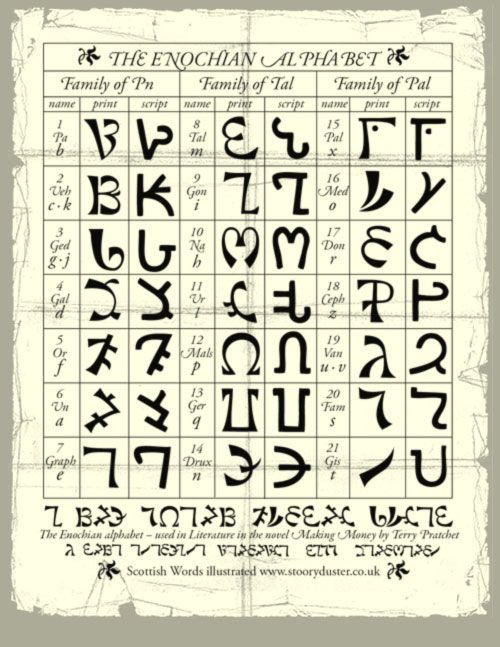
Here it is suddenly trustworthy: B is the first letter! T is the final one.
And this peculiar characteristic, making this maybe the source of all the alphabets. Big claim, large aspiration, so let's work and see if it is true.
I'm confused that the names of the letters have little connection to how they are read.
And wow, they're separated into three groups. And B M HХ, I know this, it is oghamic.
And suddenly I recognize the K, and I recognize B even though it is looking like v, like something in between.
Pa Veh Ged are very БВГ, but the transliteration is b c-k g-j is also very alphabetic, and in Г they actually meet. Are they different interpretation of the letters, and maybe only one of them is correct? Gal d are both in that alphabetic order, and that letter makes me think that g is that letter, also read g in latin and d in russian. Thus those triliteral and monoliteral names could come from different traditions using the same writing system or at least the same letters, as russian and english sometimes do.
Then goes vowel or f, both are justified in comparison to alphabetic order, but wtf, which is it? ultrainformative it is or encyphered?
What I recognized as V in the name of second letter is U, uch? ух? Either way, that letter represents similarity of different forms as print and cursive tend to be. It has print and cursive, which tells of some traditions
Then go Un the A, which may be the ã, and E the graph, which reflects её thing, but still what?
Tal M resembles m[m] and т[t] looking the same, so it is probably this protoletter. Its print form resembles that m, even though rotated. script form resembles t.
Then goes г ɪ (that gon i reminds me of a clock having т instead of ɪ) how else if nog graphically do we explain this thing? g~j? and this too, yes. It reminds both J and Г and г, ..and t too
na h definitely represents H[h] ~ Н[n] and it makes sense that N looks like M, because in hebrew cursive M looks like N, мы но нас, nos, us
ur~l reminds of r~lL
Because Tal and Na represent russian readings of т and н, I almost said that triliterals are of russian reading, but Gal giving the latin reading told me "it's complicated"
п-like Mals the p reflects Ger q (g and q are not that much apart) as p reflects q, and their labial-lingual dychotomy makes me pay attention to these letters and they make me think of horseshoe, and thus ...well, not thus, but actually Mals is the name of the horseshoe used for unlucky spell in hmm3 and I discussed it before. And it corresponds the tai-chi point of view that female (which I consider labial) to be bad. They say it's complicated, but in dualism it is simple really.
Drux n confuses me, even though articulatorly d is not too far from n, and is it in the same family as i, l, m? And is it only certain that the letter is in this family, but the position within the family is varied from one nation to the other or from one table to the other even within one scolar's writings? This is questioning yet demanding actual research of the material.
And publishing my own book I seem to better notice the typose, so it's obviously not Pn family, but Pa family. Is it father's family? I should look into the words for relatives to know which language it was invented in.
And I take that Pa the Father version because family of tal is family of m, the mother I suppose.
Then isn't Family of pal is family of wife or husband? or a family of friend? Families of your parents and of your consort is natural state of affairs, I suppose it to be so, and names of relatives this pantheon could easily represent. Also aet is family so is aicme, I think is.
P of pal ~ h is how it is in japanese, the same symbol for both p and h (p is diacritized with a dot of theirs, ゜~。)
Med o are both labial, semitic ם and م do remind o ممم is mmm, so ignore the swash. The form of the letter reminds me of 𐎎, but mayb nah.
Don r reminds me of d opposing r in k-symmetry, but it went nowhere. Both are lingual, voiced, they are similar, D~Р(Р is greek and russian R)
Ceph z I can recognized for c~z (shapes are probably q and ч)
Van u-v is vav and it makes me satisfied, that the names are connected
Fam s makes me think of femme and she, and of θ, of course,
Gis t end is with T, following S (and G follows F< what is going on here!)
the first actual appreach to research enochian it was. And it was good.
b m h could also be вы мы~me he
Comparin hungarian runes to turkic runes, I can see something interesting: 𐲔 is k in hungarian rovas, and in doesn't have 𐰀𐰁 counterpart, so 𐰀𐰁 are one thing and thus it reminds how old-semitic A(𐤀) looks like latin K (and in some fonts even much more than in phoenician. And even א looks similar to K even though more like Х, and it makes me remember ᛅ and +like Ⰰ and its +like makes me recall ᚐ and ᚑ makes me fascinated with doubleness of Ⱁ and u of ᚒ being placed after ᚑ of o makes me think that this vocalization's expansion could be what turned trinities into pentities. pen of penis and tities of titties? Is it how the idea of divine hermaphroditism appeared and which Bathomets's images represent?
ع غ may be directly related to E, because غ sounds as ה and غ standing the last in abjad makes it ωlike, which it is graphically similar and also because ع stands where o is. Vowels seem to be the most confusing element of every language, thus position of vowels is arbitrary, thus AEIOU being sacred makes sense, but graphically isn't it
A
I
V
or
A
O
V
? but nah, o is combination of a and u and can be substituted by one or the other. AIU is legendary.
Marking my notebooks as Laws Novel Politics I noticed that they're NLP but in other order, and I like my order more because it is alphabetic, and to my surprise they go at the same intervals, and л~n~п
And I went on and was surprised by r after p (russian r is р) and is it I or J reflecting l or L?
Let's try them both..
A C E G I K M O Q S U W Y
B D F H J L N P R T V X Z
or
A C E G I L N P R T V X Z
B D F H K M O Q S U W Y
?
Honestly I like the one having Ʌ and V and Г and L in the same half more. But was it an alphabet of 25? I would suspect 21 with no U, W, not sure ofY, probably K is gone. Italians and Irish not having JK in their alphabet may show their being special, and both nations are with initial I, I is for Initial? Italian dominance over catholics, Irish overrepresentation a little less known than Jewish overrepresentation, and behold, J is I and Israel has initial i as well. I think russians should be named Ivanovskaya (на всю ивановскую = на весь мир (по крайней мере на русскоязычный мир) вполне устоявшееся выражение) are English secretly of I? is Espana of I? In russian it is. But both english and spanish have JK in their alphabets, are they golems of Irish and Italian? Do Irish play victim like Jews do? Even if they were victims, russians were victims, but they don't play victim, not yet.
is low in flower love? then flower must be влюблятель, which makes perfect sense.
is автра in завтра after? it would be nice, but it's заутро. Is after related to russian завтра?
Because we look into turkic runes, and turks via mongols and maybe before that too, simply geographically relate us to east aesian easian

I want to remove christianity from me a little bit. Now also because I want to look the non-christian cultures. But what got me to write it is christian gesture of christinization or whatever they call it, I want to forget that I knew them.
So let's use this table to reconstruct the other one.
Spending whole trippo for mechanical comparison, what a shame, I have plastered the understanding:

to the level of being able to understand that messy table:

And that picture above this one shows that the image before that one is in somewhat alphabetic order, but the inconsistencies allow to hypothesize that the order is not just alphabetic, but genuine related to it, otherwise why would L be before Г? and why would Z be before П
Variants of the script were found from Mongolia and Xinjiang in the east to the Balkans in the west. The preserved inscriptions were dated to between the 8th and 10th centuries.
These alphabets are divided into four groups by Kyzlasov (1994)
Asiatic group (includes Orkhon proper)
Eurasiatic group
Southern Europe group
The Asiatic group is further divided into three related alphabets:
Orkhon alphabet, Göktürks, 8th to 10th centuries
Yenisei alphabet,
Talas alphabet, a derivative of the Yenisei alphabet, Kangly or Karluks 8th to 10th centuries. Talas inscriptions include Terek-Say rock inscriptions found in the 1897, Koysary text, Bakaiyr gorge inscriptions, Kalbak-Tash 6 and 12 inscriptions, Talas alphabet has 29 identified letters.
The Eurasiatic group is further divided into five related alphabets:
Achiktash, used in Sogdia 8th to 10th centuries.
South-Yenisei, used by the Göktürks 8th to 10th centuries.
Two especially similar alphabets: the Don alphabet, used by the Khazars, 8th to 10th centuries; and the Kuban alphabet, used by the Bulgars, 8th to 13th centuries. Inscriptions in both alphabets are found in the Pontic–Caspian steppe and on the banks of the Kama river.
Tisza, used by the Pechenegs 8th to 10th centuries.
A number of alphabets are incompletely collected due to the limitations of the extant inscriptions. Evidence in the study of the Turkic scripts includes Turkic-Chinese bilingual inscriptions, contemporaneous Turkic inscriptions in the Greek alphabet, literal translations into Slavic languages, and paper fragments with Turkic cursive writing from religion, Manichaeism, Buddhist, and legal subjects of the 8th to 10th centuries found in Xinjiang.
and I found the abecedaries! and they were not far, on the wiki:
Oldest known Turkic alphabet listings, Ryukoku and Toyok manuscripts. Toyok manuscript transliterates Turkic alphabet into the Old Uyghur alphabet. Per Кызласов, Игорь Леонидович [in Russian] (1994). Рунические письменности евразийских степей. Восточная литература РАН. ISBN 978-5-02-017741-3.
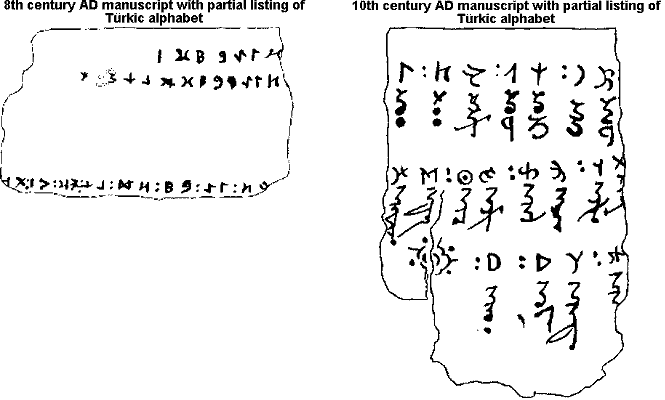
Ye (/jiː/) is a second-person, plural, personal pronoun (nominative), spelled in Old English as "ge".
In dutch it is jij and gij
yͤ can you believe it! the alternative form of ye. from bottom up. like runes and ogham
aͣ bͣ cͣ dͣ eͣ fͣ gͣ hͣ iͣ jͣ kͣ lͣ mͣ nͣ oͣ pͣ qͣ rͣ sͣ tͣ uͣ vͣ wͣ xͣ yͣ zͣ aͤ bͤ cͤ dͤ eͤ fͤ gͤ hͤ iͤ jͤ kͤ lͤ mͤ nͤ oͤ pͤ qͤ rͤ sͤ tͤ uͤ vͤ wͤ xͤ yͤ zͤ aͥ bͥ cͥ dͥ eͥ fͥ gͥ hͥ iͥ jͥ kͥ lͥ mͥ nͥ oͥ pͥ qͥ rͥ sͥ tͥ uͥ vͥ wͥ xͥ yͥ zͥ aͦ bͦ cͦ dͦ eͦ fͦ gͦ hͦ iͦ jͦ kͦ lͦ mͦ nͦ oͦ pͦ qͦ rͦ sͦ tͦ uͦ vͦ wͦ xͦ yͦ zͦ aͧ bͧ cͧ dͧ eͧ fͧ gͧ hͧ iͧ jͧ kͧ lͧ mͧ nͧ oͧ pͧ qͧ rͧ sͧ tͧ uͧ vͧ wͧ xͧ yͧ zͧ
aͨ bͨ cͨ dͨ eͨ fͨ gͨ hͨ iͨ jͨ kͨ lͨ mͨ nͨ oͨ pͨ qͨ rͨ sͨ tͨ uͨ vͨ wͨ xͨ yͨ zͨ aͩ bͩ cͩ dͩ eͩ fͩ gͩ hͩ iͩ jͩ kͩ lͩ mͩ nͩ oͩ pͩ qͩ rͩ sͩ tͩ uͩ vͩ wͩ xͩ yͩ zͩ aͪ bͪ cͪ dͪ eͪ fͪ gͪ hͪ iͪ jͪ kͪ lͪ mͪ nͪ oͪ pͪ qͪ rͪ sͪ tͪ uͪ vͪ wͪ xͪ yͪ zͪ aͫ bͫ cͫ dͫ eͫ fͫ gͫ hͫ iͫ jͫ kͫ lͫ mͫ nͫ oͫ pͫ qͫ rͫ sͫ tͫ uͫ vͫ wͫ xͫ yͫ zͫ aͬ bͬ cͬ dͬ eͬ fͬ gͬ hͬ iͬ jͬ kͬ lͬ mͬ nͬ oͬ pͬ qͬ rͬ sͬ tͬ uͬ vͬ wͬ xͬ yͬ zͬ aͭ bͭ cͭ dͭ eͭ fͭ gͭ hͭ iͭ jͭ kͭ lͭ mͭ nͭ oͭ pͭ qͭ rͭ sͭ tͭ uͭ vͭ wͭ xͭ yͭ zͭ aͮ bͮ cͮ dͮ eͮ fͮ gͮ hͮ iͮ jͮ kͮ lͮ mͮ nͮ oͮ pͮ qͮ rͮ sͮ tͮ uͮ vͮ wͮ xͮ yͮ zͮ aͯ bͯ cͯ dͯ eͯ fͯ gͯ hͯ iͯ jͯ kͯ lͯ mͯ nͯ oͯ pͯ qͯ rͯ sͯ tͯ uͯ vͯ wͯ xͯ yͯ zͯ
A aͣ bͣ cͣ dͣ eͣ fͣ gͣ hͣ iͣ jͣ kͣ lͣ mͣ nͣ oͣ pͣ qͣ rͣ sͣ tͣ uͣ vͣ wͣ xͣ yͣ zͣ
E aͤ bͤ cͤ dͤ eͤ fͤ gͤ hͤ iͤ jͤ kͤ lͤ mͤ nͤ oͤ pͤ qͤ rͤ sͤ tͤ uͤ vͤ wͤ xͤ yͤ zͤ
I aͥ bͥ cͥ dͥ eͥ fͥ gͥ hͥ iͥ jͥ kͥ lͥ mͥ nͥ oͥ pͥ qͥ rͥ sͥ tͥ uͥ vͥ wͥ xͥ yͥ zͥ
O aͦ bͦ cͦ dͦ eͦ fͦ gͦ hͦ iͦ jͦ kͦ lͦ mͦ nͦ oͦ pͦ qͦ rͦ sͦ tͦ uͦ vͦ wͦ xͦ yͦ zͦ
U aͧ bͧ cͧ dͧ eͧ fͧ gͧ hͧ iͧ jͧ kͧ lͧ mͧ nͧ oͧ pͧ qͧ rͧ sͧ tͧ uͧ vͧ wͧ xͧ yͧ zͧ
C aͨ bͨ cͨ dͨ eͨ fͨ gͨ hͨ iͨ jͨ kͨ lͨ mͨ nͨ oͨ pͨ qͨ rͨ sͨ tͨ uͨ vͨ wͨ xͨ yͨ zͨ
D aͩ bͩ cͩ dͩ eͩ fͩ gͩ hͩ iͩ jͩ kͩ lͩ mͩ nͩ oͩ pͩ qͩ rͩ sͩ tͩ uͩ vͩ wͩ xͩ yͩ zͩ
H aͪ bͪ cͪ dͪ eͪ fͪ gͪ hͪ iͪ jͪ kͪ lͪ mͪ nͪ oͪ pͪ qͪ rͪ sͪ tͪ uͪ vͪ wͪ xͪ yͪ zͪ
M aͫ bͫ cͫ dͫ eͫ fͫ gͫ hͫ iͫ jͫ kͫ lͫ mͫ nͫ oͫ pͫ qͫ rͫ sͫ tͫ uͫ vͫ wͫ xͫ yͫ zͫ
R aͬ bͬ cͬ dͬ eͬ fͬ gͬ hͬ iͬ jͬ kͬ lͬ mͬ nͬ oͬ pͬ qͬ rͬ sͬ tͬ uͬ vͬ wͬ xͬ yͬ zͬ
T aͭ bͭ cͭ dͭ eͭ fͭ gͭ hͭ iͭ jͭ kͭ lͭ mͭ nͭ oͭ pͭ qͭ rͭ sͭ tͭ uͭ vͭ wͭ xͭ yͭ zͭ
V aͮ bͮ cͮ dͮ eͮ fͮ gͮ hͮ iͮ jͮ kͮ lͮ mͮ nͮ oͮ pͮ qͮ rͮ sͮ tͮ uͮ vͮ wͮ xͮ yͮ zͮ
X aͯ bͯ cͯ dͯ eͯ fͯ gͯ hͯ iͯ jͯ kͯ lͯ mͯ nͯ oͯ pͯ qͯ rͯ sͯ tͯ uͯ vͯ wͯ xͯ yͯ zͯ
| Unicode code point |
character | UTF-8 encoding (hex) |
Unicode character name |
|---|---|---|---|
| U+ |
ͣ | cd a3 | COMBINING LATIN SMALL LETTER A |
| U+ |
ͤ | cd a4 | COMBINING LATIN SMALL LETTER E |
| U+ |
ͥ | cd a5 | COMBINING LATIN SMALL LETTER I |
| U+ |
ͦ | cd a6 | COMBINING LATIN SMALL LETTER O |
| U+ |
ͧ | cd a7 | COMBINING LATIN SMALL LETTER U |
| U+ |
ͨ | cd a8 | COMBINING LATIN SMALL LETTER C |
| U+ |
ͩ | cd a9 | COMBINING LATIN SMALL LETTER D |
| U+ |
ͪ | cd aa | COMBINING LATIN SMALL LETTER H |
| U+ |
ͫ | cd ab | COMBINING LATIN SMALL LETTER M |
| U+ |
ͬ | cd ac | COMBINING LATIN SMALL LETTER R |
| U+ |
ͭ | cd ad | COMBINING LATIN SMALL LETTER T |
| U+ |
ͮ | cd ae | COMBINING LATIN SMALL LETTER V |
| U+ |
ͯ | cd af | COMBINING LATIN SMALL LETTER X |
| U+ |
ᪿ | e1 aa bf | COMBINING LATIN SMALL LETTER W BELOW |
| U+ |
ᫀ | e1 ab 80 | COMBINING LATIN SMALL LETTER TURNED W BELOW |
| U+ |
᷊ | e1 b7 8a | COMBINING LATIN SMALL LETTER R BELOW |
| U+ |
ᷓ | e1 b7 93 | COMBINING LATIN SMALL LETTER FLATTENED OPEN A ABOVE |
| U+ |
ᷔ | e1 b7 94 | COMBINING LATIN SMALL LETTER AE |
| U+ |
ᷕ | e1 b7 95 | COMBINING LATIN SMALL LETTER AO |
| U+ |
ᷖ | e1 b7 96 | COMBINING LATIN SMALL LETTER AV |
| U+ |
ᷗ | e1 b7 97 | COMBINING LATIN SMALL LETTER C CEDILLA |
| U+ |
ᷘ | e1 b7 98 | COMBINING LATIN SMALL LETTER INSULAR D |
| U+ |
ᷙ | e1 b7 99 | COMBINING LATIN SMALL LETTER ETH |
| U+ |
ᷚ | e1 b7 9a | COMBINING LATIN SMALL LETTER G |
| U+ |
ᷛ | e1 b7 9b | COMBINING LATIN LETTER SMALL CAPITAL G |
| U+ |
ᷜ | e1 b7 9c | COMBINING LATIN SMALL LETTER K |
| U+ |
ᷝ | e1 b7 9d | COMBINING LATIN SMALL LETTER L |
| U+ |
ᷞ | e1 b7 9e | COMBINING LATIN LETTER SMALL CAPITAL L |
| U+ |
ᷟ | e1 b7 9f | COMBINING LATIN LETTER SMALL CAPITAL M |
| U+ |
ᷠ | e1 b7 a0 | COMBINING LATIN SMALL LETTER N |
| U+ |
ᷡ | e1 b7 a1 | COMBINING LATIN LETTER SMALL CAPITAL N |
| U+ |
ᷢ | e1 b7 a2 | COMBINING LATIN LETTER SMALL CAPITAL R |
| U+ |
ᷣ | e1 b7 a3 | COMBINING LATIN SMALL LETTER R ROTUNDA |
| U+ |
ᷤ | e1 b7 a4 | COMBINING LATIN SMALL LETTER S |
| U+ |
ᷥ | e1 b7 a5 | COMBINING LATIN SMALL LETTER LONG S |
| U+ |
ᷦ | e1 b7 a6 | COMBINING LATIN SMALL LETTER Z |
| U+ |
ᷧ | e1 b7 a7 | COMBINING LATIN SMALL LETTER ALPHA |
| U+ |
ᷨ | e1 b7 a8 | COMBINING LATIN SMALL LETTER B |
| U+ |
ᷩ | e1 b7 a9 | COMBINING LATIN SMALL LETTER BETA |
| U+ |
ᷪ | e1 b7 aa | COMBINING LATIN SMALL LETTER SCHWA |
| U+ |
ᷫ | e1 b7 ab | COMBINING LATIN SMALL LETTER F |
| U+ |
ᷬ | e1 b7 ac | COMBINING LATIN SMALL LETTER L WITH DOUBLE MIDDLE TILDE |
| U+ |
ᷭ | e1 b7 ad | COMBINING LATIN SMALL LETTER O WITH LIGHT CENTRALIZATION STROKE |
| U+ |
ᷮ | e1 b7 ae | COMBINING LATIN SMALL LETTER P |
| U+ |
ᷯ | e1 b7 af | COMBINING LATIN SMALL LETTER ESH |
| U+ |
ᷰ | e1 b7 b0 | COMBINING LATIN SMALL LETTER U WITH LIGHT CENTRALIZATION STROKE |
| U+ |
ᷱ | e1 b7 b1 | COMBINING LATIN SMALL LETTER W |
| U+ |
ᷲ | e1 b7 b2 | COMBINING LATIN SMALL LETTER A WITH DIAERESIS |
| U+ |
ᷳ | e1 b7 b3 | COMBINING LATIN SMALL LETTER O WITH DIAERESIS |
| U+ |
ᷴ | e1 b7 b4 | COMBINING LATIN SMALL LETTER U WITH DIAERESIS |
ᚹ ~ Ꝩꝩ ~ Ƿƿ
Vend (Ꝩ, ꝩ) is a letter of Old Norse. It was used to represent the sounds /u/, /v/, and /w/. Ꝩ. Ꝩ ꝩ. Writing cursive forms of Ꝩ.
Wynn or wyn (Ƿ ƿ; also spelled wen, ƿynn, and ƿen) is a letter of the Old English alphabet, where it is used to represent the sound /w/
.jpg)
on the right is the Y I was looking for. Not T it is, Y.
E᪴ e᪴ U+1AB4 (зажав ctrl и U набрать 1AB4 непосредственно после символа над которым три точки нужны)
ABCD
EFGH
IKLMN
OPRSTÐ
UǷXYZ
A
BC
DEF
GHIKL
MNOPR
SÐUǷX
YZ still may make the set if Y is consonant, I guess it is then. Weird. I found the axial symmetry to make sense of Y, and here well.. if it wasn't sem-tImes vowel I'd never find it. And what good is it? Well, some good it is I haven't figured yet what good exactly.
I think table from that thing would be nice in here:
https://en.wikipedia.org/wiki/Diacritic
But then they say it goes with the coda too:
A, a /ɑ(ː)/
B, b /b/
C, c /k/, /tʃ/
D, d /d/
E, e /e(ː)/
F, f /f/, [v]
G, g /g/, [ɣ], /j/
H, h /h/, [x], [ç]
I, i /i(ː)/
K, k /k/
L, l /l/
M, m /m/
N, n /n/
O, o /o(ː)/
P, p /p/
R, r /r/
S, s /s/
T, t /t/
U, u /u(ː)/, /w/ (rare)
X, x /ks/
Y, y /y(ː)/
Ƿ, ƿ /w/
Ð, ð /θ/, [ð]
Þ, þ /θ/, [ð]
Æ, æ /æ(ː)/
ABCD
EFGH
IKLMN
OPRST
UXYǷÐÞÆ
ABCD
EFGH
IKLMN
OPRST
UX
YǷÐÞÆ
A
BC
DEF
GHIKL
MNOPR
STUXY
ǷÐÞÆ
And no those linears don't align into the axial.
ABCD
EFGH
IKLMN
OPRSTUX
YǷÐÞÆ
A
BC
DEF
GHIKL
MNOPR
STVXYǷÐÞÆ
and no, noway, even if we recognize U as consonant, quite a stretch, btw, Æ is definitely vowel and thus we don't get anyhere in axial sense.
𐌰 𐌱 𐌲 𐌳
𐌴 𐌵 𐌶 𐌷 𐌸
𐌹 𐌺 𐌻 𐌼 𐌽 𐌾
𐌿 𐍀 𐍁 𐍂 𐍃 𐍄
𐍅 𐍆 𐍇 𐍈 𐍉 𐍊
𐌰
𐌱 𐌲
𐌳 𐌴 𐌵
𐌶 𐌷 𐌸 𐌹 𐌺 𐌻 𐌼
𐌽 𐌾 𐌿 𐍀 𐍁
𐍂 𐍃 𐍄 𐍅 𐍆 𐍇 𐍈
𐍉 𐍊
𐍉 is vowel, so again alas. But then this is a tradition almost lost, I don't know if there are genuine abecedarias, so some of those letters could belong not. like sampi would break axial for greeks if I was to use it.
and if we remove the numerals, will we get exactly greek alphabet? Is gothic a form of greek as hebrew is a form of phoenician?
𐌰 𐌱 𐌲 𐌳
𐌴 𐌵 𐌶 𐌷 𐌸
𐌹 𐌺 𐌻 𐌼 𐌽 𐌾
𐌿 𐍀 𐍂 𐍃 𐍄
𐍅 𐍆 𐍇 𐍈 𐍉
𐌰
𐌱 𐌲
𐌳 𐌴 𐌵
𐌶 𐌷 𐌸 𐌹 𐌺 𐌻 𐌼
𐌽 𐌾 𐌿 𐍀 𐍂
𐍃 𐍄 𐍅 𐍆 𐍇
𐍈 𐍉 and once again no, because wiki tells gothic script used the letter between E and Z not only as numeral. And without it we'd have normal greek alphabet, but no, not exactly normal, the ending is structurally different
𐌰
𐌱 𐌲
𐌳 𐌴 𐌶
𐌷 𐌸 𐌹 𐌺 𐌻
𐌼 𐌽 𐌾 𐌿 𐍀 𐍂 𐍃
𐍄 𐍅 𐍆
𐍇 𐍈 𐍉
but I take too much liberty. I have a professor who specializes in gothic, I should have her consult me.
я её ю (1лицо, 3лицо, 2лицо? lmn?)
тачанка ~ тачка? ~ танка?
тачка тащить
A Б Г Д
Е В Ж З
И М Н Л
О П К Т
У Ф Х С
А
Б Г
Д Е В
Ж З И М Л
Н О П
К Т
Wish to end it with V is understood, but what I can see here is if Л is for лево, it went right to left or boustrophedon. And then R is Ж, as it is in chinese.
It is interesting, that my first alphabet wanted the ufhs line, but it seems t is the final one, and EFHѲ the voiceless line the EFHS, then IMNL or IWNL is it's counterpart? I think 16 is a great number for an alphabet, 15 would be even better. No A!
Б Г
Д Е В
Ж З И М Л
Н О П
К Т
high return (высокая доходность)
return возвращаться
верный возвращается
верн ~ тёрн
э~o (bothe round)
br tag is alphabetic. b is the first letter. r is lingual
r is of rst
br is a random tag (or rather often tag, the main tag, the masters of the world know these details, and I type these tob tomes here)
and yet I saw bd in it. it is not often R has some play or say
and here it is also like LR(r of br tells us to write left to right. b~l is of Г~)
𐲥 𐳥 and 𐲤 𐳤 sſ and ʃ
be right
these are two letters I know for sure
right is also reign (право)
| being a (or is it all their vowels, depending on diacritics?) in arabic, i and l in latin, and now they say 𐲥 is s in hungarian, and in hebrew it is v the ו and n the ן and are they יון and I read them as ivn: vowel, labial, lingual! Jews Rock!
ivn is not far from om, so let's find the average phonetics.
yawn!
зевать значит потягиваться всем телом
So though shape may take any value, depending on the nation it is, and national canons are full of hidden understanding. And I reveal it well.
Even alphabetic. odd is not.
I may want to collect alphabetic words. site
1 3 2 (i mi ni)
винить значит видеть
вибачте = извините
украинцы произносят в на европейский манер, а также демонстрируют единство слов do и to (to is до[do] in russian)
бачитi = видеть
ь = i, roji doci but russians feel a to be different from я, so they dislike latin mostly for transliterations like mor moa
lover~loser is rather based in reality of relationships, he who doesn't love doesn't lose but get rid of.
and it correlates w looking like ш in cursive (is cursive called as such because preserved secret, sacred, сокрытые, сокровтые, ы~у as y~у and u~и. So were there only two vowels? two syllables! ba and be)
бабу бы это мужское, и раньше видимо было бабу
в то время всё что знает баба это "бабье" (I first wrote бабе, but then something weird happened and ь appeared in there)
ba by ye ah
I'm tired of watching the initial image of the volume, so I don't know whay this file is not exactly lagging. And as I said it, it began to lag. So oh happy day!
vol. 27
...

